1. Navigating Obstacles on the Path to Abbotcy
When it comes to the path to abbotcy, it's hardly a walk in the park. It's filled with challenges that test one's leadership skills, ability to navigate obstacles and make tough decisions. The road to abbotcy is riddled with unforeseen challenges that, if not tackled head-on, can derail one's journey to power. However, the beauty of the path to abbotcy is that it helps prepare one for the challenges that come with leadership. Here are some insights on how to navigate these challenges and overcome obstacles on the path to abbotcy:
1. Stay focused on your goals: One of the biggest challenges on the path to abbotcy is staying focused on your goals. It's easy to get sidetracked by challenges and obstacles that arise along the way. However, it's important to stay focused on your goals and not let anything distract you from achieving them. For example, if one of your goals is to increase revenue for your business, you may face challenges such as a declining market, increased competition, or a shortage of resources. However, by staying focused on your goal and developing a strategic plan, you can overcome these obstacles and achieve success.
2. build a strong support system: No one can navigate the path to abbotcy alone. It's essential to build a strong support system of mentors, advisors, and allies who can provide guidance and support when you need it most. For example, if you're facing a tough decision, you may seek the advice of a mentor who has experience in a similar situation. Alternatively, you may turn to an ally who can provide support and encouragement when you're feeling discouraged.
3. Embrace failure as a learning opportunity: Failure is a natural part of the path to abbotcy. However, it's important to embrace failure as a learning opportunity rather than a setback. By analyzing your failures and learning from your mistakes, you can develop the skills and knowledge necessary to overcome future challenges. For example, if your business fails to meet revenue targets, you can analyze the reasons why and develop a new strategy to achieve success in the future.
4. Develop resilience: Resilience is the ability to bounce back from adversity and overcome challenges. It's an essential skill for anyone on the path to abbotcy. Developing resilience requires a positive attitude, a willingness to learn from failure, and the ability to adapt to change. For example, if your business is facing a crisis such as a pandemic, you may need to pivot your strategy to adapt to the changing market conditions.
5. Take calculated risks: Finally, the path to abbotcy requires taking calculated risks. While it's important to weigh the potential risks and rewards of any decision, sometimes the best course of action is to take a leap of faith. For example, if you're considering launching a new product line, you may need to take a calculated risk and invest resources into research and development. By taking calculated risks, you can position yourself for success on the path to abbotcy.
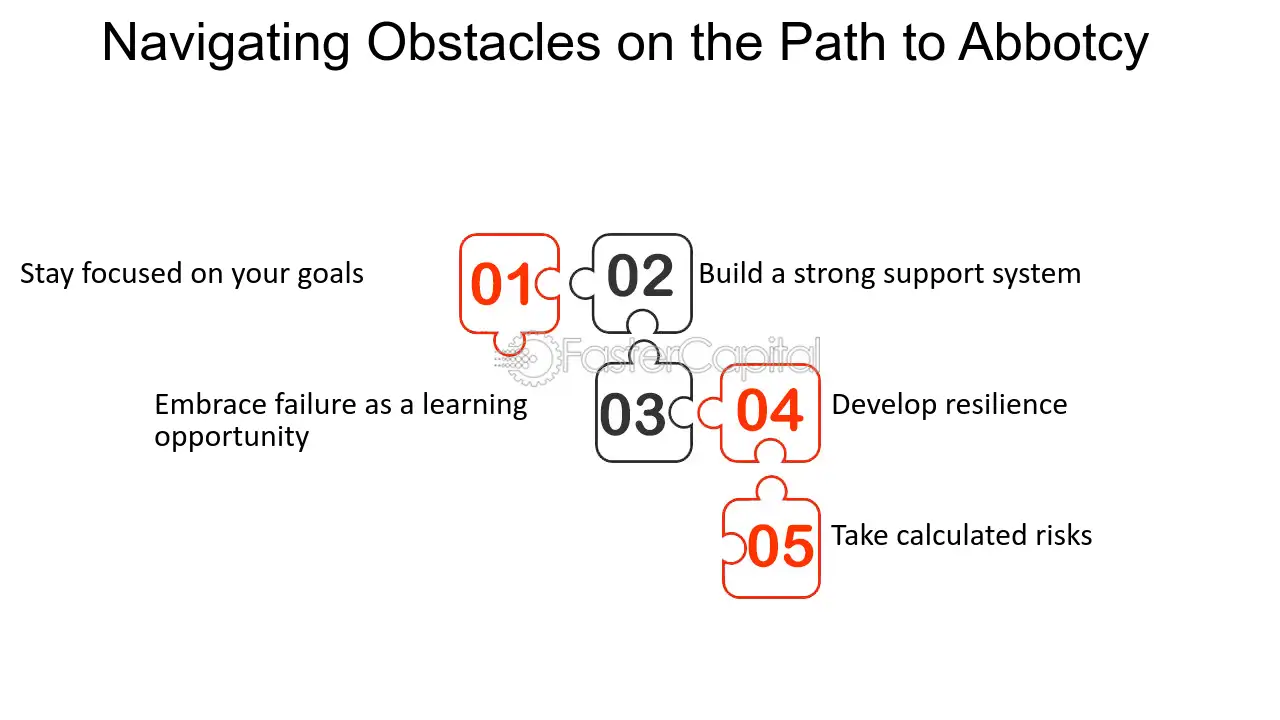
Navigating Obstacles on the Path to Abbotcy - Abbotcy: Rise to Power: Navigating the Path to Abbotcy
2. Navigating Obstacles and Conflicts Together
Choosing a life partner is a significant decision that can impact the rest of one's life. While there are many factors to consider, one of the most important aspects is the ability to overcome challenges and navigate obstacles together. Every relationship faces conflicts, both big and small, and it's how partners handle them that determines the strength and longevity of the relationship. Overcoming challenges together requires effective communication, empathy, and a willingness to compromise. It also requires a shared commitment to the relationship and a belief that, together, partners can overcome any obstacle.
To navigate obstacles and conflicts together, partners should consider the following:
1. Effective Communication: Communication is key to any successful relationship, and it becomes even more critical when facing challenges. Both partners should feel comfortable expressing their thoughts and feelings, even if they might be difficult to hear. They should also be active listeners and seek to understand their partner's perspective. effective communication means being honest, respectful, and open to compromise.
2. Empathy: When facing challenges, it's essential to understand and acknowledge each other's feelings. Showing empathy means recognizing and validating your partner's emotions, even if you don't necessarily agree with them. It's about putting yourself in your partner's shoes and seeing the situation from their point of view. By showing empathy, partners can build trust and strengthen their connection.
3. Willingness to Compromise: No two people will always agree on everything, and that's okay. Partners should be willing to compromise and find middle ground when facing conflicts. It's about finding a solution that works for both parties, even if it means giving up something individually. By compromising, partners demonstrate that they value the relationship more than being right.
4. Shared Commitment: Overcoming challenges together requires a shared commitment to the relationship. Both partners should be invested in making the relationship work, even when things get tough. It means prioritizing the relationship and making it a top priority. When partners are committed to each other, they can tackle any obstacle that comes their way.
Navigating obstacles and conflicts together is a crucial component of any successful relationship. By practicing effective communication, showing empathy, being willing to compromise, and sharing a commitment to the relationship, partners can overcome any challenge that comes their way. It's about working together as a team and believing in each other's abilities to face adversity.
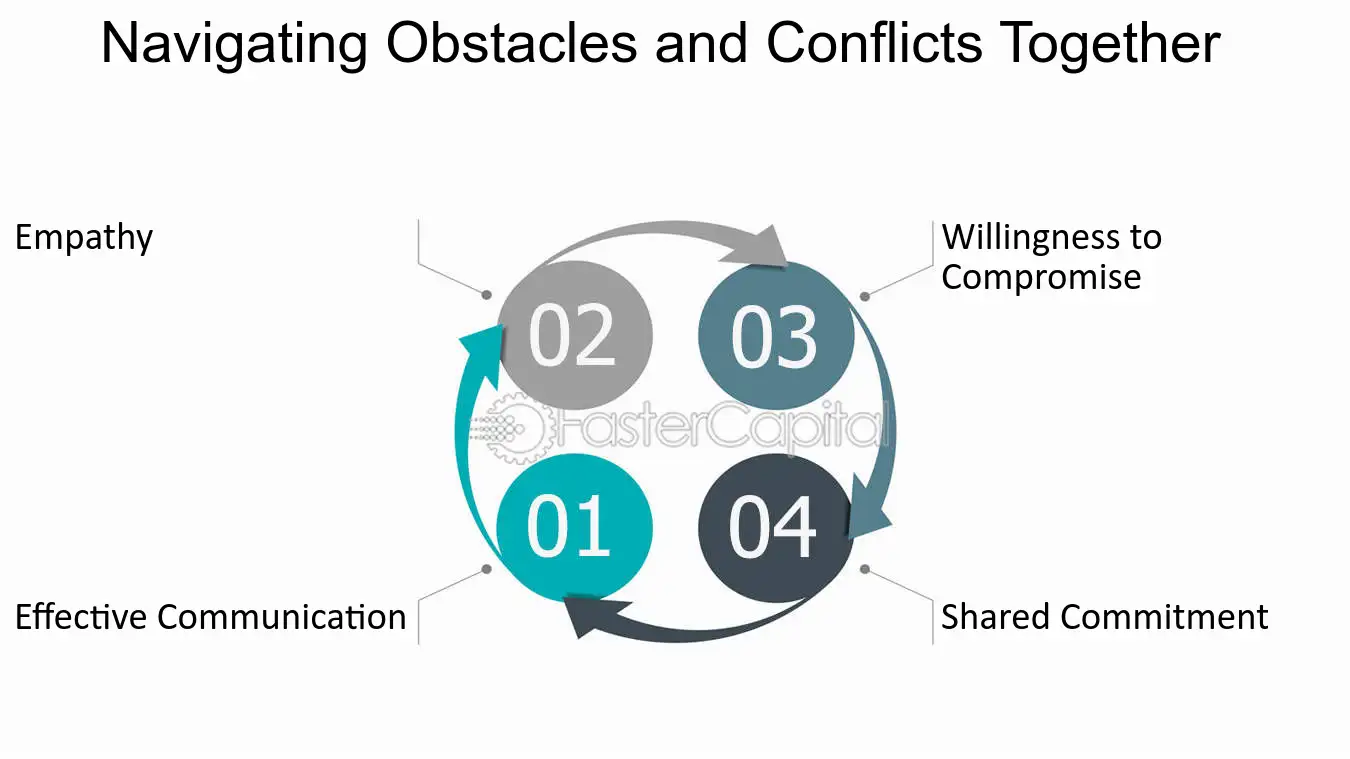
Navigating Obstacles and Conflicts Together - Aptly chosen: The Art of Selection: Aptly Chosen Life Partners
3. Navigating Obstacles in Capitalizing on Discrepancies
1. Market Volatility and Liquidity Constraints
One of the potential challenges in capitalizing on discrepancies in money at call price is the volatility and liquidity constraints that can arise in the market. Market conditions can change rapidly, making it difficult to identify and take advantage of arbitrage opportunities. Moreover, liquidity constraints can limit the ability to execute trades quickly and efficiently, which is crucial in capturing price discrepancies. For example, during periods of heightened market volatility, bid-ask spreads may widen, making it more challenging to buy and sell securities at favorable prices. Therefore, careful consideration of market conditions and liquidity is essential when navigating obstacles in capitalizing on discrepancies.
2. Regulatory and Compliance Considerations
Navigating discrepancies in money at call price also requires careful attention to regulatory and compliance considerations. Different jurisdictions may have varying rules and regulations governing the trading and pricing of financial instruments. For instance, regulatory bodies may impose restrictions on certain types of transactions or require specific reporting and documentation. Ignoring these regulatory and compliance considerations can result in legal consequences and reputational damage. Therefore, it is essential to have a thorough understanding of the regulatory landscape and ensure compliance with all relevant rules and regulations.
3. Counterparty Risk and Creditworthiness
Another consideration when capitalizing on money at call price discrepancies is the risk associated with counterparties and their creditworthiness. Engaging in arbitrage transactions involves entering into agreements with other parties, such as brokers or financial institutions. The creditworthiness of these counterparties becomes crucial, as default or insolvency can lead to significant losses. conducting thorough due diligence on counterparties, assessing their financial stability, and establishing risk mitigation strategies are essential steps to minimize counterparty risk. Case studies have shown instances where failure to assess counterparty risk appropriately has resulted in substantial financial losses for arbitrageurs.
4. Technology and Infrastructure
In today's highly digitalized world, technology and infrastructure play a crucial role in navigating obstacles in capitalizing on discrepancies. Efficient and reliable trading platforms, data analysis tools, and connectivity to markets are essential for identifying and executing arbitrage opportunities. Investing in robust technology infrastructure and staying updated with the latest advancements can provide a competitive edge. Additionally, having access to real-time data and analytical tools can assist in identifying potential discrepancies and making informed trading decisions.
5. Monitoring and Risk Management
Monitoring positions and managing risk is vital when capitalizing on money at call price discrepancies. Regularly monitoring relevant market factors, such as interest rates, credit spreads, and market sentiment, helps identify potential opportunities and assess their profitability. effective risk management practices, including setting stop-loss orders, implementing position limits, and diversifying portfolios, can help mitigate potential losses. Furthermore, continuously reassessing the risk-reward profile of arbitrage positions and adjusting strategies accordingly is crucial in navigating obstacles and ensuring long-term success.
In summary, capitalizing on discrepancies in money at call price can present various challenges and considerations. Market volatility, regulatory compliance, counterparty risk, technology infrastructure, and risk management are all factors that need careful attention. By understanding and addressing these challenges, investors can navigate obstacles more effectively and increase their chances of capitalizing on arbitrage opportunities.
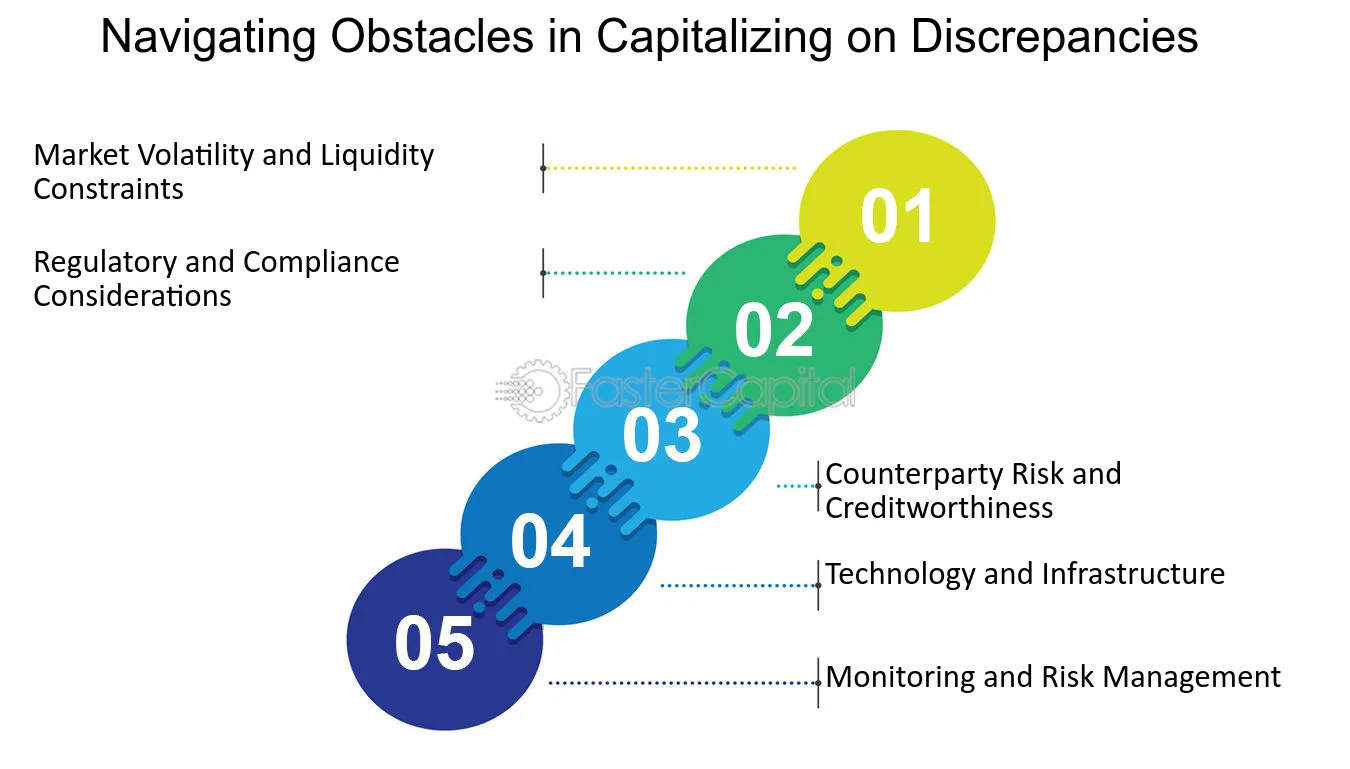
Navigating Obstacles in Capitalizing on Discrepancies - Arbitrage opportunities: Capitalizing on Money at Call Price Discrepancies
4. Navigating Obstacles on the Path to Progress
Navigating the winding path of progress is rarely a straightforward journey. It's a road riddled with obstacles, challenges, and unforeseen detours that often make us question whether we are moving in the right direction. In our pursuit of assured progress, we must recognize that facing challenges head-on is an inherent part of the process. It's through these obstacles that we learn, grow, and ultimately find the strength to persevere.
1. Resilience is Key: Challenges test our resolve, and resilience becomes our most valuable asset. Consider the story of J.K. Rowling, whose initial Harry Potter manuscript was rejected multiple times before becoming a global phenomenon. Her unwavering determination and refusal to give up in the face of adversity illustrate how resilience can turn setbacks into stepping stones.
2. Adaptation and Flexibility: Progress often necessitates change, and sometimes that change is unexpected. The ability to adapt and be flexible in our approach is crucial. Kodak, once a giant in the photography industry, failed to adapt to the digital age, ultimately leading to their decline. This serves as a stark reminder that being rigid in the face of change can impede progress.
3. Mental Resilience: It's not just external obstacles we must overcome; our own inner challenges can be equally daunting. Self-doubt, fear, and anxiety can paralyze our journey. However, with practices like mindfulness and positive self-talk, we can cultivate mental resilience to conquer these inner obstacles and continue our path to progress.
4. Embracing Failure: Failure is not the end; it's a valuable teacher. Take SpaceX, for instance, which faced numerous rocket launch failures before achieving their monumental successes. Elon Musk's willingness to embrace failure and learn from it has played a pivotal role in the company's achievements.
5. Seeking Guidance: Progress doesn't need to be a solitary endeavor. Seeking guidance and mentorship can provide valuable insights and shortcuts past obstacles. Mark Zuckerberg, for example, had Steve Jobs as a mentor, guiding him in the early days of Facebook. Learning from someone who has navigated similar challenges can significantly expedite progress.
6. Persistence and Patience: The path of assured progress often requires unwavering persistence and patience. Think of the Wright brothers, who faced countless failures and setbacks before achieving powered flight. Their unyielding determination is a testament to the power of persistence.
7. Innovation and Creativity: Sometimes, the challenges we face demand innovative solutions. Companies like Tesla, with their electric cars and sustainable energy products, are challenging the status quo by innovating their way past obstacles and driving progress in the process.
8. Team Collaboration: Progress is rarely a one-person show. Collaboration within a team can help tackle complex challenges. For example, the Apollo moon missions were the result of thousands of individuals working together, overcoming immense technical and logistical hurdles.
9. Continuous Learning: In the ever-evolving landscape of progress, learning is an ongoing process. Be it in business or personal growth, a commitment to continuous learning equips us with the knowledge and skills to overcome new obstacles and seize opportunities.
10. Adversity as Motivation: Some individuals use adversity as their greatest motivation. The story of Malala Yousafzai, who survived an assassination attempt and now advocates for girls' education worldwide, showcases how adversity can transform into a powerful driving force for progress.
In the journey of assured progress, obstacles are not roadblocks but stepping stones. They challenge us, shape our character, and lead us to new horizons. It is in overcoming these challenges that we truly discover the path to certain and continuous growth.
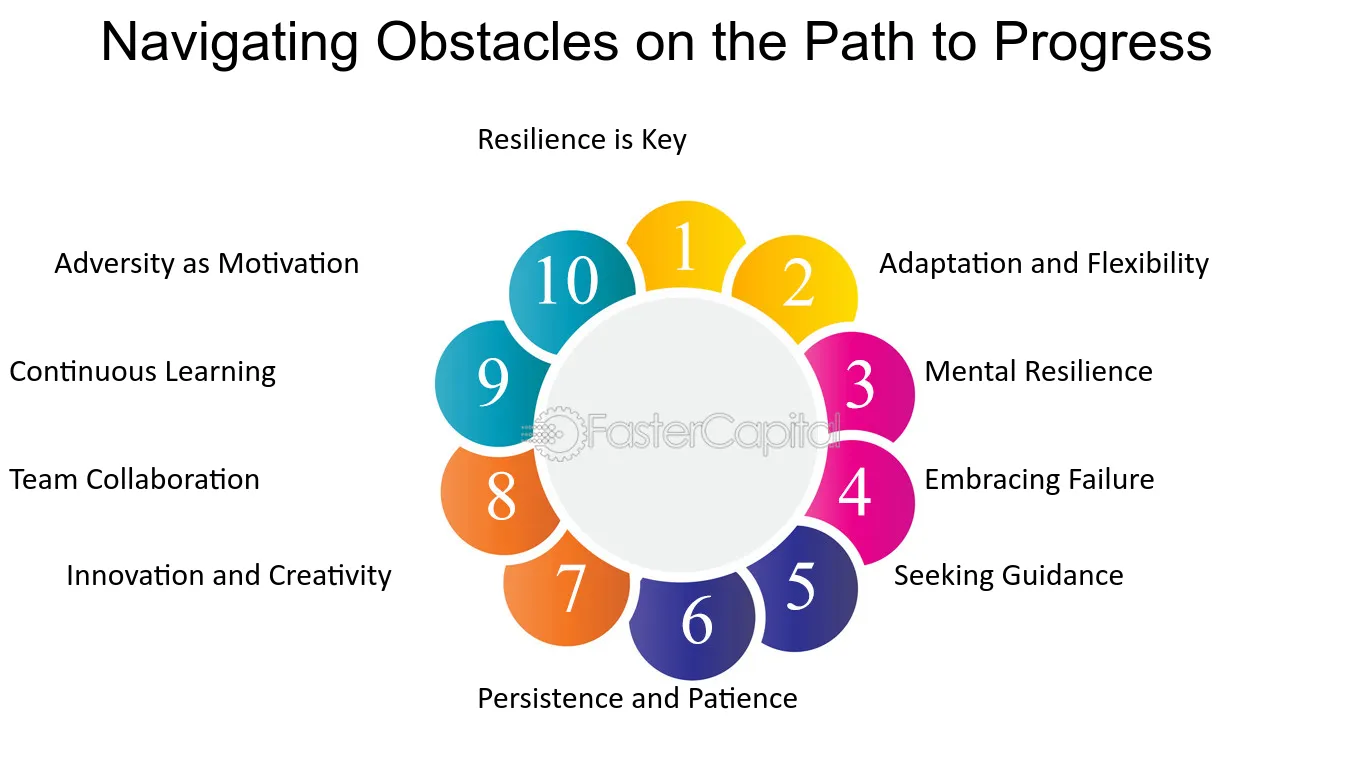
Navigating Obstacles on the Path to Progress - Assured Progress: The Path of Certain and Continuous Growth
5. Navigating the obstacles in achieving financial inclusion
1. understanding the Importance of financial Inclusion
Financial inclusion is a vital aspect of creating a more equitable society, ensuring that individuals and businesses have access to affordable financial services and products. However, achieving financial inclusion is not without its obstacles. In this section, we will explore some of the challenges that hinder the progress towards financial inclusion and discuss strategies to overcome them.
2. Limited Access to Banking Services
One of the primary challenges in achieving financial inclusion is the limited access to banking services, particularly in rural and underserved areas. Many individuals and businesses in these regions lack access to traditional banking institutions, making it difficult for them to save, invest, and access credit. To overcome this challenge, innovative solutions such as mobile banking and agent banking have proven to be effective. For instance, in Kenya, the introduction of M-Pesa, a mobile money transfer service, has allowed millions of unbanked individuals to access financial services through their mobile phones.
3. Low Financial Literacy Levels
Another significant hurdle in achieving financial inclusion is the low levels of financial literacy among marginalized communities. Without a basic understanding of financial concepts, individuals may struggle to make informed decisions regarding their money, leading to a cycle of poverty and exclusion. To address this challenge, financial education programs and initiatives play a crucial role. For example, organizations like women's World Banking have implemented financial literacy training for women in developing countries, empowering them to take control of their finances and make better financial decisions.
4. Lack of Identification Documents
In many developing countries, a significant barrier to financial inclusion is the lack of proper identification documents. Without valid identification, individuals may face challenges in opening bank accounts, accessing credit, or even receiving government benefits. To overcome this obstacle, digital identification systems are being implemented in various countries. India's Aadhaar system, which provides a unique identification number to each citizen, has enabled millions of previously excluded individuals to access financial services and government subsidies.
5. Gender Inequality in Financial Inclusion
Gender inequality is another challenge that needs to be addressed in the pursuit of financial inclusion. Women, particularly in developing countries, often face greater barriers to accessing financial services and products compared to men. This disparity can be attributed to various factors, including cultural norms, limited control over financial resources, and lack of collateral. To promote gender equality in financial inclusion, initiatives like microfinance programs specifically tailored for women, such as the Grameen Bank in Bangladesh, have proven to be effective in empowering women economically.
6. Regulatory and Policy Challenges
Finally, regulatory and policy challenges can hinder progress towards financial inclusion. Complex regulations, high compliance costs, and outdated policies can discourage financial service providers from extending their reach to underserved populations. Governments and regulatory bodies need to create an enabling environment that encourages innovation and supports inclusive financial services. For instance, in Mexico, the introduction of a regulatory sandbox framework has allowed fintech companies to test innovative solutions while ensuring consumer protection.
Achieving financial inclusion requires overcoming various challenges. By addressing limited access to banking services, improving financial literacy levels, implementing digital identification systems, promoting gender equality, and creating supportive regulatory frameworks, we can bridge the gap and empower individuals and communities to participate fully in the economy.
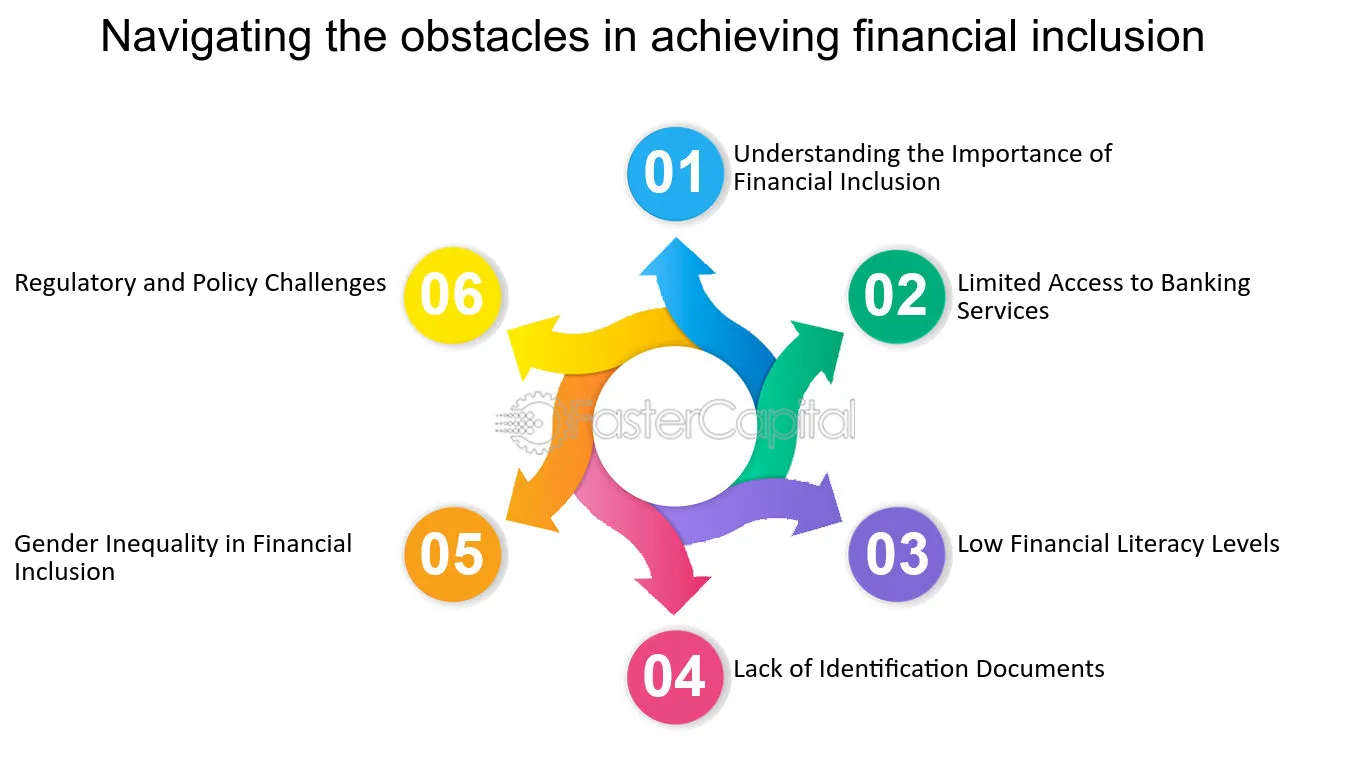
Navigating the obstacles in achieving financial inclusion - BankNet: Bridging the Gap for Financial Inclusion
6. Navigating Obstacles and Criticisms
When trying to revolutionize an industry as large and complex as the automotive industry, challenges are bound to arise. Shai Agassi's Better Place was no exception to this rule, and faced its fair share of obstacles and criticisms throughout its existence. From financial difficulties to technological limitations, navigating the road to success was far from easy. However, the team behind Better Place refused to back down, and tackled each challenge head-on. In this section, we will explore some of the major obstacles and criticisms faced by Better Place, and how they were addressed.
1. Financial difficulties: One of the biggest challenges faced by Better Place was financial. The company required a significant amount of capital to fund its ambitious plans, and investors were initially hesitant to put their money behind a relatively untested concept. Despite this, Agassi was able to secure funding from a number of sources, including venture capital firms and government grants. However, this money was not enough to sustain the company in the long term, and Better Place eventually filed for bankruptcy in 2013.
2. Technological limitations: Another major challenge faced by Better Place was technological limitations. In order to make electric vehicles a viable option for consumers, the company needed to develop a network of charging stations and battery swap stations that were both efficient and convenient. However, the technology required to achieve this was still in its infancy, and the process of developing and implementing it was slow and expensive. Additionally, the company faced criticism from some experts who argued that battery swap technology was not a viable solution for the long term.
3. Public skepticism: Despite the ambitious plans and significant investment behind Better Place, the company faced a great deal of skepticism from the public. Many people were hesitant to invest in electric vehicles due to concerns about range anxiety, or the fear of being stranded with a dead battery. Additionally, some critics argued that the company's business model was flawed, and that it was unlikely to be successful in the long term.
4. Competition: Finally, Better Place faced competition from a number of other companies in the electric vehicle market. This included established automakers like Nissan and Tesla, as well as startups like Fisker and Coda. While Better Place had a unique approach to the market, it was ultimately unable to compete with these companies on a larger scale.
Despite these challenges, the team behind Better Place remained dedicated to their mission of creating a sustainable future for transportation. While the company ultimately did not succeed, it paved the way for future innovation in the electric vehicle industry, and demonstrated the potential for new and innovative solutions to old problems.
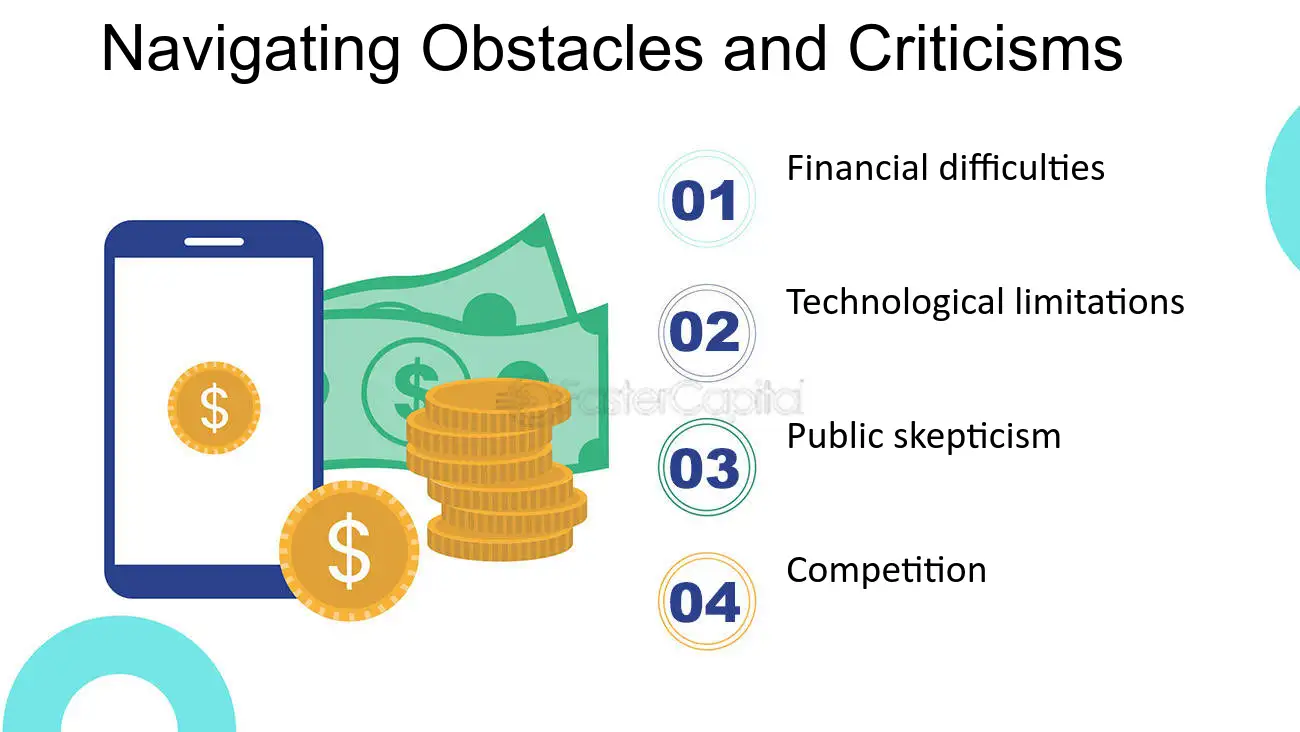
Navigating Obstacles and Criticisms - Better Place: Shai Agassi s Revolutionary Electric Vehicle Company
7. Navigating Obstacles to Synergy in Diversified Companies
Navigating obstacles to synergy in diversified companies can be a complex and challenging task. While the concept of synergy suggests that the whole is greater than the sum of its parts, achieving this harmonious integration of diverse business units is often easier said than done. In this section, we will explore some of the common challenges faced by diversified companies when it comes to harnessing synergy, and discuss strategies to overcome these hurdles.
1. Cultural Differences: One of the primary challenges in diversified companies is managing cultural differences among various business units. Each unit may have its own unique set of values, norms, and ways of doing things. These differences can lead to misunderstandings, conflicts, and hinder collaboration. To overcome this challenge, it is crucial for leaders to foster a culture of inclusivity and open communication. Encouraging cross-functional teams and providing cultural sensitivity training can help bridge the gap between different units and promote synergy.
Example: When a multinational conglomerate acquired a smaller company from a different country, they faced significant cultural differences. To address this challenge, the acquiring company organized team-building activities that encouraged employees from both entities to interact and understand each other's perspectives. This helped create a shared sense of purpose and fostered collaboration across the organization.
2. Lack of Communication: Effective communication is vital for synergy in diversified companies. However, due to geographical dispersion or organizational silos, communication breakdowns can occur. Miscommunication or lack of information sharing can result in duplication of efforts, missed opportunities, and decreased efficiency. To overcome this challenge, companies should invest in robust communication channels such as intranets, video conferencing tools, and project management software. Regular meetings and transparent reporting structures can also facilitate effective communication across business units.
Example: A diversified technology company struggled with poor communication between its research and development (R&D) department and marketing team. As a result, innovative products developed by R&D were not effectively marketed to customers. To address this issue, the company implemented a collaborative platform where R&D and marketing teams could share information, exchange ideas, and work together on product launches. This improved communication led to better alignment between the two departments and increased synergy.
3. Competing Priorities: In diversified companies, different business units may have conflicting priorities or goals. This can create internal competition rather than collaboration, hindering synergy. To overcome this challenge, it is essential for leaders to establish a clear strategic direction that aligns the objectives of all business units. Regular communication and goal-setting sessions can help ensure that

Navigating Obstacles to Synergy in Diversified Companies - Beyond the Sum of Parts: Harnessing Synergy in Diversified Companies
8. Grassroots Organizing Startups Leading the Way:Overcoming Challenges: Navigating Obstacles in Grassroots Organizing Startups
1. Identifying and Prioritizing Challenges
When starting a grassroots organizing startup, it's important to be aware of the potential challenges you may encounter along the way. By identifying and prioritizing these obstacles, you can develop effective strategies to overcome them. Here are some common challenges faced by grassroots organizing startups:
2. Limited Resources
One of the most significant challenges for grassroots organizing startups is the lack of resources, both financial and human. Limited funding can make it difficult to hire a dedicated team or invest in necessary tools and technologies. Additionally, a small team may struggle to shoulder the workload required for successful organizing efforts.
To overcome this challenge, startups can look for creative ways to maximize their resources. For example, they can collaborate with like-minded organizations or community members to share costs and expertise. Utilizing volunteers can also be a great way to expand the team without straining the budget.
3. Building a Supportive Network
Establishing a strong network of supporters is crucial for the success of grassroots organizing startups. However, gaining the trust and engagement of individuals and organizations can be challenging, especially in the early stages.
To build a supportive network, startups should focus on developing authentic relationships with potential partners and supporters. This can be achieved through consistent communication, active participation in relevant community events, and showcasing the impact of the organization's work through success stories and testimonials.
For example, a startup advocating for environmental sustainability could collaborate with local schools or businesses to host educational workshops or organize community clean-up events. By actively engaging with the community, the startup can demonstrate its commitment and attract like-minded individuals and organizations.
4. Overcoming Resistance and Opposition
Grassroots organizing startups often face resistance and opposition from various stakeholders who may not align with their mission or goals. This can range from individuals who are skeptical of the organization's impact to powerful entities with conflicting interests.
To navigate this challenge, startups must be prepared to address concerns and objections effectively. This may involve conducting thorough research and providing evidence-based arguments to counter opposition. Additionally, building alliances with other organizations or influential individuals who share similar values can strengthen the startup's position and amplify its voice.
An example of overcoming opposition is the civil Rights movement in the United States. Despite facing immense resistance from powerful institutions and individuals, grassroots organizers, such as Martin Luther King Jr. And Rosa Parks, mobilized communities and garnered national support, ultimately leading to significant social and legislative changes.
5. Adapting to Changing Circumstances
In the rapidly evolving landscape of grassroots organizing, startups must be agile and adaptable. External factors such as political shifts, social trends, and technological advancements can significantly impact the effectiveness of organizing strategies.
To overcome this challenge, startups should continuously monitor and analyze the external environment. By staying informed and proactive, they can adjust their tactics and approaches accordingly. Embracing new technologies and digital platforms can also enhance the reach and impact of grassroots organizing efforts.
For instance, during the COVID-19 pandemic, many grassroots organizing startups quickly adapted their strategies by leveraging online platforms for virtual events, digital campaigns, and remote volunteer opportunities.
In conclusion, navigating obstacles in grassroots organizing startups requires a combination of strategic planning, resourcefulness, and adaptability. By identifying and prioritizing challenges, building a supportive network, overcoming resistance, and adapting to changing circumstances, startups can overcome obstacles and build a better future through their organizing efforts.
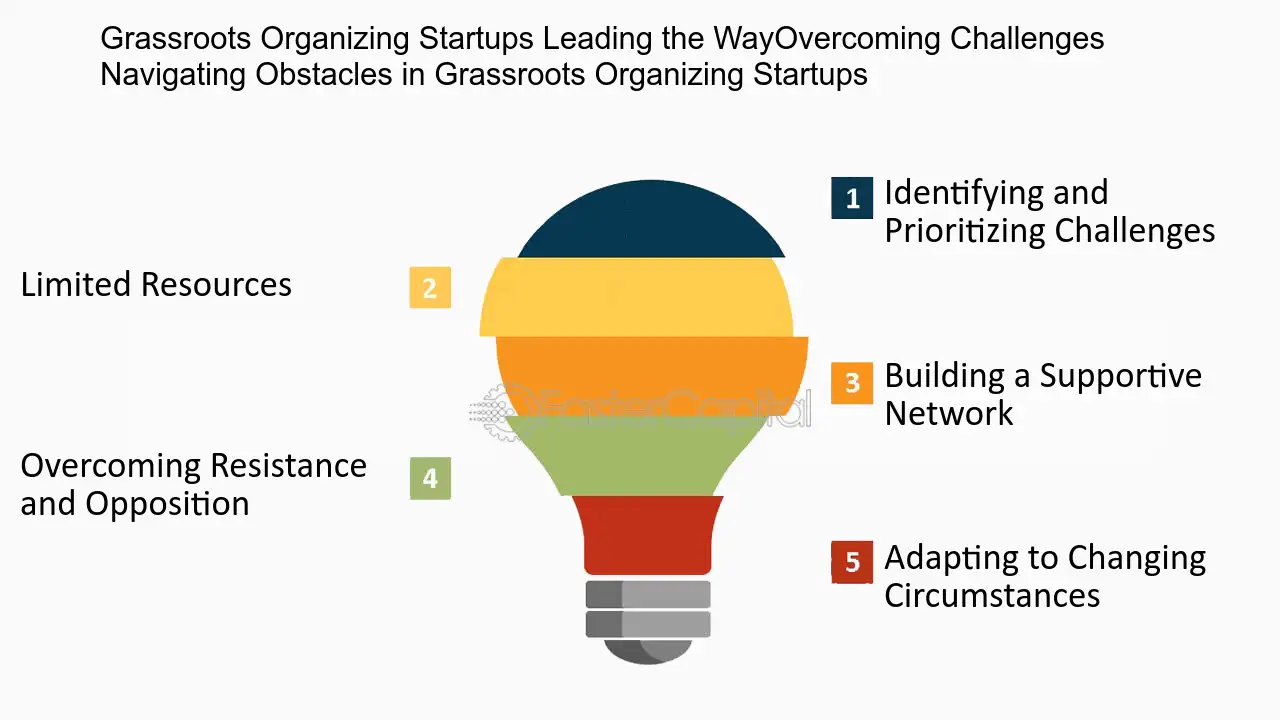
Grassroots Organizing Startups Leading the Way:Overcoming Challenges: Navigating Obstacles in Grassroots Organizing Startups - Building a Better Future: Grassroots Organizing Startups Leading the Way
9. Navigating Obstacles and Maximizing ChatGPT's Potential
1. Data Quality and Bias
Ensuring the quality and diversity of training data is crucial to mitigating biases in AI-generated content. Organizations must carefully curate and validate the data used to train ChatGPT to minimize potential biases and ensure fair representation.
2. Fine-Tuning and Customization
Customizing and fine-tuning ChatGPT can be complex and time-consuming. Organizations must invest resources in understanding the model's limitations and adapting it to their specific requirements. This process involves selecting appropriate prompts, providing feedback, and conducting rigorous testing to improve performance.
3. User Feedback and Adaptability
AI-generated content should be receptive to user feedback and adaptable to changing user needs. Organizations must establish feedback mechanisms to gather user insights and fine-tune ChatGPT accordingly. By continuously iterating based on user feedback, organizations can optimize user experience and address emerging challenges.
Working on launching your tech product?
FasterCapital helps you test and launch your product and provides all the technical and business expertise needed
10. Inspiring Stories of Successful Packaging Startups:Overcoming Challenges: Navigating Obstacles in the Circular Economy Journey
1. Setting Clear Sustainability Goals: One of the first challenges in navigating the circular economy journey is setting clear and achievable sustainability goals. Startups in the packaging industry need to define what they want to achieve in terms of reducing waste, increasing recycling rates, and implementing sustainable practices. For example, a startup might aim to use 100% recyclable or compostable materials in their packaging within a certain timeframe. By setting specific goals, companies can have a clear direction and measure their progress along the way.
2. Sourcing Sustainable Materials: Finding and sourcing sustainable materials is another obstacle that packaging startups often face. It can be challenging to identify suppliers that offer eco-friendly alternatives to traditional packaging materials. However, there are success stories to draw inspiration from. For instance, companies like Ecovative have successfully developed packaging materials made from mycelium, the root structure of mushrooms. Such innovative solutions not only reduce waste but also offer a biodegradable and renewable alternative to traditional packaging materials.
3. Designing for Reusability and Recyclability: Designing packaging that is both reusable and recyclable is essential for a successful circular economy journey. Startups need to consider the entire lifecycle of their packaging, from production to disposal, and find ways to minimize its impact on the environment. For example, Loop, a company that partners with major brands, has created a system where consumers can return empty packaging to be cleaned, refilled, and reused. This innovative approach eliminates single-use packaging and promotes a more circular model.
4. Collaborating with Stakeholders: Collaboration is key to overcoming challenges in the circular economy journey. Startups need to engage with various stakeholders, such as suppliers, customers, and recycling facilities, to ensure the success of their sustainable packaging initiatives. For instance, Bureo, a company that creates skateboards from recycled fishing nets, collaborates with fishing communities and recycling partners to collect and transform discarded nets into high-quality products. By involving multiple stakeholders, startups can create a more interconnected and efficient circular economy ecosystem.
5. Educating Consumers: Educating consumers about the importance of sustainable packaging and encouraging behavior change is crucial in the circular economy journey. Startups need to communicate the benefits of their eco-friendly packaging solutions and raise awareness about the impact of traditional packaging on the environment. For example, Lush, a cosmetics company, uses naked packaging (packaging-free products) and provides information about its sustainable practices to educate consumers about the need for a more circular approach. By empowering consumers with knowledge, startups can drive demand for sustainable packaging and accelerate the transition to a circular economy.
In conclusion, navigating the circular economy journey in the packaging industry comes with its fair share of challenges. However, by setting clear goals, sourcing sustainable materials, designing for reusability and recyclability, collaborating with stakeholders, and educating consumers, startups can overcome these obstacles and become champions of the circular economy. These examples of successful packaging startups demonstrate that with determination, innovation, and a commitment to sustainability, it is possible to create a more sustainable and circular future.
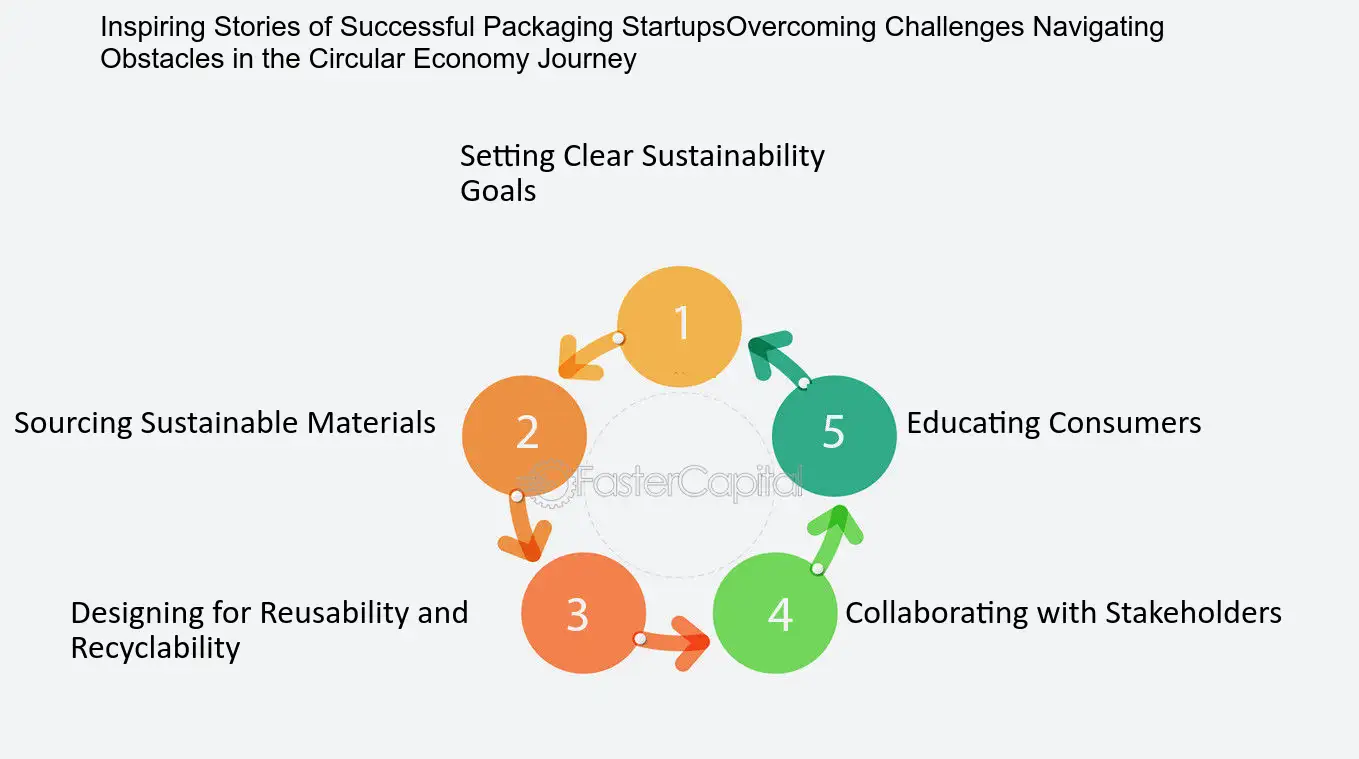
Inspiring Stories of Successful Packaging Startups:Overcoming Challenges: Navigating Obstacles in the Circular Economy Journey - Circular Economy Champions: Inspiring Stories of Successful Packaging Startups
11. Navigating Common Obstacles
Gardening, like any other activity, comes with its own set of challenges. As people come together to cultivate a community garden, they may encounter a variety of obstacles. These can range from issues with soil quality to conflicts among garden members. However, with the right mindset and strategies, these obstacles can be overcome. In this section, we will explore some of the most common challenges faced by community gardeners and provide solutions to help gardeners navigate these hurdles.
1. Soil Quality: One of the most important factors in growing a successful garden is having good quality soil. However, many community gardens are located in urban areas where the soil may be contaminated with heavy metals or other harmful substances. To address this issue, gardeners can consider using raised beds or container gardening. These methods allow gardeners to control the quality of the soil and reduce the risk of contamination. Additionally, adding compost or other organic matter to the soil can help improve its quality.
2. Watering: Adequate watering is essential for the health of plants, but it can be a challenge in community gardens. Some gardeners may not have the time or resources to water their plots regularly, while others may overwater their plants, leading to root rot or other issues. To address this challenge, gardeners can consider setting up a watering schedule or system. This can involve designating specific days for watering or installing a drip irrigation system that delivers water directly to the plants' roots.
3. Conflicts among Garden Members: Community gardens are intended to bring people together, but conflicts among members can arise. These may be related to issues such as plot size, gardening practices, or disagreements over how the garden should be managed. To prevent conflicts, it is important to establish clear rules and guidelines for the garden. This can include policies related to plot size and usage, as well as guidelines for how members should interact with each other. Additionally, regular communication and meetings can help ensure that everyone is on the same page.
4. Pest Management: Pests such as insects and rodents can wreak havoc on a garden, causing damage to crops and reducing yields. To manage pests, gardeners can consider a variety of strategies. These may include using natural pest control methods such as companion planting or introducing beneficial insects to the garden. Additionally, physical barriers such as netting or row covers can help keep pests at bay.
In summary, community gardening can be a rewarding and enriching experience, but it does come with its own set of challenges. By implementing the strategies outlined above, gardeners can navigate these obstacles and cultivate a thriving and healthy garden.
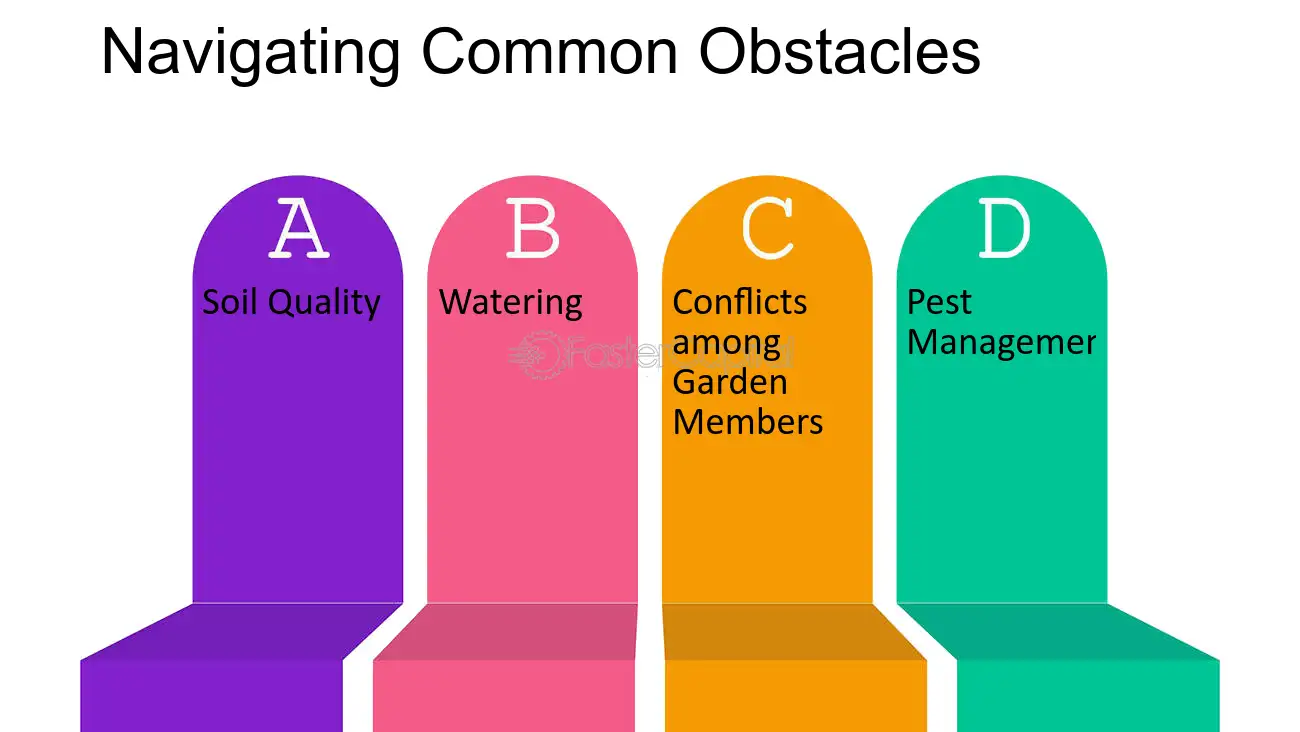
Navigating Common Obstacles - Community gardens: Cultivating Connections with Payment in Kind
12. Navigating Obstacles in a Bilateral Monopoly Environment
Navigating obstacles in a bilateral monopoly environment is not an easy task for consumers. As a result, it is essential to understand the challenges and limitations that come with navigating such an environment. In a bilateral monopoly, both suppliers and buyers have market power, which can limit the choices available to customers. Suppliers can charge higher prices, and buyers can dictate lower prices, which can make it difficult for consumers to make choices that align with their preferences. This power dynamic creates a complex environment where consumers must be strategic in their decision-making process.
To help consumers navigate this complex environment, below are some of the challenges and limitations they may face:
1. Limited Choice - In a bilateral monopoly, consumers may have limited choices to choose from. For example, if there are only two cable providers in the area, consumers may have to choose between the two, even if neither provider offers the services they want. This can be frustrating for consumers who desire more options.
2. Higher Prices - Because both suppliers and buyers have market power, prices can be higher for consumers in a bilateral monopoly environment. For example, if there is only one gas station in a rural area, the supplier may charge higher prices because consumers have no other option.
3. Quality Issues - In a bilateral monopoly, suppliers may not be incentivized to provide high-quality products or services because they know that consumers have limited options. This means that consumers may have to settle for lower quality products or services.
4. Lack of Innovation - In a bilateral monopoly environment, there may be a lack of innovation because both suppliers and buyers have market power, and there is little competition. This means that consumers may not have access to new, innovative products or services.
Navigating obstacles in a bilateral monopoly environment can be challenging for consumers. Limited choices, higher prices, quality issues, and a lack of innovation are just a few of the challenges consumers may face. However, by understanding these challenges, consumers can make more informed decisions that align with their preferences and needs.
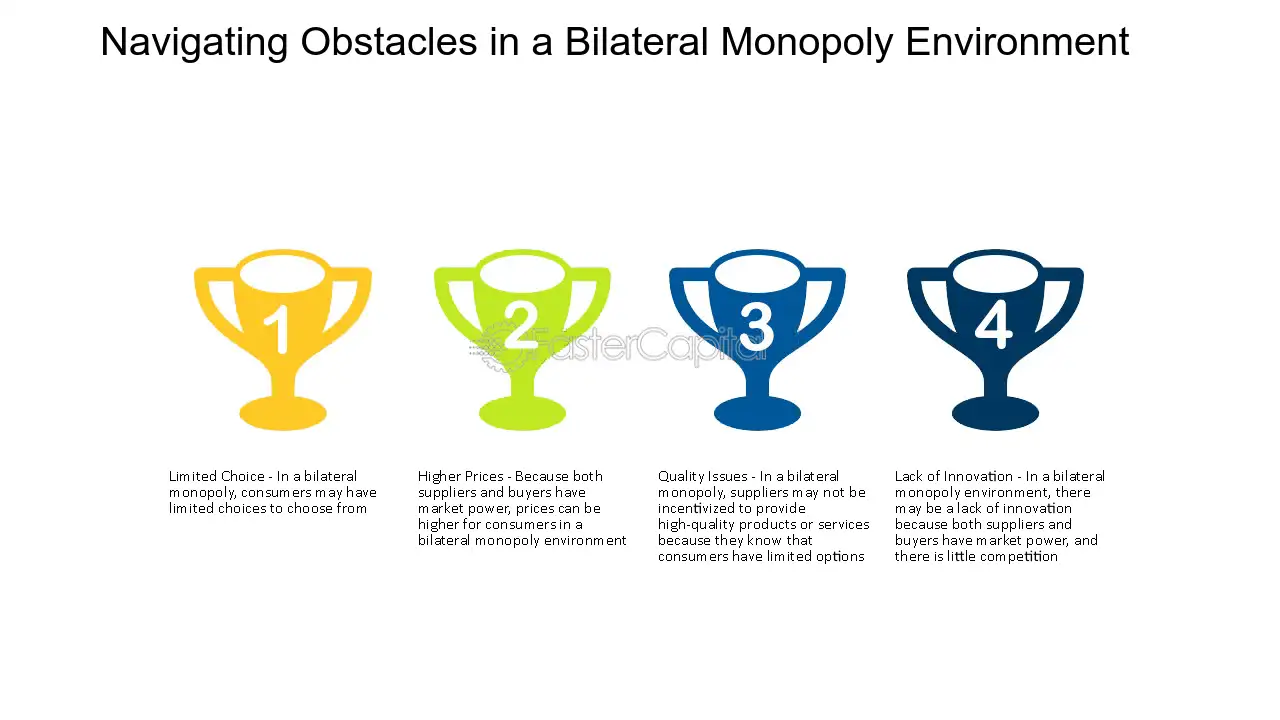
Navigating Obstacles in a Bilateral Monopoly Environment - Consumer Choice: Empowering Customers in a Bilateral Monopoly World
13. Navigating Obstacles and Challenges
In life, we often face obstacles and challenges that can make us feel like we're at a crossroads. Whether it's a difficult decision, a setback, or a major life change, it can be hard to know how to stay the course and navigate these challenges with grace and resilience. However, it's important to remember that these obstacles are a natural part of the journey, and they can actually be opportunities for growth and learning. By staying committed to our goals and values, and by taking a strategic and proactive approach to problem-solving, we can overcome even the toughest challenges and emerge stronger and more resilient than before.
Here are some key insights to help you stay the course when navigating obstacles and challenges:
1. Stay focused on your goals and values: When faced with a challenge, it can be easy to get sidetracked by distractions or setbacks. However, it's important to stay focused on your long-term goals and the values that guide your decisions. This can help you stay motivated and committed to your path, even when things get tough.
2. Embrace a growth mindset: Instead of viewing obstacles as roadblocks, try to see them as opportunities for growth and learning. This can help you reframe your perspective and approach challenges with a sense of curiosity and optimism. For example, if you encounter a setback at work, you might use it as an opportunity to learn new skills or take on new responsibilities.
3. Take a strategic approach: When facing a difficult decision or challenge, it can be helpful to take a step back and think strategically about your options. This might involve breaking down the problem into smaller, more manageable pieces or seeking advice from a mentor or trusted friend. By taking a strategic approach, you can feel more empowered and confident in your ability to navigate the challenge.
4. Seek support when needed: No one can navigate life's challenges alone. Whether it's seeking advice from a mentor, leaning on your friends and family, or seeking professional support, it's important to recognize when you need help and reach out for support. Remember, asking for help is a sign of strength, not weakness.
5. Practice self-care: Finally, it's important to take care of yourself when navigating obstacles and challenges. This might involve practicing self-care activities like exercise, meditation, or spending time in nature. By taking care of your physical, emotional, and spiritual needs, you can build resilience and stay the course even when the going gets tough.
Navigating life's obstacles and challenges can be difficult, but with the right mindset and approach, you can stay the course and emerge stronger and more resilient than before. By staying focused on your goals and values, embracing a growth mindset, taking a strategic approach, seeking support when needed, and practicing self-care, you can overcome even the toughest challenges and find direction and purpose on your journey.
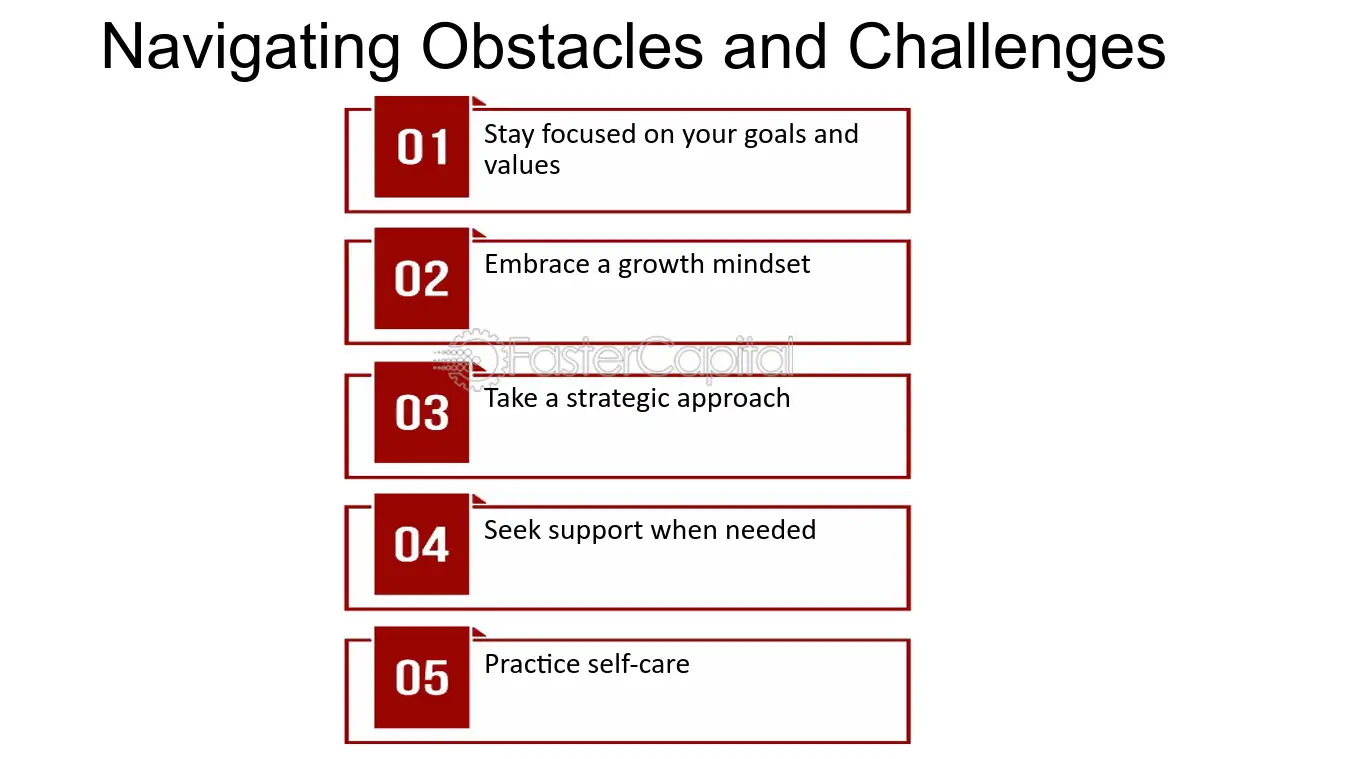
Navigating Obstacles and Challenges - Crossroads: Navigating Life s Crossroads: Finding Direction and Purpose
14. Navigating the First Obstacles
The start line is always one of the most nerve-wracking parts of any race. You're surrounded by other competitors, all revving their engines and ready to take off as soon as the signal is given. It can be overwhelming, especially if you're new to racing or competing in a particularly high-stakes event. However, with a little preparation and a clear head, you can navigate the first obstacles and get off to a strong start.
1. Know the course - Before you even get to the start line, make sure you're familiar with the course. Study the map, watch videos of previous races, and talk to other racers who have competed on the same track. This will give you a sense of what to expect and help you plan your strategy.
2. Get in the right mindset - It's easy to get caught up in the excitement of the start line, but it's important to stay focused. Take a few deep breaths, visualize your race, and remind yourself of your goals. This will help you stay calm and confident, even when things get chaotic.
3. Position yourself wisely - Your starting position can have a big impact on your race, so try to position yourself strategically. If you're a strong starter, try to get as close to the front as possible. If you're more comfortable pacing yourself, hang back a little and let the faster racers take off first.
4. Watch the lights - The start signal can vary depending on the race, so make sure you know what to look for. In some races, a flag or whistle will signal the start, while others use traffic lights. Watch the lights carefully and be ready to take off as soon as they turn green.
5. Accelerate smoothly - When the signal is given, it's tempting to gun the engine and take off as fast as possible. However, this can lead to spinning out or losing control. Instead, accelerate smoothly and steadily, keeping your eyes on the road ahead.
6. Be aware of other racers - The start line can be crowded, so it's important to be aware of other racers around you. Keep an eye on your mirrors and be prepared to make quick maneuvers if necessary. However, don't get too distracted by other racers - focus on your own race and stay in control.
Overall, the key to navigating the start line is preparation and focus. Know the course, get in the right mindset, position yourself wisely, watch the lights, accelerate smoothly, and be aware of other racers. With these tips in mind, you'll be able to conquer the start line and set yourself up for a successful race.
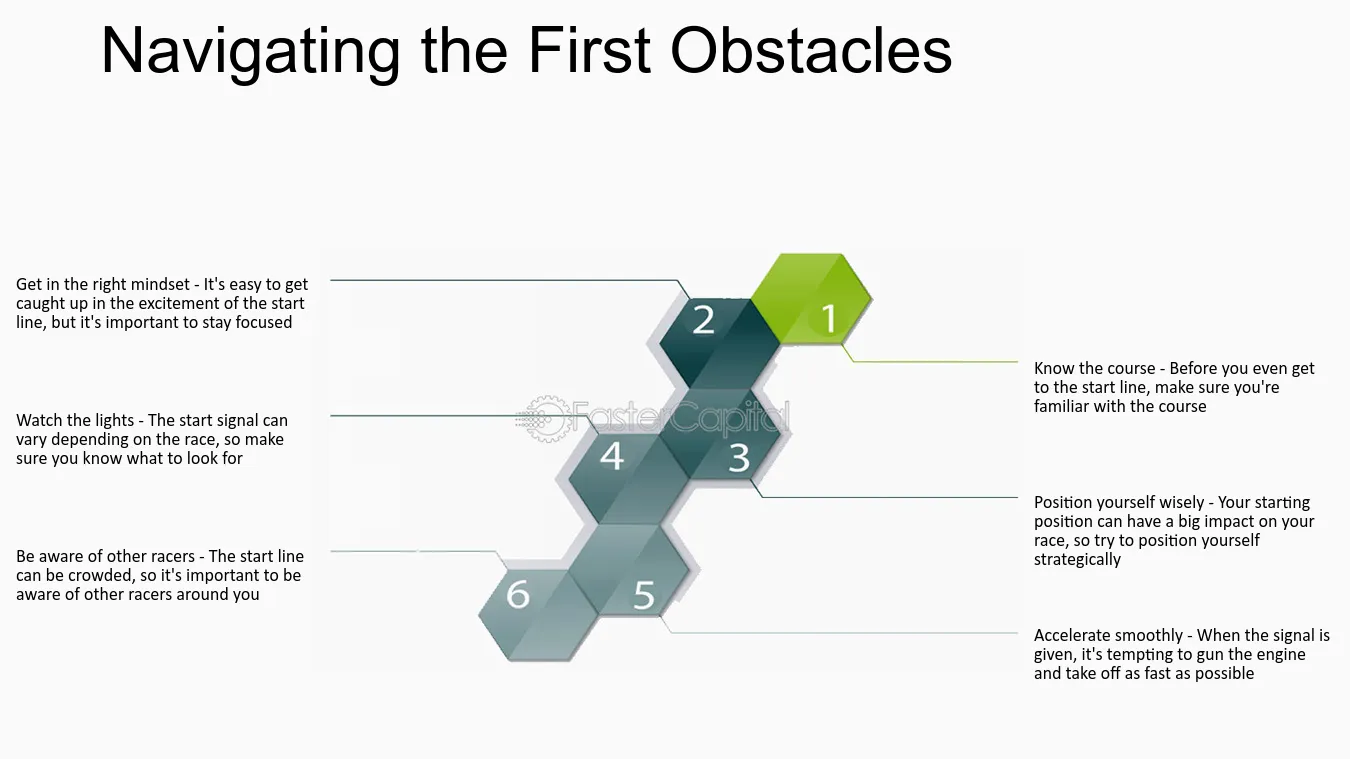
Navigating the First Obstacles - DK Mountain: Conquering the Treacherous Terrain in Donkey Kong Racing
15. Navigating the Obstacles in Achieving Economic Growth
Achieving economic growth is a complex and multifaceted process that requires navigating numerous obstacles along the way. From policy decisions to external factors, there are various challenges that can hinder the path to sustained economic growth. However, by understanding these challenges and adopting effective strategies, nations can overcome them and unleash their full economic potential.
1. Political Stability: One of the fundamental prerequisites for economic growth is political stability. A stable political environment provides a foundation for long-term planning and investment, attracting both domestic and foreign investors. Countries with unstable governments often face difficulties in implementing consistent policies, leading to uncertainty and discouraging investment. For instance, countries like Zimbabwe and Venezuela have experienced significant economic downturns due to political instability, hindering their ability to achieve sustainable growth.
2. Infrastructure Development: Adequate infrastructure is crucial for economic growth as it facilitates trade, transportation, and communication networks. Insufficient infrastructure can impede productivity and limit market access, particularly in rural areas or developing regions. For example, countries like India have recognized the importance of infrastructure development and have invested heavily in building roads, ports, and power plants to support their growing economy.
3. Education and Skill Development: A well-educated workforce is essential for driving innovation, productivity, and overall economic growth. Investing in education and skill development programs ensures that individuals possess the necessary knowledge and expertise to contribute effectively to the economy. Countries like Finland have prioritized education by providing free quality education from primary school through university, resulting in a highly skilled workforce that has propelled their economic success.
4. Access to Finance: Limited access to finance can be a significant barrier to economic growth, particularly for small businesses and entrepreneurs. Lack of capital restricts investment opportunities and hampers business expansion. Governments can address this challenge by promoting financial inclusion initiatives such as microfinance programs or establishing favorable lending conditions for small enterprises. Bangladesh's Grameen Bank, founded by Muhammad Yunus, has successfully provided microcredit to millions of impoverished individuals, empowering them to start their own businesses and contribute to economic growth.
5. Technological Advancement: embracing technological advancements is crucial for achieving sustained economic growth in the modern era. Innovation drives productivity gains, enhances competitiveness, and creates new industries and job opportunities. Countries like South Korea have prioritized technological advancement by investing heavily in research and development, resulting in the emergence of global technology giants like Samsung and LG.
6. Income Inequality: Addressing income
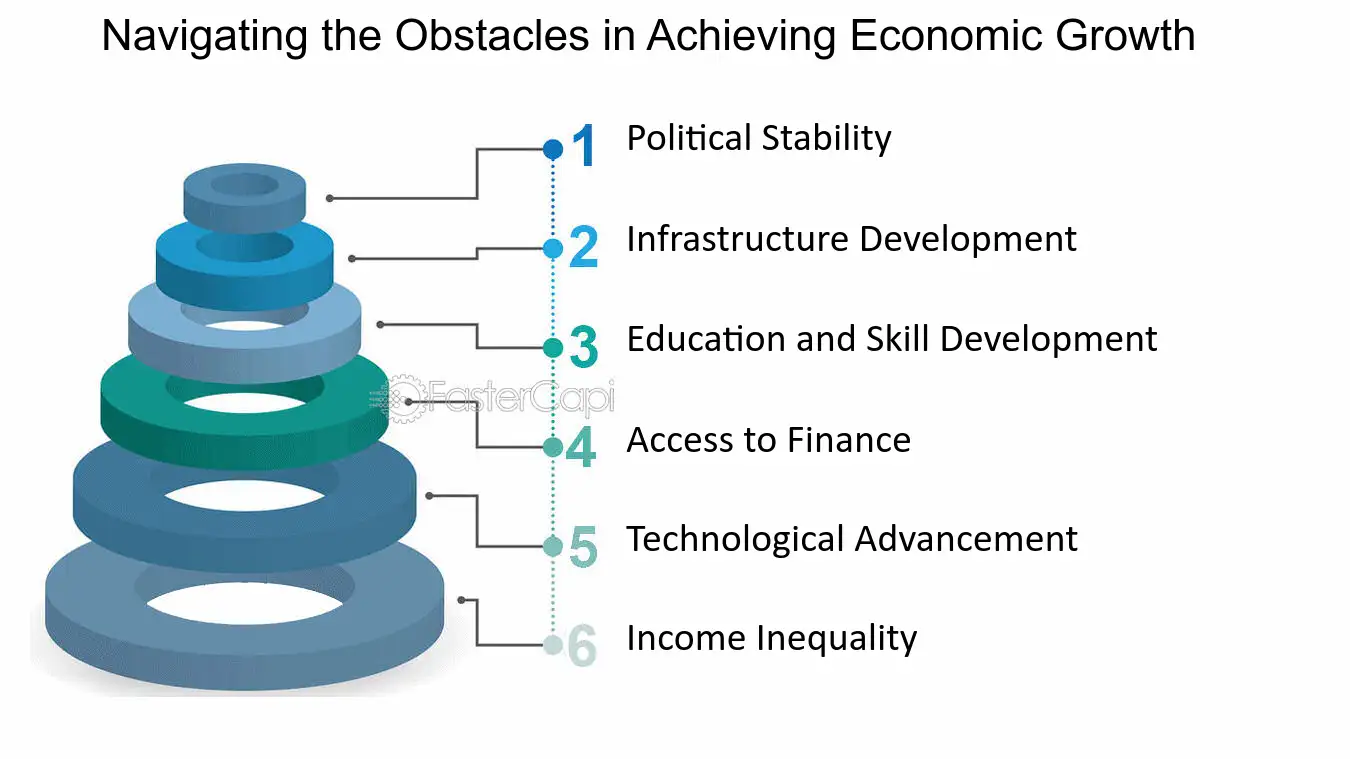
Navigating the Obstacles in Achieving Economic Growth - Economic Growth: The J Curve Effect: Unleashing Economic Growth
16. Overcoming Challenges: Navigating Obstacles in Regenerative Entrepreneurship
1. Identifying and Acknowledging Challenges
In the pursuit of regenerative entrepreneurship, it is essential to recognize and address the challenges that arise along the way. These obstacles can manifest in various forms, such as financial constraints, limited resources, resistance from traditional business models, or even skepticism from stakeholders. By identifying and acknowledging these challenges, entrepreneurs can better navigate their path towards a more sustainable future.
For instance, let's consider a regenerative entrepreneur who aims to establish a zero-waste manufacturing company. They may encounter difficulties in securing funding due to the perception that sustainable practices are costly or unprofitable. Additionally, they might face resistance from suppliers who are unwilling to adapt their production methods. These challenges can be discouraging, but with the right mindset and strategies, they can be overcome.
2. Embracing Innovation and Collaboration
Overcoming challenges in regenerative entrepreneurship often requires innovative thinking and collaboration. Entrepreneurs need to constantly seek new ways of doing things, challenging conventional norms, and finding creative solutions to complex problems. By embracing innovation, entrepreneurs can develop sustainable business models that are economically viable and environmentally friendly.
For example, a regenerative entrepreneur focused on renewable energy may face obstacles in terms of scalability and reliability. To overcome these challenges, they could collaborate with other like-minded entrepreneurs, forming partnerships that pool resources and expertise. By working together, they can develop innovative technologies or business models that address the limitations of existing renewable energy systems, ultimately driving progress in the industry.
3. Building Strong Networks and Relationships
Building strong networks and relationships is crucial for regenerative entrepreneurs facing obstacles. By connecting with individuals and organizations that share similar values and goals, entrepreneurs can gain support, access to resources, and valuable insights. These networks can provide a sense of community, collaboration, and collective problem-solving.
For instance, a regenerative entrepreneur focused on sustainable agriculture may encounter challenges in terms of market access or distribution. By actively engaging with organic farming associations, local farmers' markets, and environmentally conscious consumers, they can build relationships that help overcome these obstacles. These connections can lead to new partnerships, distribution channels, and increased visibility for their products.
4. Adapting and Learning from Failures
Failure is an inevitable part of any entrepreneurial journey, and regenerative entrepreneurship is no exception. Rather than seeing failure as a roadblock, entrepreneurs should view it as an opportunity to learn, adapt, and grow. By embracing a growth mindset, entrepreneurs can turn setbacks into stepping stones towards success.
Consider a regenerative entrepreneur who attempts to introduce a sustainable packaging solution in the market but faces challenges with consumer adoption. Instead of giving up, they can learn from the experience, gather feedback, and refine their product or marketing strategy. Through this iterative process, they can address the barriers that prevented initial success and eventually find a solution that resonates with consumers.
In conclusion, navigating obstacles in regenerative entrepreneurship requires identifying challenges, embracing innovation and collaboration, building strong networks and relationships, and learning from failures. By adopting these approaches, entrepreneurs can overcome hurdles and drive positive change towards a more sustainable future.
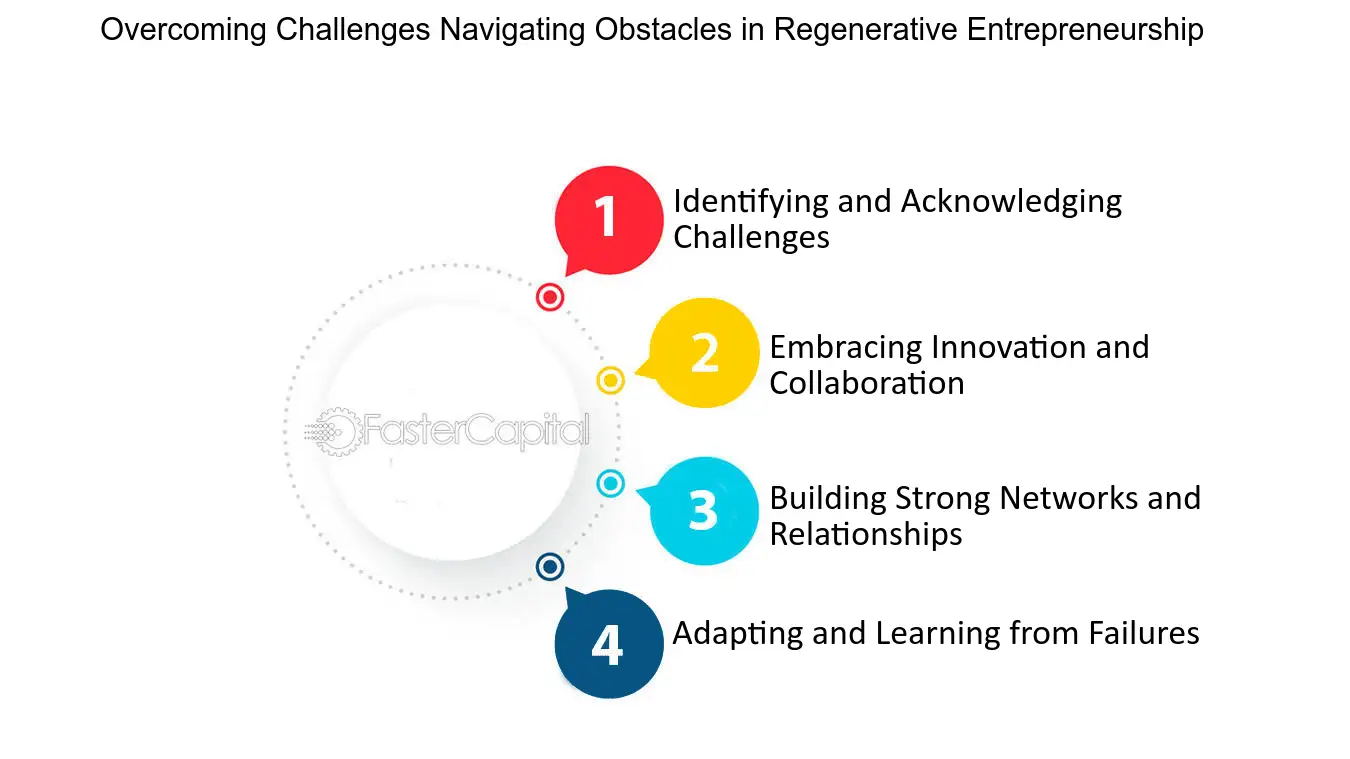
Overcoming Challenges: Navigating Obstacles in Regenerative Entrepreneurship - Exploring the Principles of Regenerative Entrepreneurship for a More Sustainable Future
17. Venturing into New Opportunities:Overcoming Challenges: Navigating Obstacles as a Retired Entrepreneur
1. Embrace the changing landscape: As a retired entrepreneur, it's essential to stay open-minded and adapt to the ever-evolving business landscape. Technology, consumer behavior, and market trends are constantly shifting, and it's crucial to be willing to learn and embrace new ideas. For example, if you were a brick-and-mortar store owner, you might have to transition to an online business model to reach a wider audience and generate revenue.
2. Stay connected with industry networks: Networking doesn't stop when you retire. In fact, it becomes even more critical to maintain connections with colleagues, industry experts, and mentors who can provide valuable insights and support. Joining industry associations, attending conferences, and participating in online forums are all ways to stay connected and up-to-date with industry trends. These networks can also be a source of potential partnerships or business opportunities as you navigate your retirement ventures.
3. Leverage your expertise and experience: One of the advantages of being a retired entrepreneur is the wealth of knowledge and experience you have accumulated over the years. Use this to your advantage and leverage your expertise in consulting or mentoring roles. For instance, if you were a successful restaurateur, you could offer consulting services to new restaurant owners, sharing your insights and helping them avoid common pitfalls.
4. Embrace a growth mindset: Just because you are retired doesn't mean you stop learning and growing. It's important to maintain a growth mindset and continually seek personal and professional development opportunities. This could involve taking courses, attending workshops, or even pursuing a new degree or certification. By continuously expanding your knowledge and skillset, you can stay relevant and adapt to new challenges that may arise in your retirement ventures.
5. Seek support from like-minded individuals: Surrounding yourself with other retired entrepreneurs or individuals who share similar goals and aspirations can provide a great support system. Joining retirement communities, attending meetups, or even starting a mastermind group can help you connect with like-minded individuals who can provide support, advice, and encouragement as you navigate the challenges of being a retired entrepreneur.
6. Be flexible and willing to pivot: In the world of entrepreneurship, change is inevitable. As a retired entrepreneur, you must be prepared to pivot your plans and strategies if they are not yielding the desired results. This flexibility can help you overcome obstacles and discover new opportunities that you may not have considered initially. For example, if your retirement business idea is not gaining traction, be open to exploring alternative ventures or adjusting your approach to better align with market demands.
7. Prioritize self-care and work-life balance: Finally, remember that retirement is a time to enjoy the fruits of your labor and prioritize your well-being. It's easy to get caught up in the hustle and bustle of starting a new venture, but it's essential to strike a balance between work and leisure. Take time to engage in activities that bring you joy, spend quality time with loved ones, and prioritize self-care. By taking care of yourself, you'll be better equipped to overcome challenges and navigate obstacles as a retired entrepreneur.
Navigating obstacles as a retired entrepreneur may seem daunting at first, but by embracing change, staying connected, leveraging your expertise, maintaining a growth mindset, seeking support, being flexible, and prioritizing self-care, you can overcome challenges and thrive in your retirement ventures. Remember, retirement is an opportunity for new beginnings and exciting opportunities, so embrace the journey and make the most of this next chapter in your entrepreneurial journey.
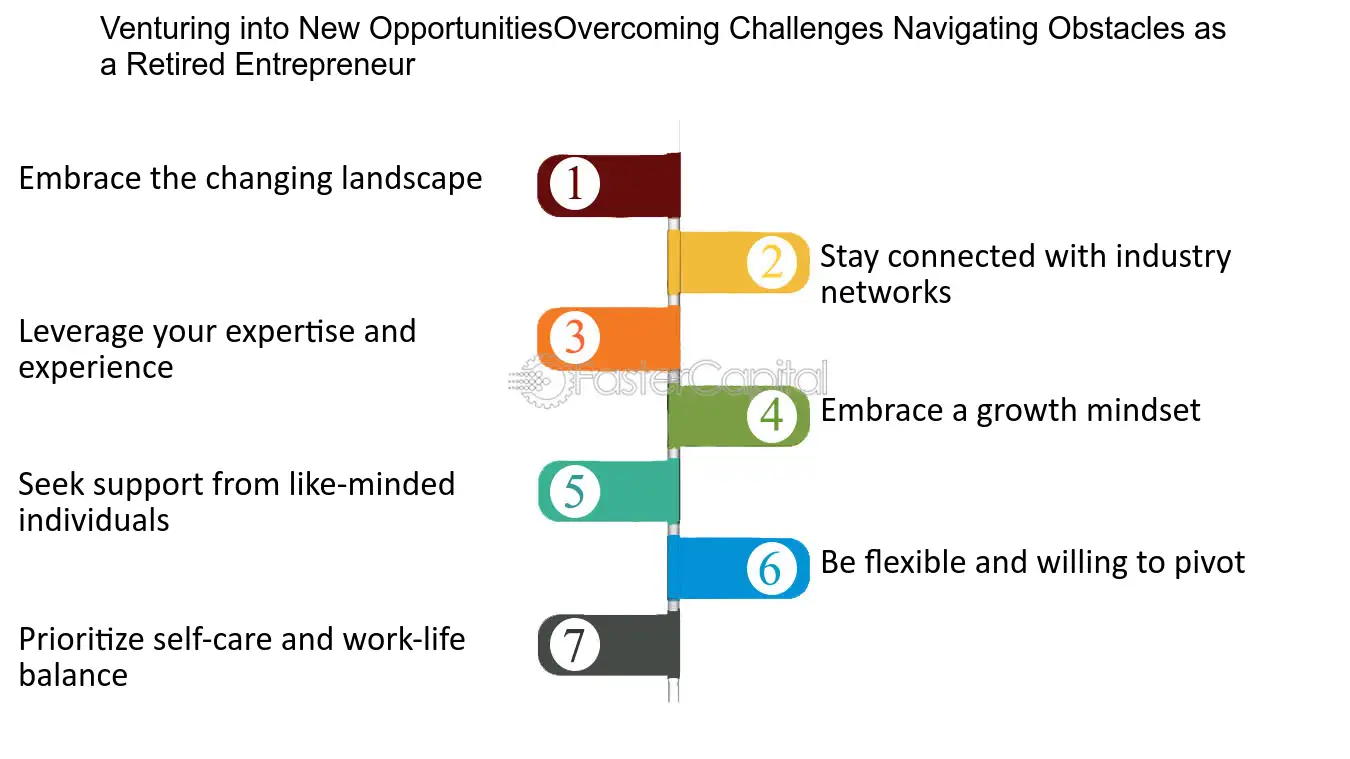
Venturing into New Opportunities:Overcoming Challenges: Navigating Obstacles as a Retired Entrepreneur - From Business Owner to Retired Entrepreneur: Venturing into New Opportunities
18. The Power of Repurposing in the Startup World:Overcoming Challenges: Navigating Obstacles in the Repurposing Process
1. Identify the obstacles: The first step in overcoming challenges in the repurposing process is to identify the obstacles that may arise. These obstacles could be anything from technical limitations to budget constraints or even resistance from stakeholders. For example, let's say you are repurposing an old warehouse into a co-working space. One of the obstacles you may encounter is outdated electrical wiring that needs to be replaced to meet modern safety standards.
2. Develop a strategy: Once you have identified the obstacles, it's important to develop a strategy to overcome them. This involves brainstorming possible solutions and evaluating their feasibility and impact. Taking the example of the warehouse repurposing, you could develop a strategy that includes hiring an electrician to assess the wiring and provide recommendations for improvements.
3. Seek expert advice: In some cases, it may be necessary to seek expert advice to navigate certain obstacles. This could involve consulting with professionals in the field or reaching out to experienced individuals who have successfully overcome similar challenges. Continuing with the warehouse example, you could seek advice from an architect or a construction consultant to ensure that the repurposing process adheres to building codes and regulations.
4. Adapt and adjust: It's important to remain flexible and open to adjusting your plans as you encounter obstacles in the repurposing process. Sometimes, unforeseen challenges may arise that require you to rethink your approach. For instance, during the warehouse repurposing, you may discover structural issues that necessitate changes in the layout or design.
5. Collaborate and communicate: Collaboration and effective communication are crucial in overcoming obstacles during the repurposing process. Engaging with stakeholders, such as investors, employees, and local authorities, can help address concerns and garner support. In the warehouse repurposing scenario, you could collaborate with local businesses or community organizations to ensure that the co-working space meets the needs of the community.
6. Embrace creativity: Repurposing often requires thinking outside the box and finding creative solutions to challenges. This could involve repurposing materials, finding alternative uses for existing infrastructure, or exploring unconventional design ideas. For example, in repurposing an old factory into a restaurant, you could repurpose old machinery as decorative elements or use industrial features to create a unique ambiance.
7. Learn from setbacks: Setbacks are inevitable in any repurposing project, but it's important to view them as learning opportunities. Analyze the causes of setbacks and use them to refine your approach. For instance, if the warehouse repurposing project faced delays due to permitting issues, you could learn from the experience and ensure that you allocate sufficient time for obtaining necessary approvals in future projects.
By following these steps, you can effectively navigate obstacles in the repurposing process and turn what may initially seem like failures into successful and flourishing ventures. Remember, repurposing is not only an opportunity to breathe new life into existing spaces or assets but also a chance to showcase creativity and innovation in the startup world.

The Power of Repurposing in the Startup World:Overcoming Challenges: Navigating Obstacles in the Repurposing Process - From Failure to Flourishing: The Power of Repurposing in the Startup World
19. The Journey of Community Land Trust Businesses:Overcoming Challenges: Navigating Obstacles in Community Land Trust Business Development
1. Identifying Potential Challenges
When embarking on the journey of community land trust (CLT) business development, it is crucial to anticipate and identify potential challenges that may arise along the way. By proactively acknowledging these obstacles, CLT organizations can better navigate through them and work towards achieving their goals.
2. Limited Access to Funding
One of the most common challenges faced by CLTs is limited access to funding. CLTs often rely on grants, donations, and public funding to acquire and develop land for community use. However, securing these financial resources can be a daunting task, especially for new and emerging CLTs. In such cases, it is important to explore various funding options, such as crowdfunding campaigns, partnerships with local businesses or foundations, or even seeking out government grants specifically designed for community development projects.
For example, the Dudley Street Neighborhood Initiative in Boston faced significant financial challenges when first starting out. However, by leveraging their strong community network and partnering with local organizations, they were able to secure funding for their CLT projects and continue to thrive today.
3. Building Community Support
Building community support is another significant challenge for CLTs. As the success of a CLT depends on the active involvement and participation of community members, it is crucial to engage and educate the local community about the benefits and opportunities that CLTs can provide. This may involve organizing community meetings, workshops, or educational campaigns to generate awareness and support for the CLT's vision.
A great example of overcoming this challenge can be seen in the Champlain Housing Trust in Vermont. They actively engage with the community through regular forums and open houses, giving community members a platform to voice their concerns and ideas. This open and inclusive approach has helped to build a strong and supportive network around their CLT projects.
4. Legal and Regulatory Hurdles
Navigating the legal and regulatory landscape can also pose significant challenges for CLTs. Zoning regulations, land use restrictions, and complex legal processes can often create obstacles that hinder the development and expansion of CLT projects. It is essential for CLT organizations to work closely with legal experts, policymakers, and local authorities to understand and navigate these hurdles effectively.
For instance, the Northern California Land Trust faced numerous legal challenges when trying to secure long-term affordable housing in high-demand areas. However, by partnering with local government agencies and advocating for policy changes, they were able to successfully overcome these hurdles and create more affordable housing opportunities for their community.
5. sustaining Long-term Success
Maintaining the long-term success and viability of a CLT is an ongoing challenge. CLTs must ensure that their operations, governance structures, and financial models are sustainable in the long run. This may involve establishing clear management systems, implementing effective financial strategies, and continuously engaging with community members to understand their evolving needs.
The Burlington Associates in Community Development, a national consulting cooperative, provides technical assistance to CLTs across the United States. They offer guidance and support in developing sustainable business models and strategies, helping CLTs overcome the challenge of long-term success.
In conclusion, while the journey of community land trust business development may come with its fair share of obstacles, proactive identification and navigation of these challenges can lead to successful outcomes. By addressing funding limitations, building community support, overcoming legal and regulatory hurdles, and ensuring long-term sustainability, CLTs can continue to create positive impacts and provide affordable housing and community development opportunities for years to come.
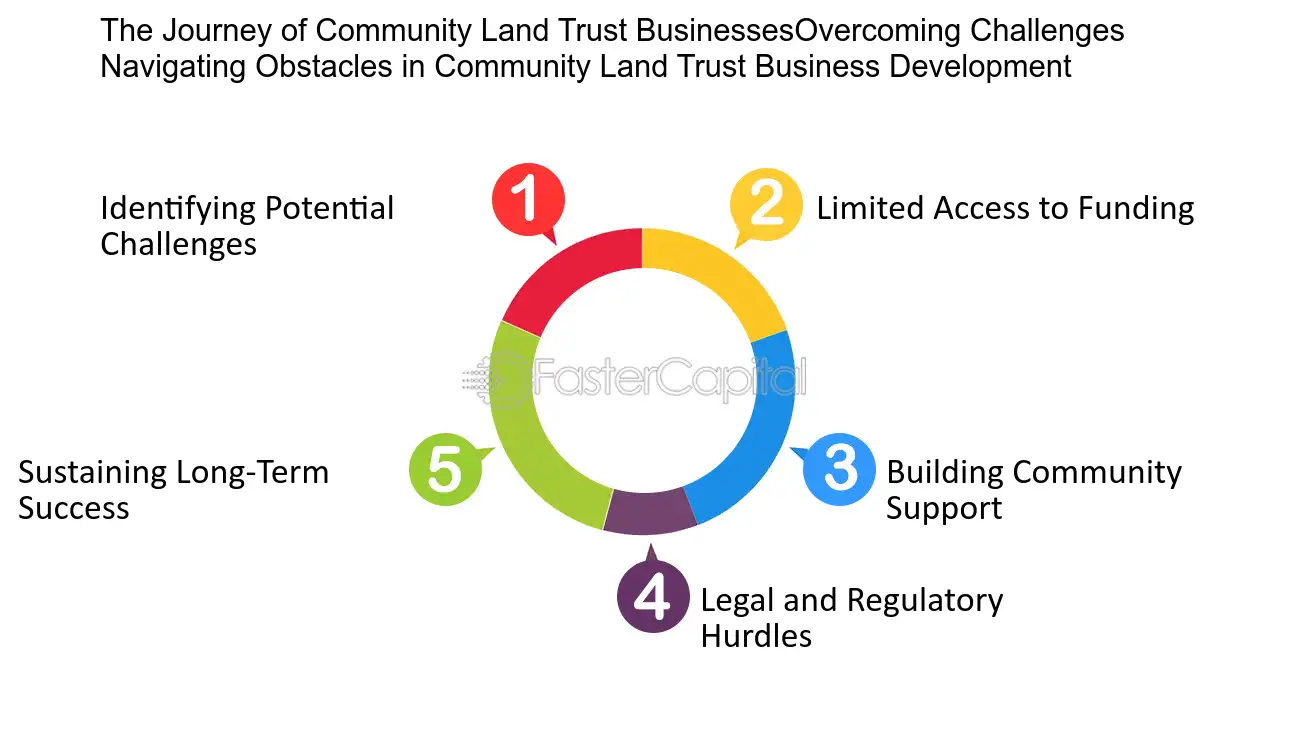
The Journey of Community Land Trust Businesses:Overcoming Challenges: Navigating Obstacles in Community Land Trust Business Development - From Grassroots to Success: The Journey of Community Land Trust Businesses
20. Exploring the Growth of Craftsmanship Startups:Overcoming Challenges: Navigating Obstacles in the Craftsmanship Startup Journey
1. Identifying the Right Market Niche
One of the initial challenges in the craftsmanship startup journey is finding the right market niche to target. With the rise in popularity of handmade products, it's important to identify a unique niche that will set your craftsmanship startup apart from the competition. For example, if you're skilled in woodworking, you may decide to focus on creating high-quality, custom-made furniture pieces for eco-conscious consumers who prioritize sustainability. By narrowing down your target market, you can tailor your products and marketing efforts to appeal specifically to that niche.
2. Building a Strong Brand Identity
Craftsmanship startups often face the challenge of building a strong brand identity that resonates with their target audience. Creating a brand that reflects your values, craftsmanship, and unique selling proposition is crucial for differentiation and customer loyalty. Take the example of a jewelry maker who specializes in creating intricate, one-of-a-kind pieces inspired by nature. By incorporating elements of nature into their logo, packaging, and marketing materials, they can effectively communicate their brand identity and attract like-minded customers.
3. Scaling Production While Maintaining Quality
As a craftsmanship startup grows, the challenge of scaling production while maintaining the same level of quality becomes increasingly important. It's crucial to find ways to streamline processes, invest in efficient tools, and ensure consistent training for employees or collaborators. For instance, a ceramic artist may initially create each piece by hand, but as demand increases, they may need to explore methods such as slip-casting or partnering with local artisans to maintain the same level of craftsmanship at a larger scale.
4. Pricing Products Competitively
Determining the right pricing strategy for handmade products can be a challenge for craftsmanship startups. Pricing too low can undervalue your craftsmanship, while pricing too high may deter potential customers. To address this, research the market to understand the price range for similar products and factor in your costs, time, and expertise. For example, a leather goods maker may consider the quality of materials, the intricacy of the design, and the time required to handcraft each item when setting their prices.
5. Marketing and Reaching the Target Audience
Craftsmanship startups often struggle with effectively marketing their products and reaching their target audience. With limited resources, it's important to focus on targeted marketing efforts. For instance, a ceramic artist specializing in modern home decor may collaborate with interior designers or participate in local artisan markets to showcase their work to potential customers who appreciate unique and handmade items.
6. building a Sustainable business Model
Craftsmanship startups need to develop a sustainable business model that allows for growth while staying true to their craftsmanship values. This includes managing costs, diversifying revenue streams, and planning for future expansion. For example, a woodworking startup may consider offering workshops or classes to generate additional income and share their skills with others, thereby creating a more sustainable business model.
By acknowledging and tackling these challenges head-on, craftsmanship startups can navigate the obstacles that come their way and build successful businesses that thrive in the competitive market. The key lies in staying true to their craftsmanship, continuously improving their skills, and adapting to the evolving needs and preferences of their target audience.
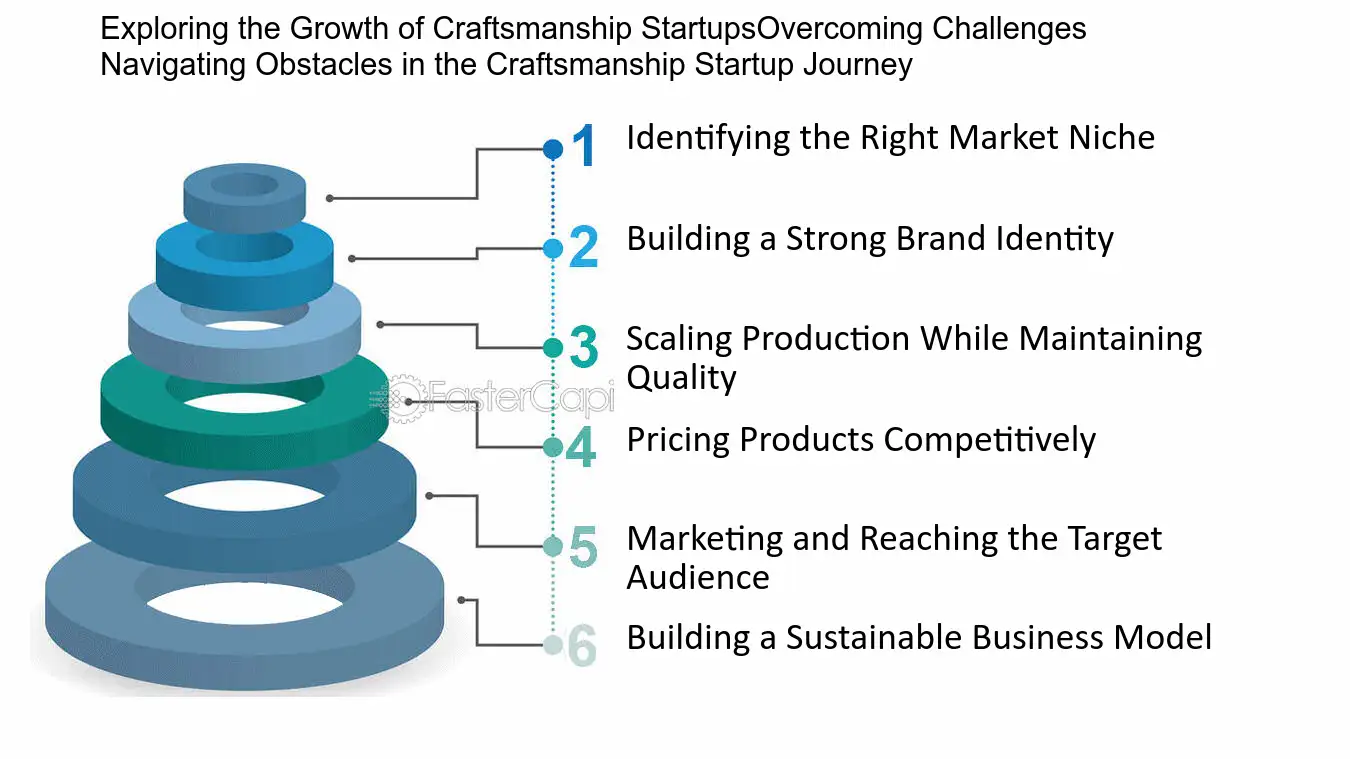
Exploring the Growth of Craftsmanship Startups:Overcoming Challenges: Navigating Obstacles in the Craftsmanship Startup Journey - From Hobby to Business: Exploring the Growth of Craftsmanship Startups
21. The Journey of an Innovator Entrepreneur:Overcoming Challenges: Navigating Obstacles on the Path to Success
1. setting Clear goals: One of the first steps in overcoming challenges on the path to success is setting clear, achievable goals. By defining what you want to achieve and breaking it down into smaller, manageable tasks, you can create a roadmap for your journey. For example, if you're an entrepreneur launching a new product, your goals might include designing a prototype, securing funding, and marketing your product to potential customers. By setting clear goals, you can stay focused and motivated, even when faced with obstacles along the way.
2. Embracing Failure as a Learning Opportunity: It's important to remember that failure is a natural part of the entrepreneurial journey. Instead of viewing failure as a setback, successful innovators see it as an opportunity to learn and grow. Take, for instance, the story of Thomas Edison and the invention of the light bulb. Edison famously said, "I have not failed. I've just found 10,000 ways that won't work." By embracing failure as a learning opportunity, you can adapt and iterate on your ideas, ultimately increasing your chances of success.
3. building a Support network: Surrounding yourself with a supportive network of mentors, peers, and advisors can be instrumental in overcoming challenges. These individuals can provide guidance, offer different perspectives, and help you navigate obstacles along the way. Consider joining industry-specific networking groups, attending conferences, or seeking out a mentor who has experience in your field. By building a support network, you can tap into a wealth of knowledge and expertise that can help you overcome challenges and achieve your goals.
4. Developing Resilience and Persistence: The entrepreneurial journey is rarely a smooth one, and it's important to develop resilience and persistence to overcome challenges. Take, for example, the story of Sara Blakely, the founder of Spanx. Blakely faced numerous rejections and setbacks before finally finding success with her innovative shapewear. Through her unwavering persistence and belief in her idea, she was able to overcome obstacles and build a billion-dollar company. By staying resilient and persistent, you can bounce back from failures and setbacks, ultimately increasing your chances of success.
5. Seeking Continuous Learning: The journey to success is a continuous learning process. By seeking out new knowledge and skills, you can stay ahead of the curve and adapt to changing circumstances. Consider attending workshops, taking online courses, or reading books related to your industry. By continuously learning and improving, you can develop the tools and knowledge needed to overcome challenges and achieve your goals.
6. Maintaining a Positive Mindset: Finally, maintaining a positive mindset is crucial when facing challenges on the path to success. It's easy to get discouraged when things don't go according to plan, but a positive mindset can help you stay motivated and focused. Surround yourself with positive influences, practice mindfulness or meditation, and celebrate small wins along the way. By maintaining a positive mindset, you can overcome obstacles with resilience and determination.
In conclusion, navigating obstacles on the path to success is an inevitable part of the journey for innovator entrepreneurs. By setting clear goals, embracing failure as a learning opportunity, building a support network, developing resilience and persistence, seeking continuous learning, and maintaining a positive mindset, you can overcome challenges and achieve your entrepreneurial dreams. Remember, success is not a destination, but rather a continuous journey of growth and adaptation.
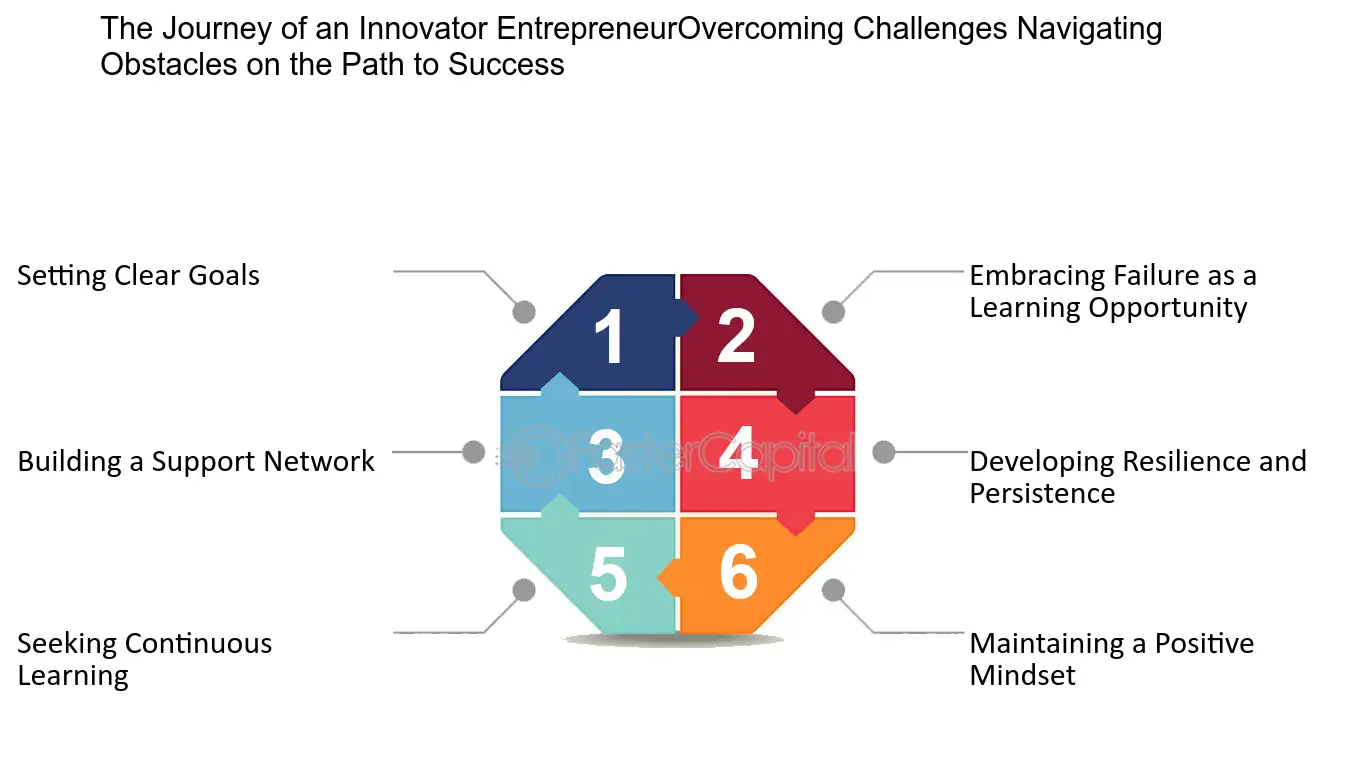
The Journey of an Innovator Entrepreneur:Overcoming Challenges: Navigating Obstacles on the Path to Success - From Idea to Execution: The Journey of an Innovator Entrepreneur
22. Steps to Launching a Successful Minority-owned Business:Overcoming Challenges: Navigating Obstacles Faced by Minority-owned Businesses
1. Develop a Strong Support Network: One of the biggest challenges faced by minority-owned businesses is the lack of a strong support network. Unlike their counterparts in the mainstream business world, minority entrepreneurs often have limited access to mentors, advisors, and other resources that can help them navigate the challenges of starting and running a business.
To overcome this obstacle, it is crucial for minority entrepreneurs to actively seek out and cultivate a support network. This can be done through attending networking events, joining industry associations, and reaching out to other minority business owners who have successfully overcome similar challenges. Online communities and social media groups can also provide a valuable platform for connecting with like-minded individuals and seeking advice.
For example, let's say you are a minority entrepreneur looking to start a restaurant. You could join local restaurant associations or online communities where you can connect with other restaurant owners who have faced similar challenges and can offer guidance and support.
2. Access to Capital: Securing funding is a common obstacle faced by all entrepreneurs, but minority-owned businesses often face additional barriers due to systemic inequalities and biases. Studies have shown that minority entrepreneurs are less likely to receive loans or investments compared to their non-minority counterparts, even when controlling for factors such as creditworthiness and business viability.
To overcome this challenge, minority entrepreneurs can explore alternative funding options such as crowdfunding, grants, and partnerships with organizations that support minority-owned businesses. Additionally, seeking out financial institutions or investors that specifically focus on supporting minority entrepreneurs can increase the chances of securing capital.
For instance, if you are a minority-owned tech startup, you could explore opportunities for funding through organizations like the Minority Business Development Agency or venture capital firms that prioritize investments in minority-owned businesses.
3. Overcoming Stereotypes and Bias: Minority-owned businesses often face stereotypes and biases that can impact their ability to attract customers, secure partnerships, and build a strong brand reputation. Overcoming these challenges requires a proactive approach to challenging stereotypes and demonstrating the value and quality of your products or services.
One strategy is to focus on building a strong and authentic brand that reflects your unique perspective and values. This can help differentiate your business in the marketplace and attract customers who appreciate and support diversity. leveraging social media and online platforms can also be an effective way to communicate your brand story, connect with your target audience, and challenge stereotypes.
For example, if you are a minority-owned fashion brand, you could use social media to showcase diverse models and highlight the cultural inspirations behind your designs. This can help challenge stereotypes about beauty standards and attract customers who value inclusivity and diversity.
4. Building Strong Partnerships: Collaborations and partnerships can be catalysts for growth and success in the business world. However, minority-owned businesses often face challenges in building strong partnerships due to limited networks and preconceived notions about their capabilities.
To overcome this obstacle, minority entrepreneurs should actively seek out strategic partnerships with organizations, suppliers, and other businesses that align with their values and can provide mutually beneficial opportunities. This can be done through attending industry events, reaching out to potential partners, and leveraging existing networks.
For instance, if you are a minority-owned consulting firm, you could explore partnerships with established firms or organizations that are committed to diversity and inclusion. These partnerships can not only provide access to new clients and markets but also help challenge preconceived notions about the capabilities of minority-owned businesses.
By actively addressing and navigating these challenges, minority entrepreneurs can increase their chances of launching and running successful businesses. While the journey may be more challenging, the resilience, innovation, and unique perspectives that minority-owned businesses bring to the table can ultimately lead to long-term success and positive societal impact.
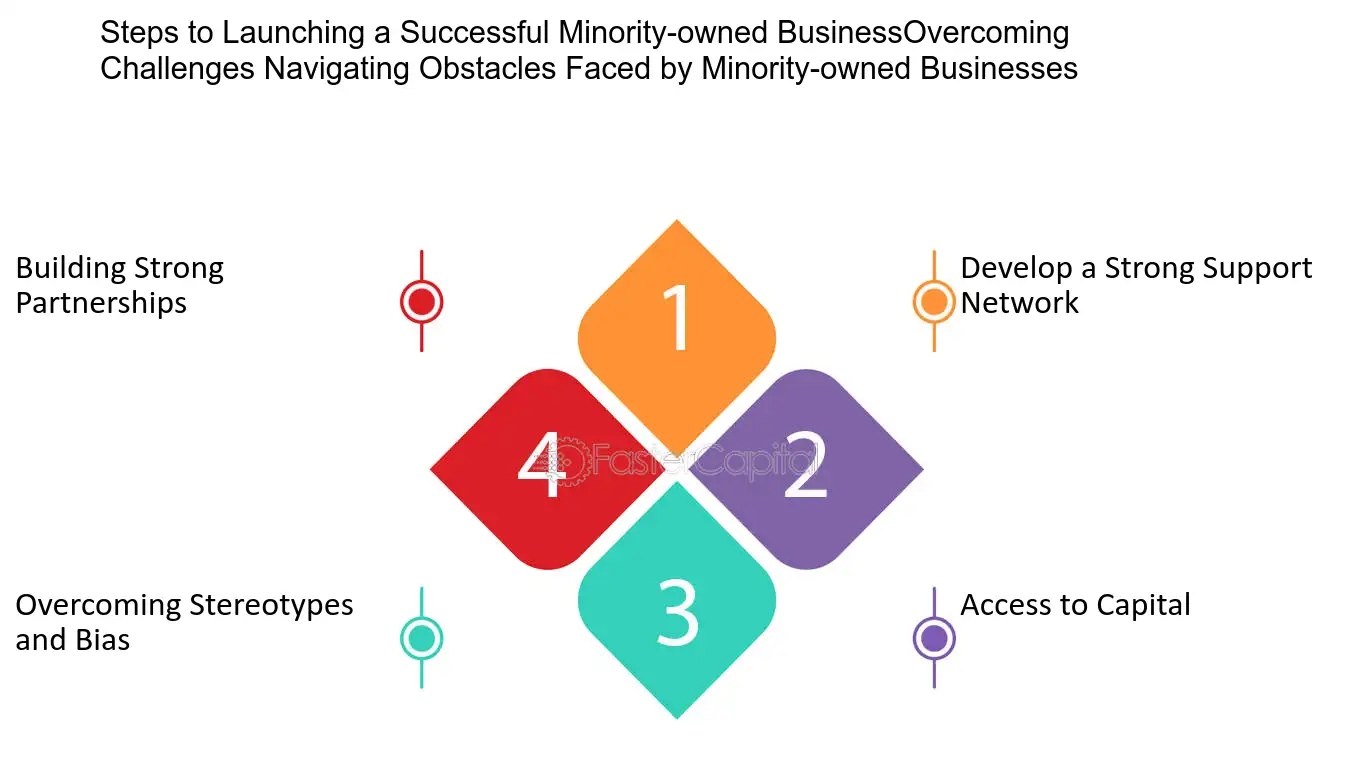
Steps to Launching a Successful Minority owned Business:Overcoming Challenges: Navigating Obstacles Faced by Minority owned Businesses - From Idea to Reality: Steps to Launching a Successful Minority owned Business
23. Turn Your Passion into a Grassroots Startup:Overcoming Challenges: Navigating Obstacles Along the Way
1. Identifying and Acknowledging Challenges
When embarking on the journey of turning your passion into a grassroots startup, it's essential to acknowledge the challenges that lie ahead. By identifying potential obstacles early on, you can better prepare yourself to navigate them effectively. Some common challenges you may encounter include financial constraints, limited resources, lack of expertise, and a saturated market.
2. Developing a Resilient Mindset
Overcoming challenges requires a resilient mindset. It's crucial to understand that setbacks and obstacles are a natural part of the entrepreneurial journey. By adopting a positive and determined attitude, you can face challenges head-on and persevere in the face of adversity. For example, consider the story of Elon Musk, who faced numerous failures and setbacks with SpaceX and Tesla before achieving success.
3. Building a Strong Support Network
One of the most effective ways to navigate obstacles is by surrounding yourself with a strong support network. Seek out mentors, industry experts, and fellow entrepreneurs who can provide guidance, advice, and encouragement. They can offer valuable insights and help you overcome challenges based on their own experiences. Additionally, joining professional networks or attending industry events can expand your network and provide opportunities for collaboration.
4. Embracing Continuous Learning and Adaptability
To overcome obstacles, you must be willing to continuously learn and adapt. As an entrepreneur, it's essential to stay updated on industry trends, best practices, and emerging technologies. By embracing a growth mindset and being open to new ideas, you can pivot your business strategy when faced with unexpected challenges. For example, many businesses had to adapt their operations during the COVID-19 pandemic by shifting to e-commerce or implementing remote work policies.
5. developing Problem-solving Skills
Successful entrepreneurs excel at problem-solving. When faced with obstacles, it's important to approach them with a systematic and analytical mindset. Break down complex problems into smaller, manageable tasks, and brainstorm potential solutions. Consider leveraging technology and automation to streamline processes and overcome operational challenges. By developing strong problem-solving skills, you can navigate obstacles more effectively and find innovative solutions.
6. Seeking Feedback and Iterating
Feedback is invaluable when overcoming challenges and improving your grassroots startup. Actively seek feedback from customers, mentors, and industry peers to gain insights into areas that need improvement. Use this feedback to iterate and refine your product or service. By continuously refining your offering based on feedback, you can address customer pain points and stay ahead of the competition.
7. Celebrating Small Victories
While challenges may be daunting, it's important to celebrate the small victories along the way. Recognize and appreciate the progress you make, no matter how small. By celebrating milestones, you can stay motivated and maintain a positive outlook, even during challenging times. Additionally, reflecting on past successes can serve as a reminder of your ability to overcome obstacles and inspire you to keep pushing forward.
In conclusion, navigating obstacles is an integral part of turning your passion into a grassroots startup. By identifying challenges, developing a resilient mindset, building a strong support network, embracing continuous learning and adaptability, developing problem-solving skills, seeking feedback, and celebrating small victories, you can overcome obstacles and propel your startup towards success. Remember, every challenge is an opportunity for growth and innovation.
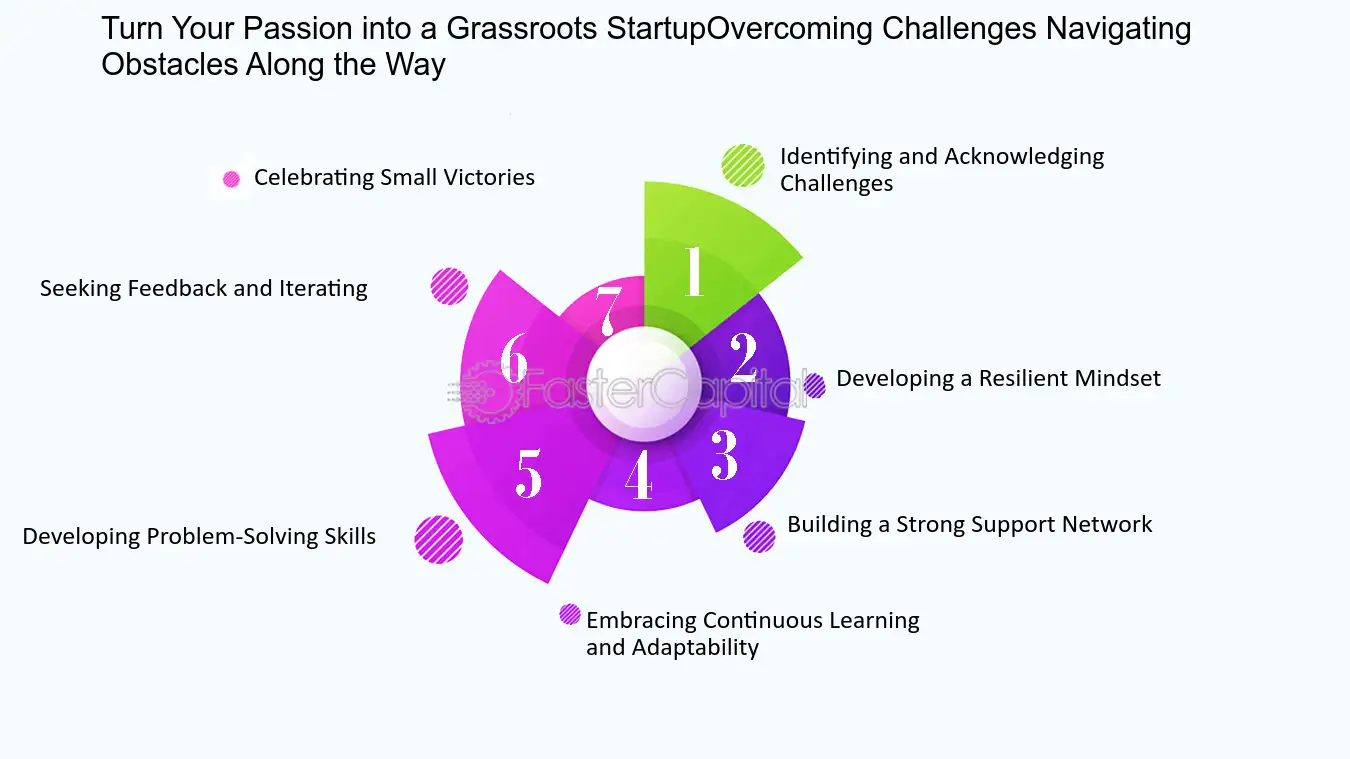
Turn Your Passion into a Grassroots Startup:Overcoming Challenges: Navigating Obstacles Along the Way - From Idea to Reality: Turn Your Passion into a Grassroots Startup
24. Grassroots Organizing Startups Driving Global Change:Overcoming Challenges: Navigating Obstacles in the Journey from Local to Global
1. Understanding the Global Landscape
When expanding from a local startup to a global entity, it is crucial to have a deep understanding of the global landscape. This includes researching and analyzing the target market, identifying cultural differences and preferences, and comprehending the legal and regulatory frameworks of different countries. For example, a local food delivery startup looking to expand globally would need to consider the dietary preferences, food regulations, and delivery infrastructure of each target market.
2. Adapting to Cultural Differences
One of the biggest challenges in going from local to global is adapting to cultural differences. Each country has its own unique customs, traditions, and ways of doing business. It is essential to be sensitive to these differences and adapt your product or service accordingly. For instance, a clothing brand expanding internationally would need to consider cultural norms around modesty, fashion trends, and sizing preferences in order to successfully cater to the global market.
3. Overcoming Language Barriers
Language barriers can pose a significant challenge when expanding internationally. Communication is key in building relationships with customers, partners, and suppliers. Overcoming language barriers can be achieved by hiring local staff who are fluent in the target market's language, utilizing professional translation services, or developing multilingual customer support systems. For example, a software company expanding globally would need to ensure that their product is available in multiple languages and that customer support is provided in the local language.
4. Establishing Trust and Building Relationships
Building trust and establishing relationships is crucial for success in the global market. It is important to invest time and effort into building relationships with local partners, suppliers, and customers. This can be achieved through networking events, attending trade shows, and leveraging existing connections. For instance, a local sustainable energy startup looking to expand globally would need to build relationships with local governments, energy companies, and environmental organizations to establish credibility and gain support.
5. Adapting to Regulatory and Legal Frameworks
Navigating the regulatory and legal frameworks of different countries can be complex and challenging. It is important to understand the local laws, regulations, and compliance requirements in each target market. This may involve consulting with legal experts or partnering with local firms who have expertise in navigating the local business environment. For example, a fintech startup expanding globally would need to comply with financial regulations, data privacy laws, and licensing requirements in each target market.
In conclusion, expanding from a local startup to a global entity comes with its own set of challenges. Understanding the global landscape, adapting to cultural differences, overcoming language barriers, establishing trust and building relationships, and navigating regulatory and legal frameworks are all crucial steps in successfully navigating the journey from local to global. By addressing these challenges head-on and implementing effective strategies, startups can drive global change and make a positive impact on a larger scale.
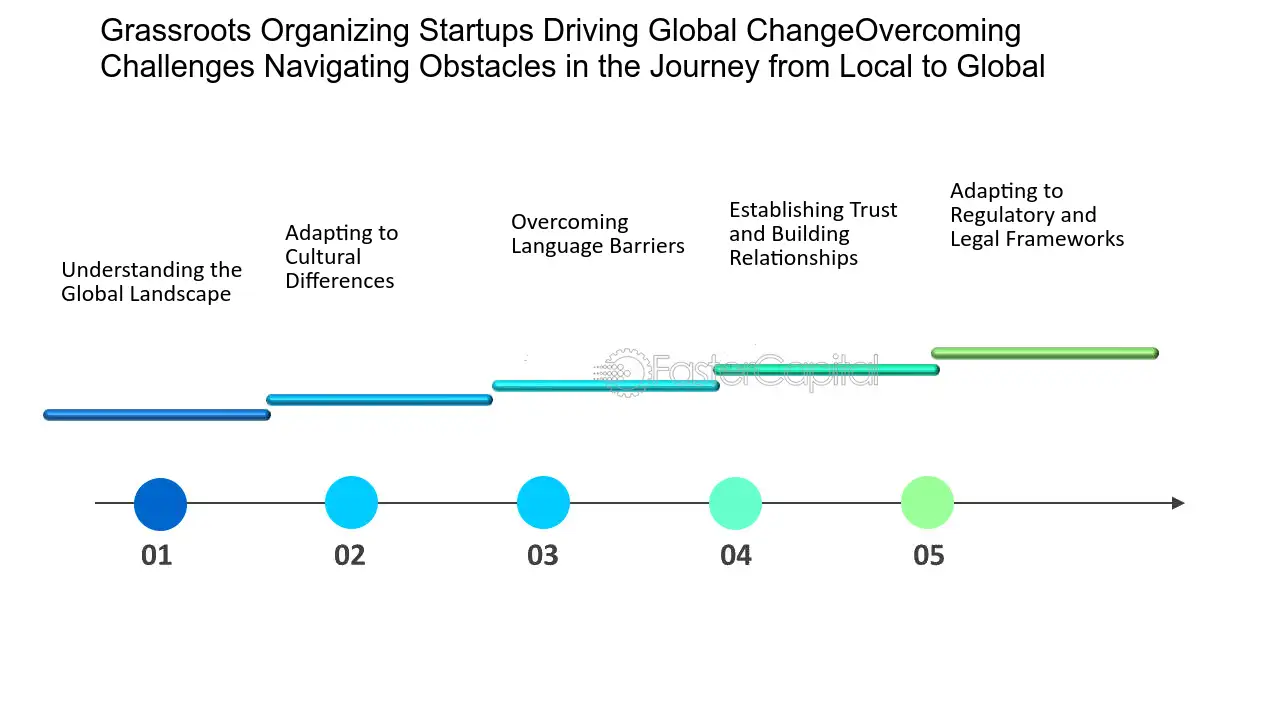
Grassroots Organizing Startups Driving Global Change:Overcoming Challenges: Navigating Obstacles in the Journey from Local to Global - From Local to Global: Grassroots Organizing Startups Driving Global Change
25. The Impact of Social Innovation Startups on Communities:Overcoming Challenges: Navigating Obstacles and Building Resilience in the Startup World
1. embracing Failure as a learning Opportunity
In the fast-paced and unpredictable world of startups, failure is almost inevitable. Many successful entrepreneurs and business leaders have experienced multiple setbacks and failures before achieving their goals. The key to overcoming challenges is to view failure as a learning opportunity rather than a roadblock.
For example, let's consider the case of a social innovation startup that aims to provide clean and affordable energy solutions to rural communities. Despite extensive market research and a well-crafted business plan, the startup may face obstacles such as limited funding, regulatory hurdles, and technical difficulties. Instead of giving up, the founders can use these challenges as valuable lessons to refine their approach, identify weaknesses, and find alternative solutions.
2. Building a Resilient Team
Navigating obstacles and building resilience in the startup world requires a strong and dedicated team. Surrounding yourself with talented individuals who share your vision and are willing to go the extra mile is crucial for overcoming challenges.
Take, for instance, a startup that focuses on addressing food insecurity in urban areas. The team may face obstacles such as limited resources, logistical challenges, and resistance from local authorities. By fostering a culture of resilience and teamwork, the startup can overcome these hurdles together. They can brainstorm innovative ways to optimize their resources, collaborate with local community organizations, and build strong relationships with government agencies to drive positive change.
3. Seeking Mentorship and Expert Guidance
One of the most effective ways to overcome challenges in the startup world is by seeking mentorship and expert guidance. Experienced mentors can provide valuable insights, share their own experiences, and offer guidance on navigating obstacles.
For instance, imagine a social innovation startup that aims to improve access to education for underprivileged children. The founders can seek mentorship from individuals who have successfully launched similar initiatives or have expertise in the education sector. These mentors can provide guidance on fundraising strategies, help navigate the complex regulatory landscape, and offer advice on building partnerships with schools and community organizations.
4. adapting to Changing market Conditions
In the rapidly evolving startup ecosystem, being adaptable is essential for overcoming challenges. Startups must be willing to adapt their business models, strategies, and products/services to meet the changing needs and demands of the market.
Consider a startup that develops a mobile app to connect volunteers with local community service opportunities. Initially, the app may face challenges such as low user adoption and difficulties in attracting volunteer organizations. By actively listening to user feedback, analyzing market trends, and continuously iterating on their product, the startup can overcome these obstacles. They may introduce new features, pivot their target audience, or forge strategic partnerships to stay relevant in the ever-changing landscape.
5. Cultivating a Positive Mindset
Last but not least, cultivating a positive mindset is crucial for overcoming challenges and building resilience in the startup world. Entrepreneurs must be able to stay motivated, optimistic, and focused even during the toughest times.
For example, a startup aiming to reduce plastic waste by creating sustainable packaging alternatives may face challenges such as market skepticism, resistance from established players, and manufacturing constraints. By staying positive and reminding themselves of the positive impact they can make, the founders can stay motivated and find creative solutions to overcome these challenges. They can leverage storytelling and social media to communicate their mission to a wider audience, collaborate with influencers, and showcase the environmental benefits of their product.
In conclusion, navigating obstacles and building resilience in the startup world is no easy feat. However, by embracing failure, building a resilient team, seeking mentorship, adapting to changing market conditions, and cultivating a positive mindset, social innovation startups can overcome challenges and make a lasting impact on communities.
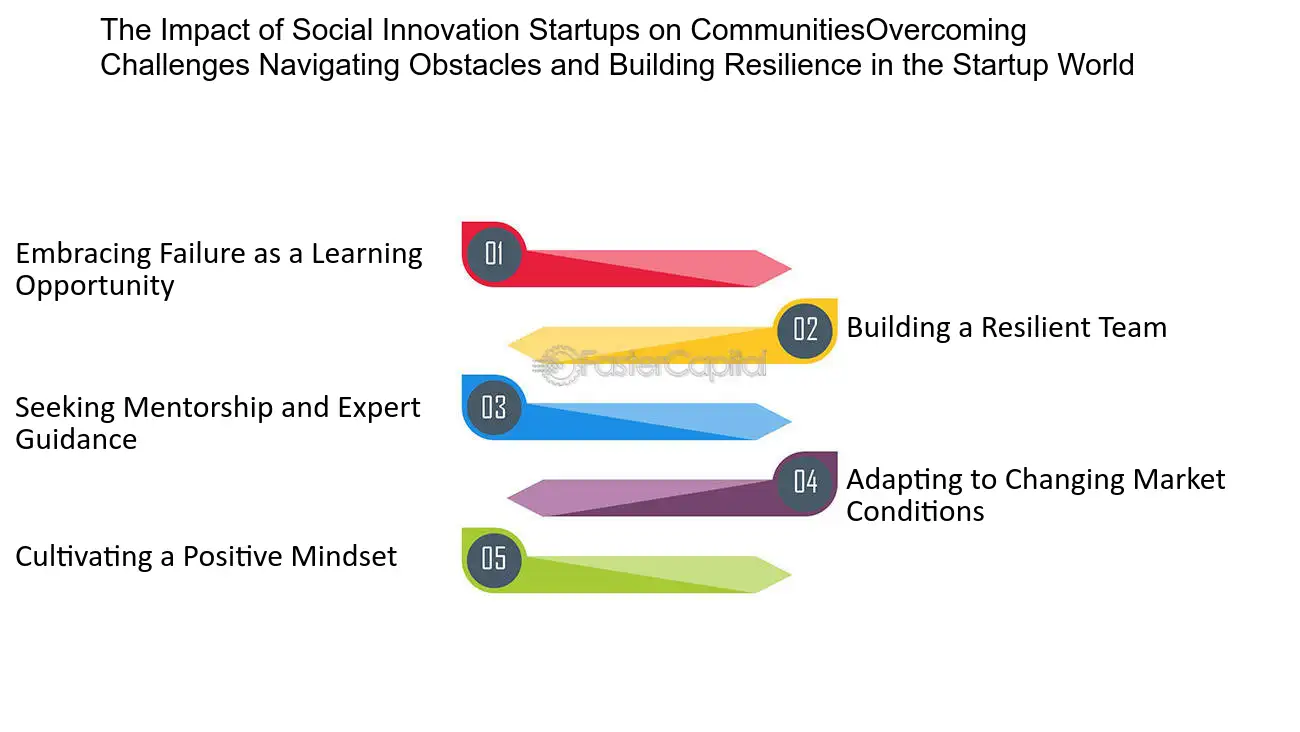
The Impact of Social Innovation Startups on Communities:Overcoming Challenges: Navigating Obstacles and Building Resilience in the Startup World - From Local to Global: The Impact of Social Innovation Startups on Communities
26. Navigating Obstacles in the Advocacy Process
1. Understanding the Advocacy Landscape
Advocacy is an essential part of our democratic society. It empowers individuals and groups to bring about change, whether it's in the form of policy reform, social justice, or any other area where progress is needed. However, the path to successful advocacy is riddled with challenges. One of the first obstacles advocates often face is understanding the complex landscape of advocacy itself.
- The Best Approach: The first decision to make is whether to engage in grassroots or grasstops advocacy. Grassroots advocacy involves mobilizing the general public to support a cause, often through petitions, rallies, and social media campaigns. Grasstops advocacy, on the other hand, targets key decision-makers directly, such as politicians or business leaders. The best approach often depends on the specific issue and the resources available. For instance, a local environmental group may find grassroots advocacy more effective for raising awareness about pollution in their community, while a national healthcare organization might focus on grasstops advocacy to influence federal healthcare policy.
- Case in Point: The American civil Rights movement employed a mix of grassroots and grasstops advocacy. While mass protests like the March on Washington were examples of grassroots mobilization, the civil rights leaders also engaged directly with politicians to push for legislative changes, showcasing the power of a multifaceted approach.
2. Crafting a Persuasive Message
Once you've chosen your advocacy approach, the next hurdle is crafting a persuasive message. Your message must resonate with your target audience, whether it's the general public or a specific decision-maker. It should be concise, compelling, and factually sound.
- The Best Approach: Research is your ally here. Understand your audience's concerns, values, and priorities. Tailor your message accordingly, emphasizing how your cause aligns with what they care about. Use clear and accessible language, avoiding jargon or technical terms that could alienate your audience. Data and personal stories can be powerful tools to back your message.
- Case in Point: In the push for marriage equality in the United States, advocates focused on the message of love, commitment, and equal rights. They utilized personal stories of same-sex couples to humanize the issue and gain support from both the public and influential politicians.
3. Building a Coalition
Advocacy often requires strength in numbers. Building a coalition of like-minded organizations or individuals can amplify your message and make it more challenging for decision-makers to ignore.
- The Best Approach: Identify potential partners who share your goals and values. Seek out organizations or individuals with expertise or influence in your advocacy area. Collaboration can bring in fresh perspectives, resources, and additional channels for spreading your message. The best coalition is one that combines various strengths, allowing for a unified and impactful front.
- Case in Point: The Global Alliance for Clean Cookstoves, an initiative to reduce indoor air pollution and promote clean cooking technologies, successfully united governments, NGOs, and private sector partners. By coordinating efforts and resources, they made a more significant impact and garnered support from various sectors, including health, environment, and economic development.
4. Lobbying and Advocacy
Lobbying, or engaging directly with decision-makers, is often a crucial aspect of advocacy. However, it's essential to navigate the legal and ethical considerations.
- The Best Approach: It's vital to research and understand lobbying regulations in your jurisdiction. In the United States, for example, there are rules governing who can lobby, what can be lobbied on, and the reporting requirements. Advocates need to comply with these laws while effectively engaging with lawmakers. Transparency is key, and maintaining a positive reputation is critical.
- Case in Point: The National Rifle Association (NRA) is known for its lobbying efforts related to gun control. They navigate the complex web of federal and state lobbying regulations, utilizing their significant influence in shaping gun policy in the United States.
5. Navigating Public Opinion
Public perception can significantly impact advocacy efforts. A tarnished image or public backlash can be a significant obstacle.
- The Best Approach: Stay attuned to public sentiment and be ready to adapt your messaging and strategies if needed. social media is a powerful tool for shaping public opinion, and responding to crises swiftly and honestly is essential. Engage with the public, address their concerns, and emphasize the positive impact of your advocacy efforts.
- Case in Point: Greenpeace faced backlash in 2018 for a protest that damaged a historic site in Peru. To manage public opinion, they apologized and emphasized their commitment to peaceful activism and environmental protection, ultimately working to rebuild their image.
In the world of advocacy, navigating obstacles is a constant challenge. By understanding the advocacy landscape, crafting a persuasive message, building coalitions, lobbying effectively, and managing public perception, advocates can better position themselves to overcome hurdles and drive positive change. The key is to remain adaptable, ethical, and committed to the cause, ensuring that your passion transforms into effective action.
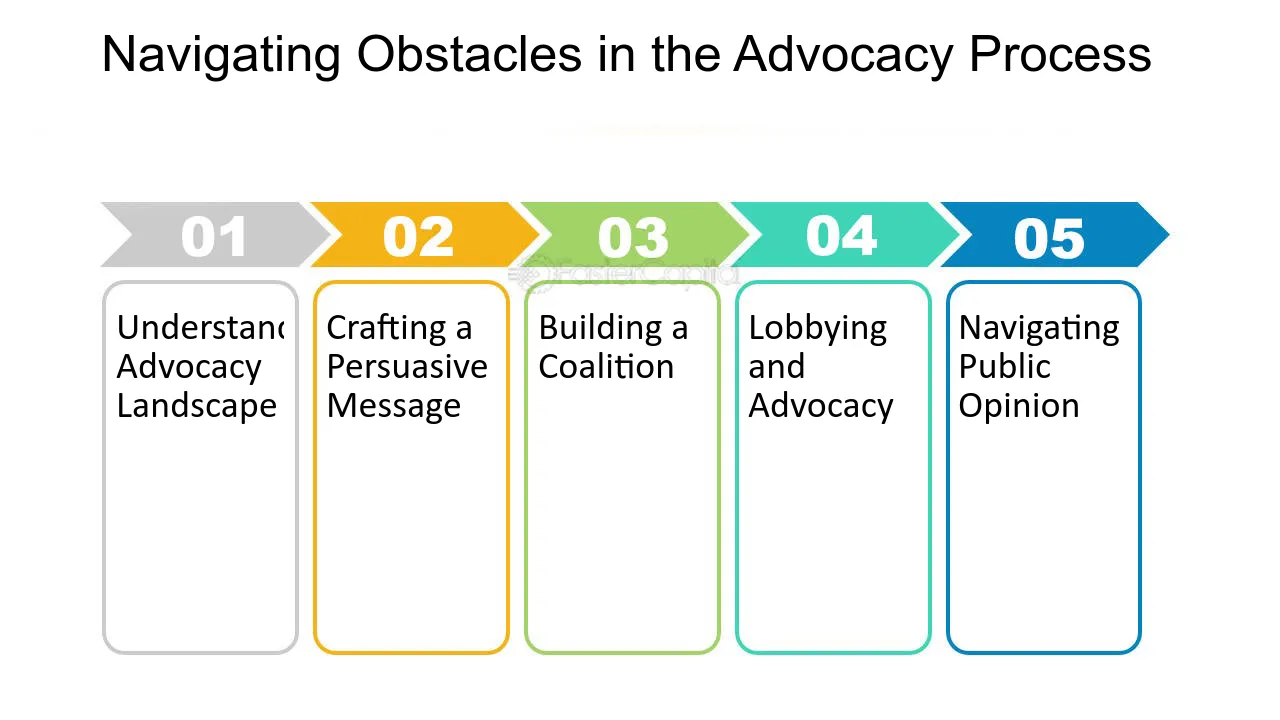
Navigating Obstacles in the Advocacy Process - From Passion to Action: The Art of Advocacy in Lobbying
27. Monetizing Your Creative Skills as an Entrepreneur:Overcoming Challenges: Navigating Obstacles on the Path to Success
1. setting Clear goals: The first step in overcoming challenges on the path to success is to set clear and well-defined goals. By knowing exactly what you want to achieve, you can create a roadmap that will guide you through any obstacles that come your way. For example, if you are a graphic designer looking to monetize your skills, your goal might be to start your own design agency. With this goal in mind, you can then break it down into smaller, actionable steps such as building a portfolio, marketing your services, and networking with potential clients.
2. embracing Failure as a learning Opportunity: Failure is a natural part of any journey towards success. Instead of letting it discourage you, view failure as a valuable learning opportunity. Take the time to analyze what went wrong, identify areas for improvement, and adjust your approach accordingly. For instance, if you launch a new product and it doesn't generate the expected sales, don't give up. Instead, gather feedback from customers, identify any shortcomings, and use that information to make necessary improvements.
3. building a Supportive network: Surrounding yourself with like-minded individuals who share your passion and goals can greatly contribute to overcoming challenges. A supportive network can provide advice, guidance, and encouragement when you need it most. Seek out networking events, join online communities, or even consider finding a mentor who can offer valuable insights based on their own experiences. By connecting with others who have faced similar challenges, you can gain valuable knowledge and support that can help propel you forward.
4. Embracing Adaptability: The ability to adapt to changing circumstances is essential for navigating obstacles on the path to success. The business landscape is constantly evolving, and being able to pivot and adjust your strategies is crucial. For example, if you're a photographer trying to monetize your creative skills, you might initially focus on offering wedding photography services. However, if the demand for wedding photography decreases, you can adapt by exploring other avenues such as portrait photography, product photography, or even offering workshops or online courses to share your knowledge with others.
5. Seeking Continuous Learning: The journey to success is a continuous learning process. Embrace a growth mindset and be open to constantly expanding your skills and knowledge. Invest in your personal and professional development by attending workshops, taking courses, or seeking out industry-specific certifications. By staying up-to-date with the latest trends and technologies, you can position yourself as an expert in your field and overcome challenges with confidence.
6. Maintaining Resilience and Perseverance: Challenges and obstacles are inevitable, but it's your resilience and perseverance that will ultimately determine your success. Don't let setbacks discourage you or derail your progress. Stay focused on your goals and remember why you started in the first place. Keep pushing forward, even when things get tough. Remember that success rarely comes overnight and that perseverance in the face of challenges is often the key to achieving your goals.
In conclusion, overcoming challenges on the path to success requires determination, adaptability, and a willingness to learn from failure. By setting clear goals, building a supportive network, embracing adaptability, seeking continuous learning, and maintaining resilience, you can navigate obstacles and turn your passion into a profitable venture as an entrepreneur.
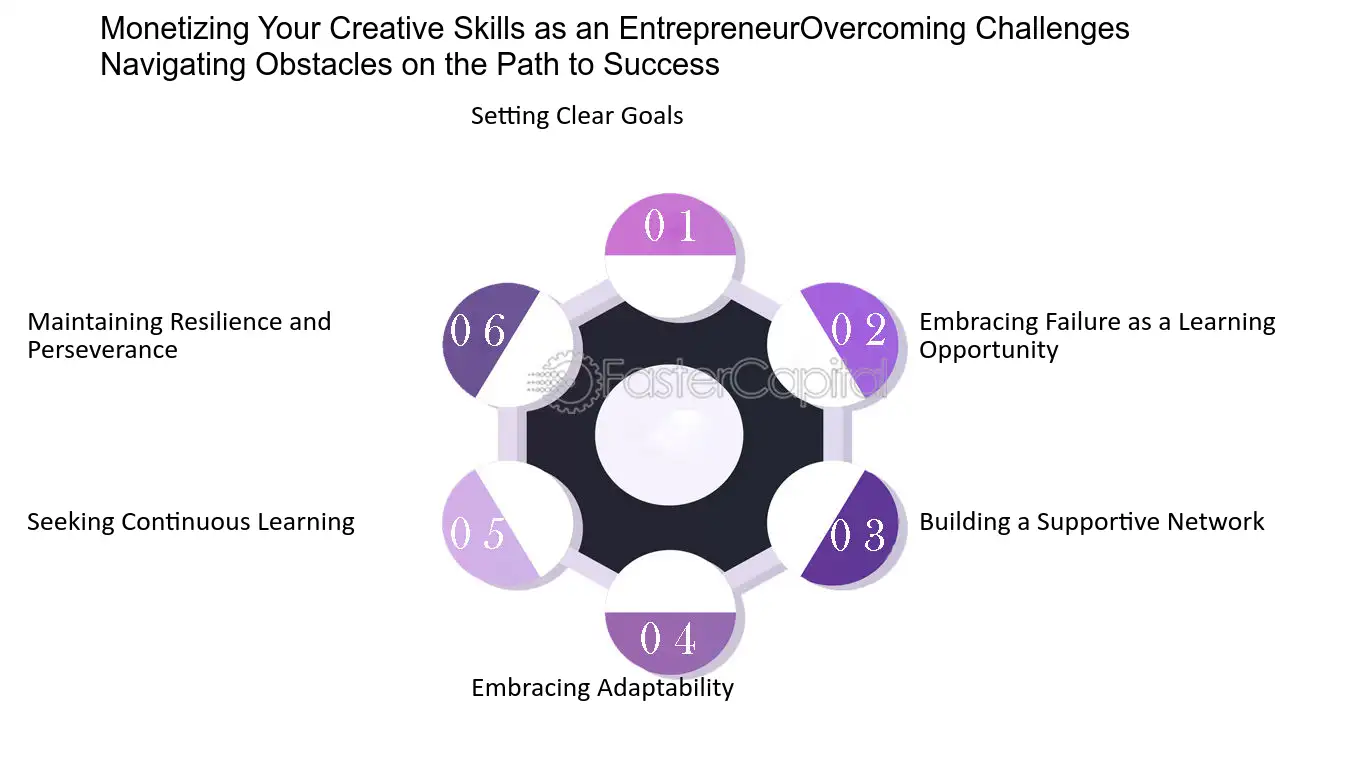
Monetizing Your Creative Skills as an Entrepreneur:Overcoming Challenges: Navigating Obstacles on the Path to Success - From Passion to Profit: Monetizing Your Creative Skills as an Entrepreneur
28. Start Your Journey as an Eco-preneur:Overcoming Challenges: Navigating the Obstacles in the Eco-business World
1. Identifying the Obstacles
When starting an eco-business, it's important to be prepared for the challenges that lie ahead. One of the first steps in navigating these obstacles is to identify them. This could include anything from financial constraints to a lack of market demand for eco-friendly products or services. By understanding the specific challenges you may face, you can begin to develop strategies to overcome them.
For example, let's say you're launching a sustainable fashion brand. One of the obstacles you may encounter is the higher cost of producing eco-friendly clothing compared to conventional options. By acknowledging this challenge, you can explore alternative materials or production methods that can help reduce costs without compromising on sustainability.
2. Building a Supportive Network
Navigating the eco-business world can be daunting, but you don't have to do it alone. Building a supportive network of like-minded individuals and organizations can be instrumental in overcoming challenges. This network can provide valuable advice, resources, and even potential collaborations that can boost your eco-business.
Consider joining local green business associations or attending industry conferences and events. These platforms offer opportunities to connect with other eco-preneurs who have faced similar challenges and can offer guidance based on their experiences. Additionally, online forums and social media groups dedicated to sustainability can also be valuable sources of support and information.
3. Embracing Innovation and Adaptability
In the fast-paced world of eco-business, being adaptable and embracing innovation is crucial. As challenges arise, it's important to stay open-minded and explore creative solutions. This could involve finding new ways to market your eco-friendly products, incorporating cutting-edge technology into your operations, or even pivoting your business model to better meet the needs of the market.
Take the example of a sustainable food startup facing distribution challenges due to limited access to traditional retail channels. By embracing innovation, they might explore direct-to-consumer online platforms or partner with local farmers markets to reach their target audience. Being willing to adapt and think outside the box can help overcome obstacles and keep your eco-business thriving.
4. Continual Learning and Education
The eco-business world is constantly evolving, and staying ahead requires continual learning and education. Investing in your own knowledge and skills can help overcome challenges by enabling you to make informed decisions and stay up-to-date with industry trends and best practices.
Consider attending workshops or webinars focused on sustainable business practices, enrolling in relevant online courses, or even pursuing certifications in areas such as renewable energy or green building. Gaining specialized knowledge can not only help you navigate obstacles but also give you a competitive edge in the eco-business market.
5. Celebrating Small Victories
Finally, it's important to celebrate the small victories along the way. Overcoming challenges in the eco-business world can be tough, but recognizing and celebrating your successes can help maintain motivation and momentum.
Whether it's securing your first major client, receiving positive feedback from customers, or achieving a sustainability milestone, take the time to acknowledge and appreciate these achievements. By celebrating small victories, you'll cultivate a positive mindset that will help you navigate future obstacles with resilience and determination.
In the world of eco-entrepreneurship, challenges are inevitable. However, by identifying obstacles, building a supportive network, embracing innovation, investing in education, and celebrating small victories, you can navigate the eco-business world with confidence and pave the way for a successful and sustainable venture.
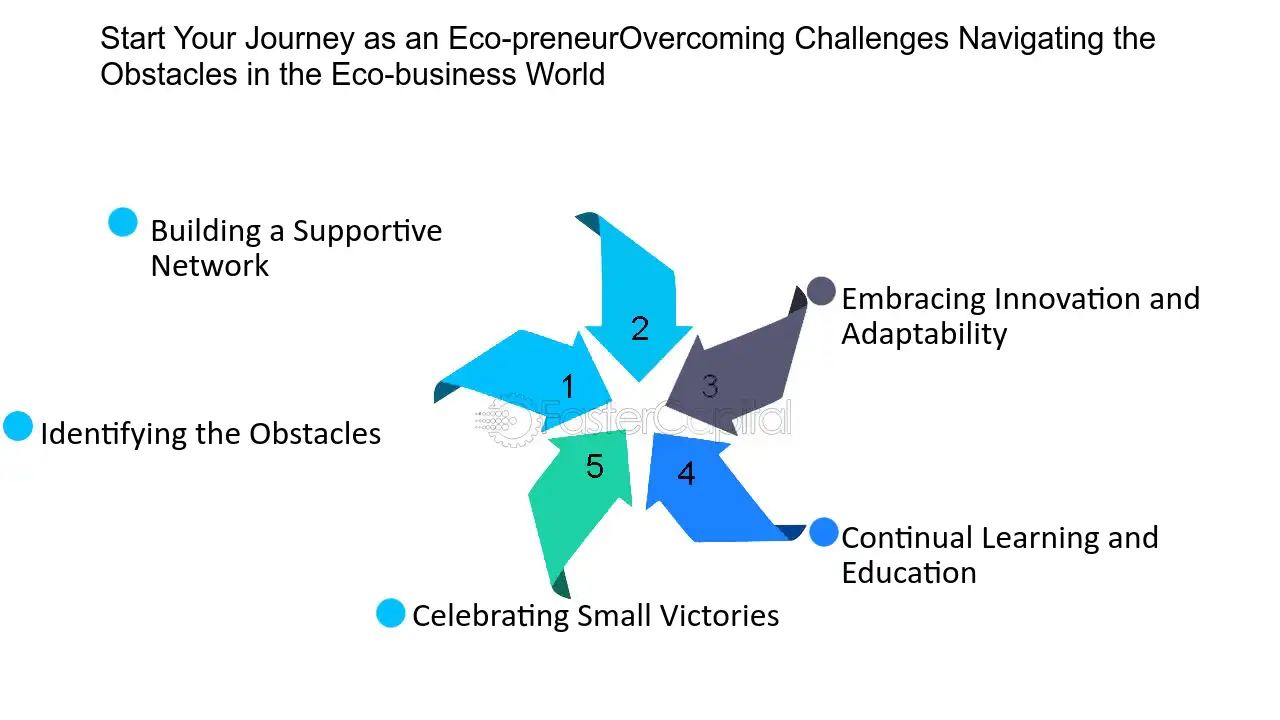
Start Your Journey as an Eco preneur:Overcoming Challenges: Navigating the Obstacles in the Eco business World - From Passion to Profit: Start Your Journey as an Eco preneur
29. Turning Your Idea into a Social Enterprise:Overcoming Challenges and Navigating Obstacles
1. Set Clear Goals: One of the first steps in overcoming challenges and navigating obstacles is to set clear and specific goals for your social enterprise. These goals will serve as your roadmap, helping you stay focused and motivated even when faced with difficulties. For example, if your social enterprise aims to provide education to underprivileged children, your goal could be to reach a certain number of children within a specific timeframe.
2. Identify Potential Challenges: Take some time to identify the potential challenges and obstacles that might arise along your journey. By anticipating these challenges, you can be better prepared to tackle them head-on. For instance, if your social enterprise relies heavily on volunteers, a potential challenge could be the difficulty in recruiting and retaining volunteers. By identifying this challenge beforehand, you can develop strategies to address it, such as implementing a volunteer recognition program or actively engaging with community organizations.
3. Seek Support and Collaboration: Overcoming challenges is often easier when you have a strong support system in place. Reach out to like-minded individuals, organizations, and mentors who can provide guidance, advice, and support. Collaborating with others in the field can also lead to valuable partnerships and shared resources. For example, if your social enterprise focuses on sustainable farming, you could collaborate with local farmers' associations or environmental organizations to exchange knowledge and resources.
4. Embrace Flexibility and Adaptability: The journey of turning your idea into a social enterprise is rarely a linear one. It's important to embrace flexibility and adaptability, as unexpected challenges and obstacles may arise. Being open to change and willing to adjust your strategies can help you navigate these obstacles more effectively. For instance, if your initial business model is not generating the desired results, be open to pivoting and exploring alternative approaches.
5. Learn from Failure: Failure is inevitable, but it doesn't have to be the end of your journey. Instead, view failure as a valuable learning opportunity. Analyze what went wrong, identify areas for improvement, and use those lessons to refine your strategies moving forward. For example, if a fundraising campaign doesn't meet its target, take the time to evaluate the campaign's effectiveness, adjust your messaging, and try again with a new approach.
6. Stay Persistent and Resilient: Building a social enterprise is a long-term commitment that requires persistence and resilience. There will undoubtedly be setbacks and moments of doubt, but it's important to stay determined and focused on your mission. Remember why you started this journey in the first place and let that passion drive you forward.
In conclusion, overcoming challenges and navigating obstacles is an integral part of turning your idea into a successful social enterprise. By setting clear goals, identifying potential challenges, seeking support, embracing flexibility, learning from failure, and staying persistent, you can overcome the hurdles that come your way and make a positive impact on the world.
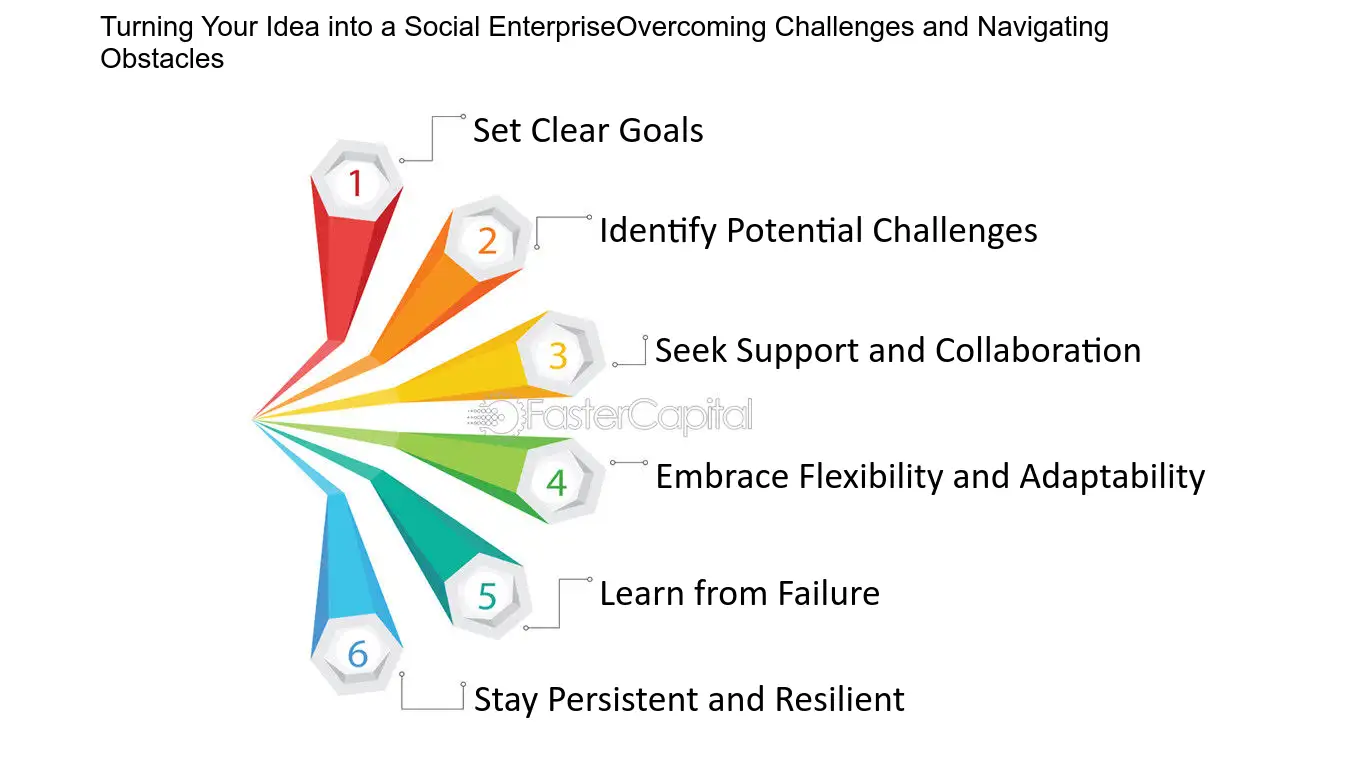
Turning Your Idea into a Social Enterprise:Overcoming Challenges and Navigating Obstacles - From Passion to Profit: Turning Your Idea into a Social Enterprise
30. Navigating Obstacles in the Innovation Process
Innovation is a dynamic and iterative process that involves taking an idea from its initial concept to a fully developed product. Along this journey, innovators often encounter various challenges and obstacles that can hinder progress. However, overcoming these challenges is crucial for the successful evolution of an innovation. In this section, we will explore some common obstacles faced during the innovation process and discuss strategies to navigate them effectively.
1. Lack of Resources: One of the most common challenges faced by innovators is a lack of resources, whether it's financial, human, or technological. Limited resources can impede the development and implementation of an innovation, as they restrict the ability to conduct research, acquire necessary equipment, or hire skilled personnel. To overcome this obstacle, innovators can seek funding opportunities and partnerships, leverage open-source platforms or crowdsource talent, and prioritize resource allocation based on critical needs.
For example, a startup developing a new medical device may face financial constraints in conducting clinical trials. In such a scenario, the innovators can explore grants or venture capital funding, collaborate with research institutions for cost-sharing, or seek partnerships with established healthcare organizations to access their resources.
2. Resistance to Change: Resistance to change is another significant obstacle in the innovation process. People are often comfortable with the status quo and skeptical of new ideas or approaches. This resistance can come from stakeholders within an organization, potential customers, or even regulatory bodies. Overcoming resistance to change requires effective communication, showcasing the benefits and value proposition of the innovation, and building trust among stakeholders.
For instance, when introducing a new software solution to streamline business processes, the innovators can organize demonstrations and training sessions to familiarize employees with the system's advantages. They can also address any concerns or misconceptions upfront, involve key stakeholders in the decision-making process, and provide ongoing support during the transition period.
3. Intellectual Property Concerns: protecting intellectual property is crucial for innovators, as it ensures that their ideas and inventions remain exclusive and prevent competitors from exploiting their work. However, navigating the complex landscape of intellectual property rights can be challenging. Innovators must understand the various types of protection available, such as patents, trademarks, copyrights, and trade secrets, and determine the most appropriate approach for their innovation.
For example, a software company developing a unique algorithm may face concerns about protecting their code from being copied or reverse-engineered. In such cases, they can consult intellectual property attorneys, file for patents or copyrights, and implement strict access controls and encryption methods to safeguard their proprietary technology.
4. Market Viability and Customer Acceptance: An innovation may face challenges in gaining market acceptance or proving its viability. It can be difficult to predict customer preferences, market demand, and competitive landscape accurately. To overcome this obstacle, innovators must conduct thorough market research, engage potential customers for feedback, and continuously refine their product or service based on user insights.
For instance, a food startup launching a new plant-based protein product may face challenges in understanding the target market's preferences and acceptance. They can conduct surveys, focus groups, and taste tests to gather feedback, iterate their product based on the findings, and build a strong brand identity that resonates with their target audience.
Innovation is not a linear path devoid of challenges; rather, it is a journey filled with obstacles that require perseverance and adaptability. By acknowledging and addressing these challenges head-on, innovators can navigate the innovation process successfully and bring their ideas to fruition.

Navigating Obstacles in the Innovation Process - From Prototype to Product: The Evolution of Innovation
31. Navigating the Obstacles of Implementing Structural Pivots
1. Clearly Define the Purpose and Goals of the Structural Pivot
When embarking on a structural pivot, it is crucial to have a clear understanding of why the change is necessary and what specific goals you hope to achieve. Without a well-defined purpose, it can be easy to lose focus and become overwhelmed by the challenges that arise during the implementation process. Take the time to articulate the desired outcomes and communicate them effectively to all stakeholders involved. For example, if a company decides to shift from a traditional brick-and-mortar business model to an e-commerce platform, the purpose might be to expand reach and increase sales by tapping into the online market.
2. Develop a Detailed Plan and Timeline
Once the purpose and goals are established, it is essential to create a comprehensive plan that outlines the steps required to implement the structural pivot. Break down the process into manageable tasks and assign responsibilities to team members who possess the necessary skills and expertise. Additionally, set realistic timelines for each phase of the implementation to ensure progress is being made and to hold everyone accountable. A well-structured plan will help keep everyone on track and minimize the risk of facing unexpected obstacles.
3. Communicate Openly and Transparently
Effective communication is paramount when navigating the challenges of implementing structural pivots. Be open and transparent with employees, customers, and other stakeholders about the changes taking place and the reasons behind them. Transparency fosters trust and helps alleviate concerns or resistance that may arise during the transition. Regularly provide updates on the progress of the pivot, address any questions or concerns, and actively seek input from those affected. By involving everyone in the process and maintaining open lines of communication, you can overcome challenges more effectively.
4. Anticipate and Address Resistance
Resistance to change is a common obstacle when implementing structural pivots. People naturally feel comfortable with what they know and may resist or fear the unknown. To overcome this challenge, it is crucial to anticipate resistance and address it proactively. Provide clear explanations about the benefits of the pivot and how it aligns with the company's long-term vision. Offer support and training to help employees adapt to new processes or technologies. Sharing success stories and case studies of companies that have successfully implemented similar changes can also help alleviate concerns and build confidence in the new direction.
5. Learn from Failure and Adapt
Not every structural pivot will go according to plan, and it is essential to view setbacks as learning opportunities rather than insurmountable obstacles. If a particular strategy or approach does not yield the desired results, be willing to pivot within the pivot. Analyze what went wrong, identify areas for improvement, and adjust your plan accordingly. embracing a growth mindset and being adaptable can help overcome challenges more effectively and lead to a more successful implementation.
Implementing structural pivots can be a complex and challenging process, but with proper planning, open communication, and a willingness to adapt, businesses can navigate the obstacles and achieve their desired outcomes. By clearly defining the purpose and goals, developing a detailed plan, communicating openly, addressing resistance, and learning from failure, organizations can successfully overcome the challenges that arise during the implementation of structural pivots.
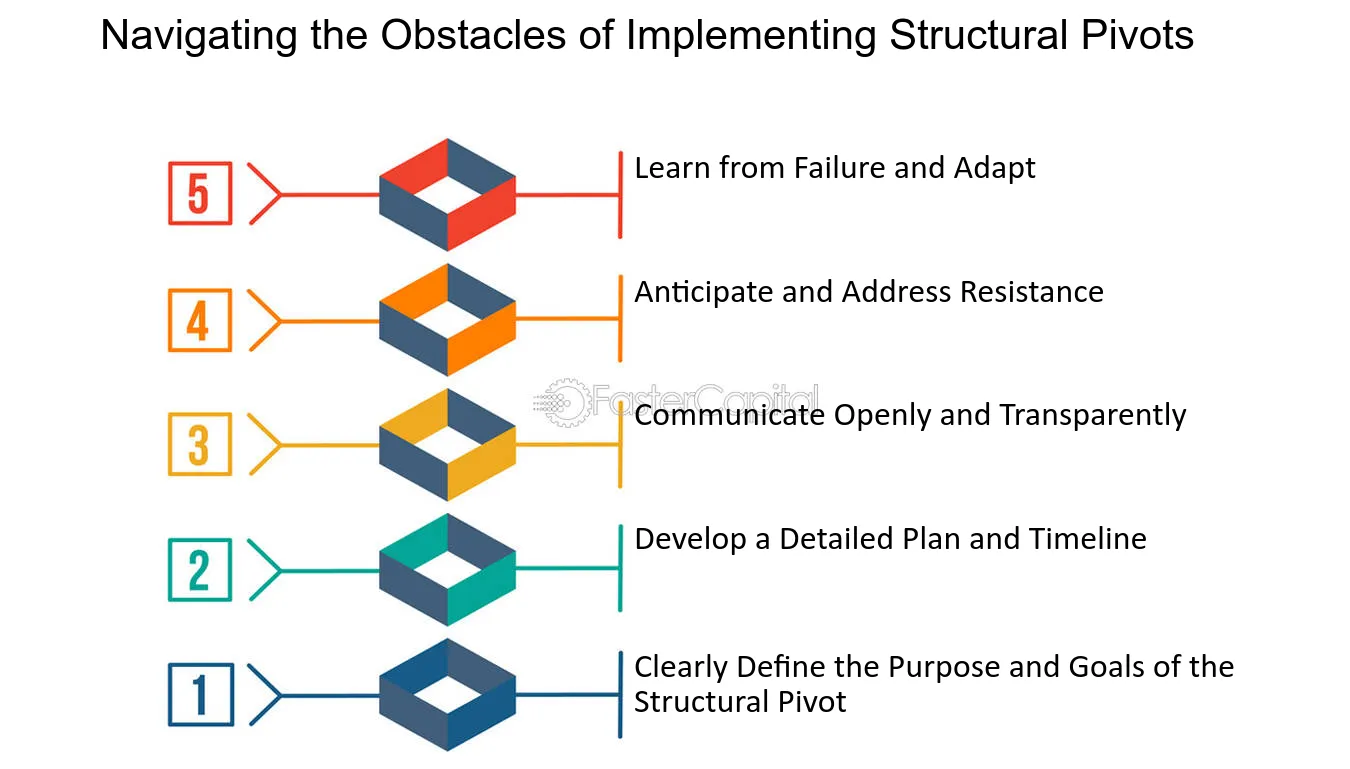
Navigating the Obstacles of Implementing Structural Pivots - From Stagnation to Success: The Impact of Structural Pivots
32. Lessons from Top Entrepreneurs:Overcoming Challenges: Navigating Obstacles and Setbacks
1. Embrace a Growth Mindset
One of the most important factors in overcoming challenges is to cultivate a growth mindset. This mindset allows you to view obstacles and setbacks as opportunities for learning and improvement. Instead of seeing failure as a reflection of your abilities, understand that it is a natural part of the entrepreneurial journey. embracing a growth mindset means being open to feedback, adapting to change, and constantly seeking ways to improve.
For example, consider the story of entrepreneur Sarah Blakely, the founder of Spanx. Blakely faced numerous challenges in the early stages of her business, including rejection from potential investors and manufacturing difficulties. However, she persevered by maintaining a growth mindset. She took each setback as an opportunity to learn and grow, ultimately building a billion-dollar company.
2. Break Challenges into Manageable Steps
When faced with a daunting challenge, it can be overwhelming to tackle it head-on. Instead, break the challenge into smaller, more manageable steps. This approach allows you to focus on one aspect at a time, making the overall task less intimidating.
Let's say you're launching a new product and facing logistical challenges in the supply chain. Instead of trying to solve the entire supply chain issue at once, break it down into smaller steps. Start by identifying the specific bottlenecks and then work on finding solutions for each one. By tackling each step individually, you'll make progress and gain momentum, ultimately overcoming the challenge.
3. Seek Support and Guidance
Entrepreneurship can be a lonely journey, but it doesn't have to be. Surround yourself with a network of mentors, advisors, and fellow entrepreneurs who can provide support and guidance. These individuals can offer valuable insights, share their experiences, and help you navigate through obstacles.
For example, consider the story of Brian Chesky, the co-founder and CEO of Airbnb. When faced with legal challenges and regulatory hurdles, Chesky sought advice from experienced entrepreneurs who had faced similar obstacles. Their guidance and support helped him overcome these challenges and grow Airbnb into a global company.
4. Stay Persistent and Resilient
Challenges and setbacks are a normal part of the entrepreneurial journey. What sets successful entrepreneurs apart is their ability to stay persistent and resilient in the face of adversity. Rather than giving up when things get tough, they find creative solutions, adapt their strategies, and keep pushing forward.
Take the story of Elon Musk, the founder of SpaceX and Tesla. Musk faced numerous setbacks in his pursuit of space exploration and electric vehicles. From failed rocket launches to production delays, he encountered numerous challenges. However, his persistence and resilience allowed him to overcome these obstacles and achieve remarkable success.
In conclusion, navigating obstacles and setbacks is an integral part of the entrepreneurial journey. By embracing a growth mindset, breaking challenges into manageable steps, seeking support and guidance, and staying persistent and resilient, entrepreneurs can overcome any challenge that comes their way. Remember, it's not about avoiding challenges, but rather how you handle them that determines your success.
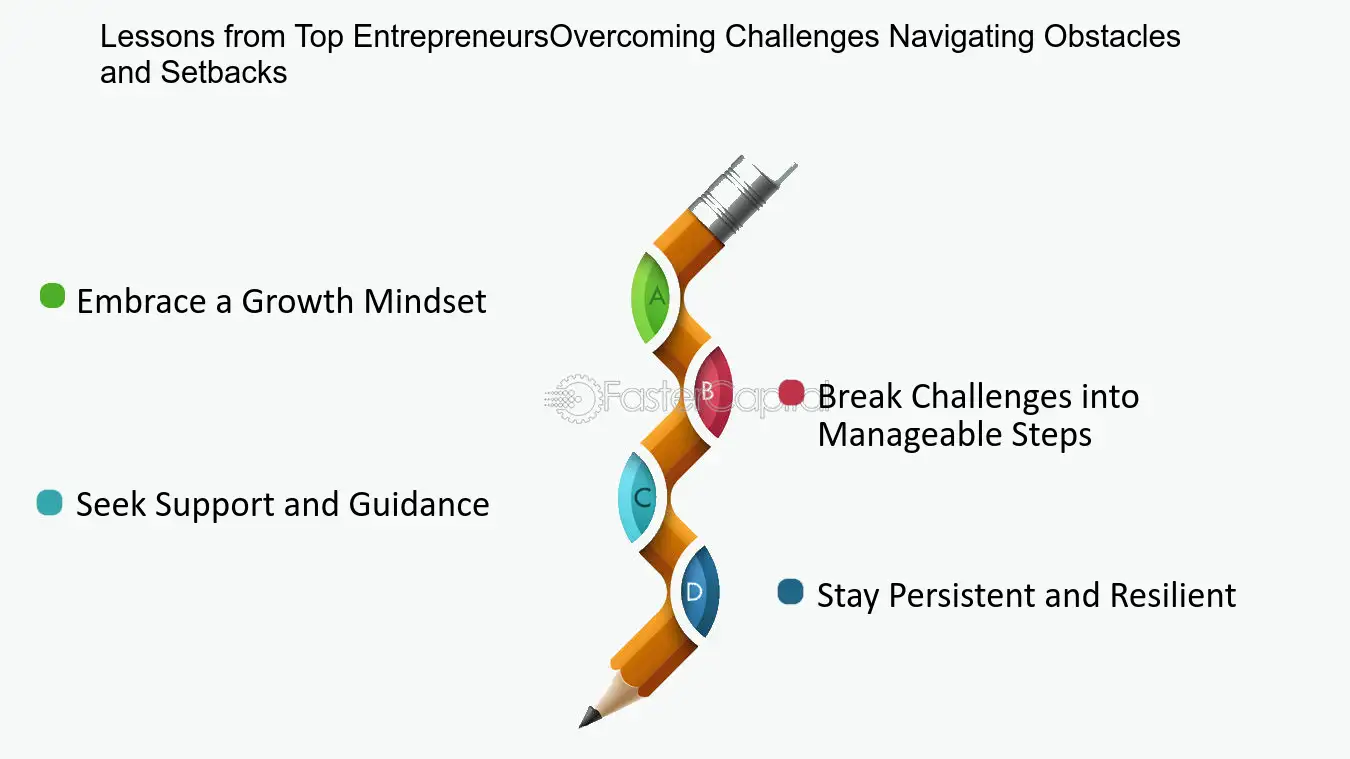
Lessons from Top Entrepreneurs:Overcoming Challenges: Navigating Obstacles and Setbacks - From Start Up to Serial Success: Lessons from Top Entrepreneurs
33. The Evolution of Grassroots Advocacy:Overcoming Challenges: Navigating Obstacles in Grassroots Advocacy
1. Identify your goal and target audience
Before embarking on any grassroots advocacy campaign, it is crucial to clearly define your goal and identify your target audience. Are you advocating for a specific policy change, raising awareness about a particular issue, or seeking support for a cause? Understanding your objectives will help you develop a focused and effective strategy.
For example, let's say you are advocating for stricter regulations on single-use plastics. Your goal might be to raise awareness about the environmental impact of plastic waste and gather support from local communities, businesses, and policymakers.
2. Build a strong coalition
Grassroots advocacy is most effective when individuals and organizations come together to amplify their message. Building a strong coalition of supporters can provide a broader reach and increase your chances of success. Look for like-minded organizations, community groups, and individuals who share your passion and are willing to collaborate.
To illustrate, imagine you are advocating for better access to mental health services in your community. You could form a coalition with local mental health organizations, healthcare providers, community leaders, and individuals who have been personally affected by mental health issues. By working together, you can pool resources, share expertise, and create a united front to advocate for change.
3. Develop a comprehensive strategy
Creating a well-defined strategy is crucial for navigating the obstacles in grassroots advocacy. Start by conducting a thorough assessment of the current landscape, including identifying potential barriers and opportunities. This will help you tailor your approach and allocate resources effectively.
For instance, if you are advocating for affordable housing in your city, your strategy might include conducting research to gather data on the housing crisis, organizing community forums and public meetings to engage stakeholders, and leveraging social media platforms to raise awareness and mobilize support.
4. Utilize multiple communication channels
To effectively communicate your message, it is essential to utilize multiple communication channels. This can include traditional methods such as organizing public events, distributing flyers, and reaching out to local media outlets. Additionally, leveraging digital platforms like social media, email newsletters, and online petitions can help you reach a wider audience and engage supporters.
Imagine you are advocating for equal access to education for underprivileged children. In addition to organizing rallies and meetings with policymakers, you could create a social media campaign featuring personal stories of students who have been affected by educational inequity. This multi-channel approach ensures that your message is accessible to different demographics and increases the likelihood of reaching your target audience.
5. Stay persistent and adaptable
Grassroots advocacy can be a long and challenging process. It is important to stay persistent and adapt your strategy as needed. Be prepared for setbacks and obstacles along the way, and don't be discouraged if progress is slow. Effective advocacy often requires a sustained effort and a willingness to adjust tactics based on feedback and changing circumstances.
For example, if you are advocating for LGBTQ+ rights, you may encounter opposition from individuals or groups with differing views. In such cases, it is important to stay focused on your goal, respond to criticism constructively, and adapt your messaging to address concerns and build understanding.
In conclusion, overcoming challenges in grassroots advocacy requires careful planning, collaboration, and adaptability. By setting clear goals, building strong coalitions, developing comprehensive strategies, utilizing multiple communication channels, and staying persistent, you can navigate obstacles and create meaningful change in your community. Remember, grassroots advocacy is a powerful tool for driving social change, and with dedication and perseverance, you can make a difference.
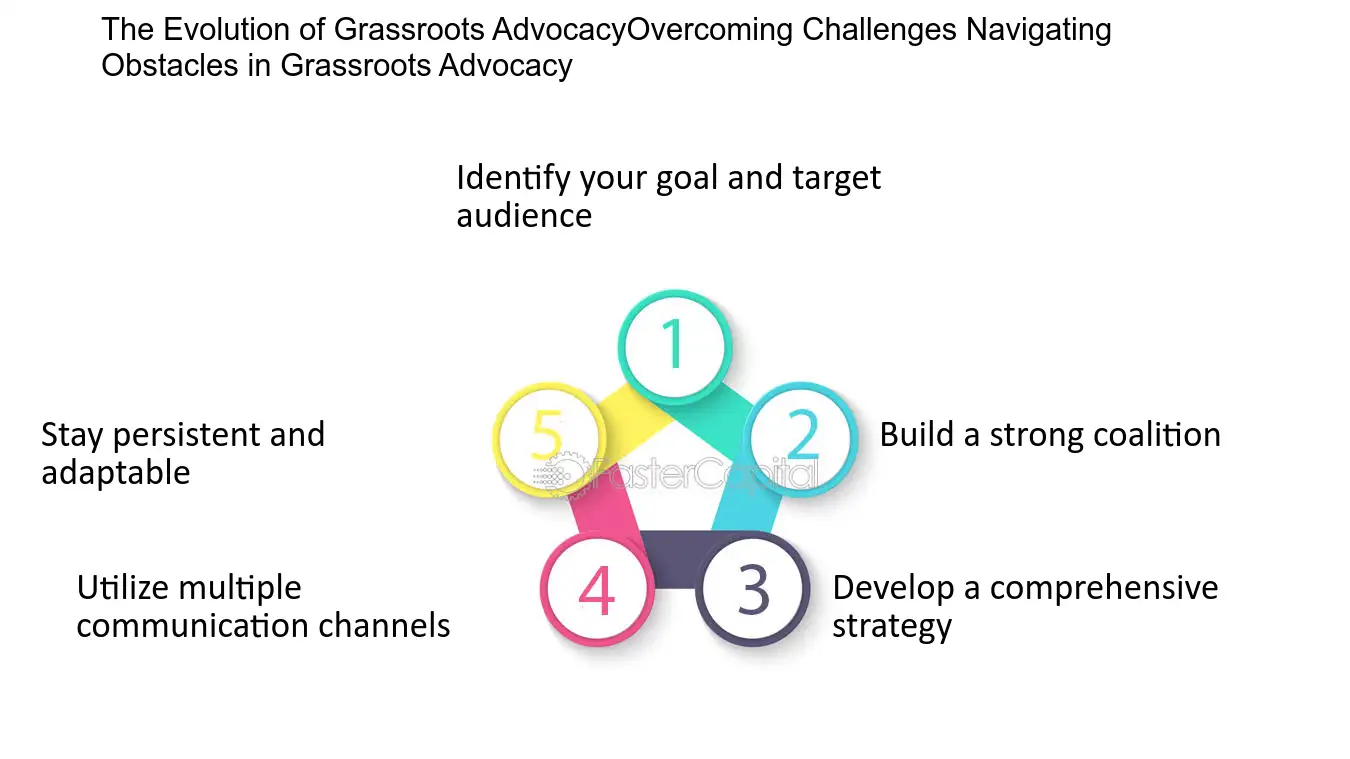
The Evolution of Grassroots Advocacy:Overcoming Challenges: Navigating Obstacles in Grassroots Advocacy - From Startup to Movement: The Evolution of Grassroots Advocacy
34. The Success Stories of Big Data Startups:Overcoming Challenges: Navigating Obstacles Faced by Big Data Startups
1. Identifying the Right Data Sources: One of the biggest challenges faced by big data startups is the identification and acquisition of the right data sources. With the vast amount of data available today, it can be overwhelming for startups to determine which data sources are relevant to their business goals. For example, a startup in the healthcare industry may need to find reliable sources of patient data, while a retail startup may require data on consumer behavior and purchasing patterns. Overcoming this challenge requires extensive research, networking, and partnerships with data providers to ensure access to the necessary data.
2. ensuring Data quality and Accuracy: Another significant obstacle for big data startups is the need to ensure the quality and accuracy of the data they collect and analyze. Poor data quality can lead to flawed insights and inaccurate predictions, which can have serious consequences for businesses relying on data-driven decision-making. Startups must invest in data cleansing and validation processes to eliminate errors and inconsistencies in the data. For instance, a startup in the financial sector may need to employ sophisticated algorithms and machine learning techniques to detect and correct anomalies in financial data.
3. Managing data Security and privacy: Data security and privacy concerns are increasingly important in today's digital landscape. Big data startups often face challenges in protecting sensitive customer information and complying with regulations such as the General Data Protection Regulation (GDPR). Startups must implement robust security measures to safeguard data against unauthorized access, theft, and breaches. They should also establish transparent data privacy policies and obtain consent from users before collecting and analyzing their data. For example, a startup in the social media analytics space may need to employ encryption techniques and access controls to protect user data.
4. Scaling Infrastructure and Storage: As big data startups grow and accumulate larger volumes of data, they need to address the challenge of scaling their infrastructure and storage capabilities. Traditional storage systems may struggle to handle the massive volumes of data generated by these startups. Cloud-based solutions, such as Amazon Web Services (AWS) and Google Cloud Platform (GCP), offer scalable and cost-effective options for storing and processing big data. Startups should carefully evaluate their storage needs and select the most suitable infrastructure to accommodate their growing data requirements.
5. attracting and Retaining Data Science talent: The field of data science is highly competitive, and startups often find it challenging to attract and retain top talent in this specialized area. Data scientists play a crucial role in analyzing and interpreting big data to derive meaningful insights. Startups need to offer competitive salaries, a stimulating work environment, and opportunities for professional growth to attract and retain skilled data science professionals. Additionally, fostering a culture of innovation and collaboration can help create an appealing workplace for data scientists.
In conclusion, big data startups face numerous challenges on their path to success. Identifying the right data sources, ensuring data quality and accuracy, managing data security and privacy, scaling infrastructure and storage, and attracting and retaining data science talent are just a few of the obstacles they must navigate. By addressing these challenges head-on and implementing effective strategies, big data startups can overcome these obstacles and thrive in the competitive landscape of the data-driven world.
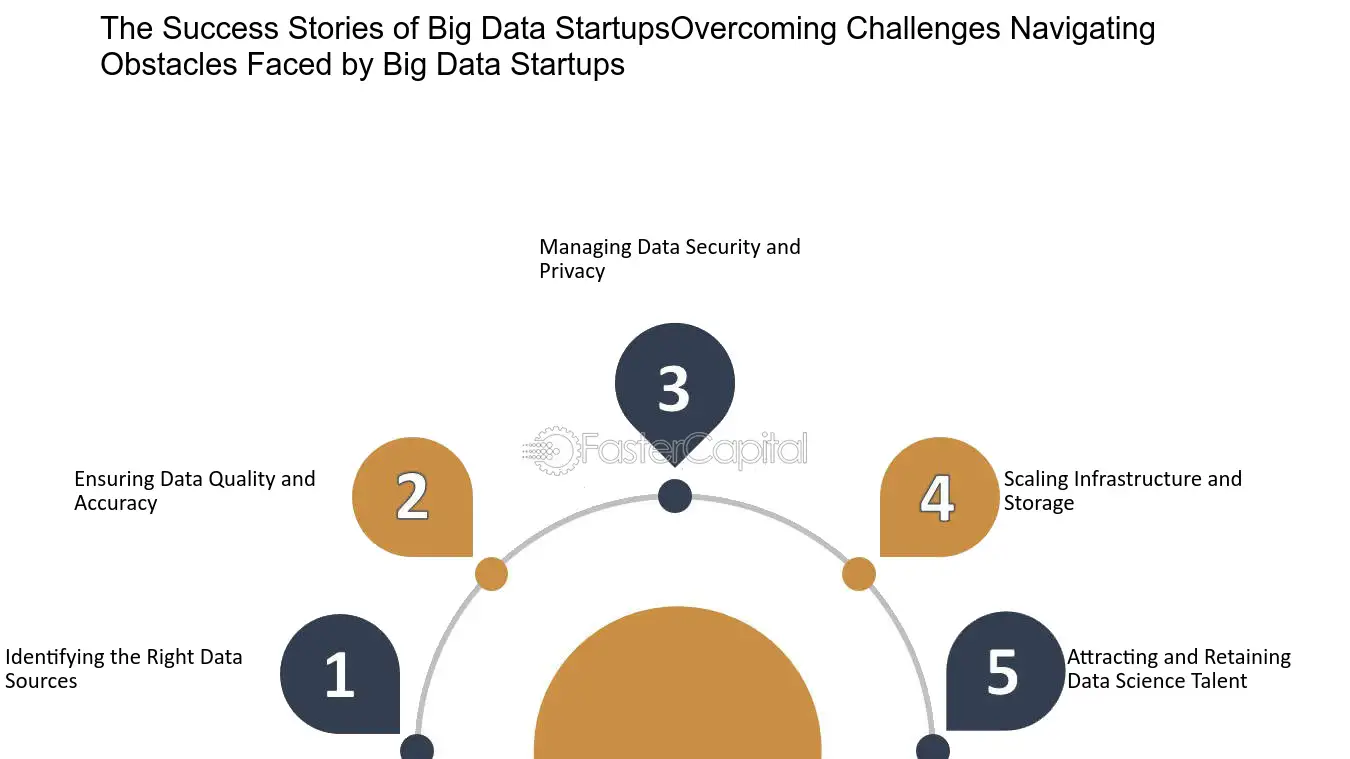
The Success Stories of Big Data Startups:Overcoming Challenges: Navigating Obstacles Faced by Big Data Startups - From Zero to Hero: The Success Stories of Big Data Startups
35. Maximizing Impact with Minimal Resources:Overcoming Challenges: Navigating Obstacles in Frugal Innovation Startups
1. Identifying and Prioritizing Challenges
One of the first steps in overcoming challenges in frugal innovation startups is to identify and prioritize the obstacles you may face. This requires a thorough understanding of your business model, market dynamics, and resource constraints. By analyzing these factors, you can identify the most critical challenges that need to be addressed.
For example, let's say you are running a frugal innovation startup that aims to provide affordable healthcare solutions to underserved communities. One of the key challenges you may face is the lack of access to quality medical infrastructure in these areas. Identifying this challenge as a top priority allows you to focus your efforts and resources on finding innovative solutions to address this obstacle.
2. Embracing Resource Constraints
Frugal innovation startups often operate with limited resources, and this can be a significant obstacle. However, by embracing resource constraints and adopting a mindset of doing more with less, you can turn these challenges into opportunities.
For instance, instead of hiring a large team of specialists, you can leverage the power of collaboration and partnerships. This enables you to tap into the expertise of external organizations or individuals who can contribute to your goals without the need for significant financial investments.
3. Leveraging Technology and Digital Solutions
In today's digital age, technology can play a pivotal role in overcoming challenges in frugal innovation startups. By leveraging technology and digital solutions, you can streamline operations, increase efficiency, and reach a wider audience, all while minimizing costs.
For example, implementing telemedicine solutions can help you provide healthcare services remotely, reducing the need for physical infrastructure and enabling access to medical expertise from anywhere. Similarly, using social media platforms and online marketing techniques can help you reach and engage with your target audience without hefty advertising budgets.
4. Tapping into Local Knowledge and Expertise
Frugal innovation startups often operate in resource-constrained environments, where local knowledge and expertise can be invaluable. By actively engaging with and tapping into the insights and experiences of local communities, you can better understand the challenges they face and co-create solutions that are tailored to their needs.
For instance, if you are developing agricultural solutions for small-scale farmers in a particular region, collaborating with local farmers, agricultural cooperatives, and research institutions can provide you with valuable insights into the specific challenges they encounter. This not only helps you develop more effective solutions but also builds trust and credibility within the community.
5. Iterating and Learning from Failure
In the journey of frugal innovation startups, failure is often an inevitable part of the process. However, it is essential to view failure as an opportunity for learning and improvement rather than a setback. By adopting an iterative approach and constantly learning from failure, you can refine your strategies, products, and services to better navigate obstacles.
For example, if a particular product fails to gain traction in the market, instead of giving up, you can analyze the reasons behind its failure and iterate on the design or marketing approach. This iterative process allows you to adapt quickly, test new ideas, and ultimately find the right solutions that resonate with your target audience.
In conclusion, navigating obstacles in frugal innovation startups requires a combination of strategic thinking, creativity, and resilience. By identifying challenges, embracing resource constraints, leveraging technology, tapping into local knowledge, and learning from failure, you can overcome obstacles and maximize the impact of your startup with minimal resources.
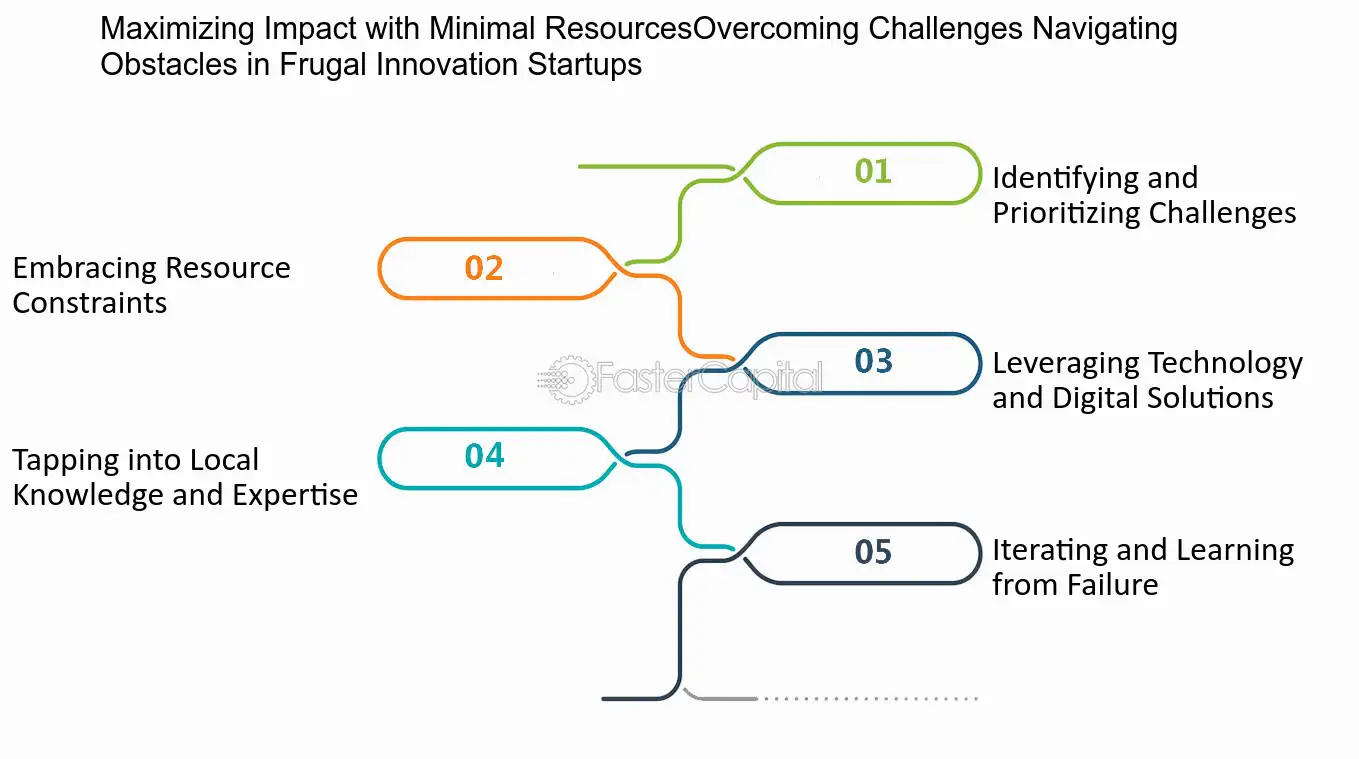
Maximizing Impact with Minimal Resources:Overcoming Challenges: Navigating Obstacles in Frugal Innovation Startups - Frugal Innovation Startups: Maximizing Impact with Minimal Resources
36. Navigating the Obstacles of Grave Site Conservation
Preserving the history and cultural heritage embodied in grave sites is a vital endeavor that requires careful consideration and meticulous attention. However, this noble task is not without its fair share of challenges. From natural deterioration to human interference, grave site conservation presents a myriad of obstacles that demand innovative solutions. In this section, we will explore some of the most common challenges faced by those involved in grave site conservation, as well as the solutions that have emerged to navigate these obstacles.
1. Natural Deterioration: Time and the elements can be unforgiving to grave sites, causing erosion, weathering, and structural damage. Harsh climatic conditions, such as extreme temperatures, heavy rainfall, or prolonged exposure to sunlight, can accelerate the degradation process. To combat this challenge, conservationists employ a range of techniques, including the use of protective coatings, such as consolidants and water-repellent materials, to shield vulnerable surfaces from further deterioration. Additionally, implementing proper drainage systems and monitoring moisture levels can help mitigate the effects of water damage.
2. Vandalism and Theft: Grave sites are not immune to acts of vandalism and theft. The desecration of graves, whether for personal gain or out of sheer disregard, is a distressing reality that conservationists must confront. To deter such acts, security measures such as surveillance cameras, fencing, and regular patrols are often implemented in high-risk areas. Engaging local communities and raising awareness about the historical and cultural significance of grave sites can also foster a sense of ownership and respect, reducing the likelihood of vandalism.
3. Lack of Funding and Resources: Grave site conservation requires significant financial resources, as well as skilled personnel equipped with the necessary knowledge and expertise. However, limited funding and a shortage of trained conservationists pose significant challenges. To overcome these obstacles, partnerships between government entities, nonprofits, and local communities can be established to pool resources and share the financial burden. Seeking grants and donations from organizations and individuals passionate about heritage preservation can also provide much-needed support for ongoing conservation efforts.
4. legal and Ethical considerations: Grave sites often fall under legal and ethical frameworks that dictate how they can be conserved and accessed. These considerations may vary from country to country and even within different regions. Striking a balance between preserving the integrity of the site and allowing public access for educational or commemorative purposes can be a delicate task. Collaboration between conservationists, historians, archaeologists, and legal experts is crucial in navigating the complex web of regulations and ensuring that grave site conservation is conducted in accordance with the law and ethical guidelines.
5. Community Engagement and Education: Involving local communities in the preservation of grave sites is vital for long-term sustainability. However, engaging community members and fostering their active participation can be challenging. Educating the public about the historical and cultural significance of grave sites through workshops, guided tours, and educational programs can foster a sense of responsibility and appreciation. By instilling a collective sense of ownership, communities become advocates for the conservation and protection of grave sites, ensuring their preservation for future generations.
Grave site conservation is a multifaceted endeavor that demands innovative solutions to overcome the various challenges it presents. By addressing natural deterioration, combating vandalism, securing adequate funding, navigating legal considerations, and engaging local communities, the preservation of grave sites can be achieved. Through these efforts, we can honor the past, preserve history, and ensure that the stories and legacies of those who came before us are safeguarded for generations to come.
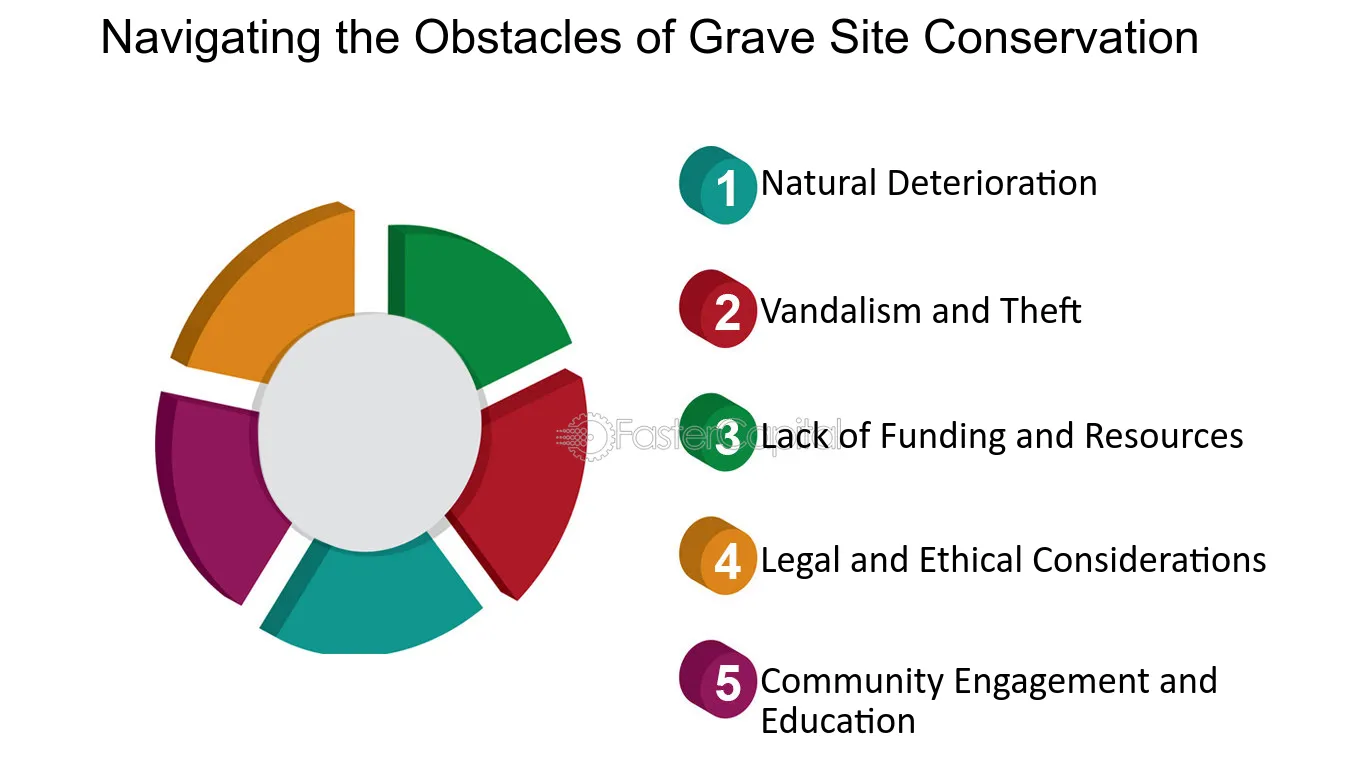
Navigating the Obstacles of Grave Site Conservation - Grave site: Preserving History: The Importance of Grave Site Conservation
37. Overcoming Challenges: Navigating Obstacles in the Social Entrepreneurship Journey
1. Identifying and Defining the Challenge
One of the first steps in overcoming challenges in the social entrepreneurship journey is to identify and define the specific obstacles you are facing. This could be anything from lack of funding, limited resources, or resistance from stakeholders. For example, let's say you are a social entrepreneur aiming to provide clean drinking water to a rural community. One of the challenges you may face is the lack of infrastructure for water purification and distribution.
2. Developing a Solution-Oriented Mindset
Once you have identified the challenges, it is important to adopt a solution-oriented mindset. Instead of dwelling on the problems, focus on finding innovative and sustainable solutions. This can involve brainstorming sessions, research, and collaboration with experts in the field. In the case of the clean drinking water initiative, you could explore alternative methods of water purification or seek partnerships with organizations that specialize in water infrastructure development.
3. Building a Strong Support Network
Navigating obstacles in the social entrepreneurship journey can be overwhelming, but having a strong support network can make a significant difference. Surround yourself with like-minded individuals, mentors, and advisors who can provide guidance, support, and encouragement. They can offer valuable insights based on their own experiences and help you stay motivated during challenging times. For instance, you could join social entrepreneurship networks, attend conferences, or connect with organizations that share similar goals.
4. Adapting and Embracing Failure
Failure is an inevitable part of any entrepreneurial journey, and social entrepreneurship is no exception. It is crucial to embrace failure as a learning opportunity and adapt accordingly. Don't be discouraged by setbacks; instead, use them as stepping stones towards success. For example, if your initial approach to providing clean drinking water in the rural community fails, take the time to assess what went wrong and adjust your strategy accordingly. Maybe you need to rethink the technology you're using, or perhaps you need to engage the community in a different way.
5. Leveraging Technology and Innovation
In today's digital age, technology and innovation can play a significant role in overcoming challenges in social entrepreneurship. Embrace technological advancements and leverage them to enhance your impact. For instance, you could explore crowdfunding platforms to raise funds, use social media to raise awareness about your cause, or implement data analytics to measure and track your progress. Technology can help you reach a wider audience, streamline your operations, and find creative solutions to complex problems.
6. Collaborating and Partnering with Stakeholders
Collaboration and partnerships can be powerful tools in overcoming obstacles in the social entrepreneurship journey. Engage with stakeholders who share your vision and mission, such as local communities, government agencies, non-profit organizations, and corporate entities. By working together, you can pool resources, knowledge, and expertise to tackle challenges more effectively. For example, you could partner with a local NGO that specializes in community development to implement your clean drinking water initiative.
In conclusion, navigating obstacles in the social entrepreneurship journey requires a combination of resilience, creativity, and strategic thinking. By identifying challenges, adopting a solution-oriented mindset, building a strong support network, embracing failure, leveraging technology, and collaborating with stakeholders, social entrepreneurs can overcome obstacles and drive sustainable change.
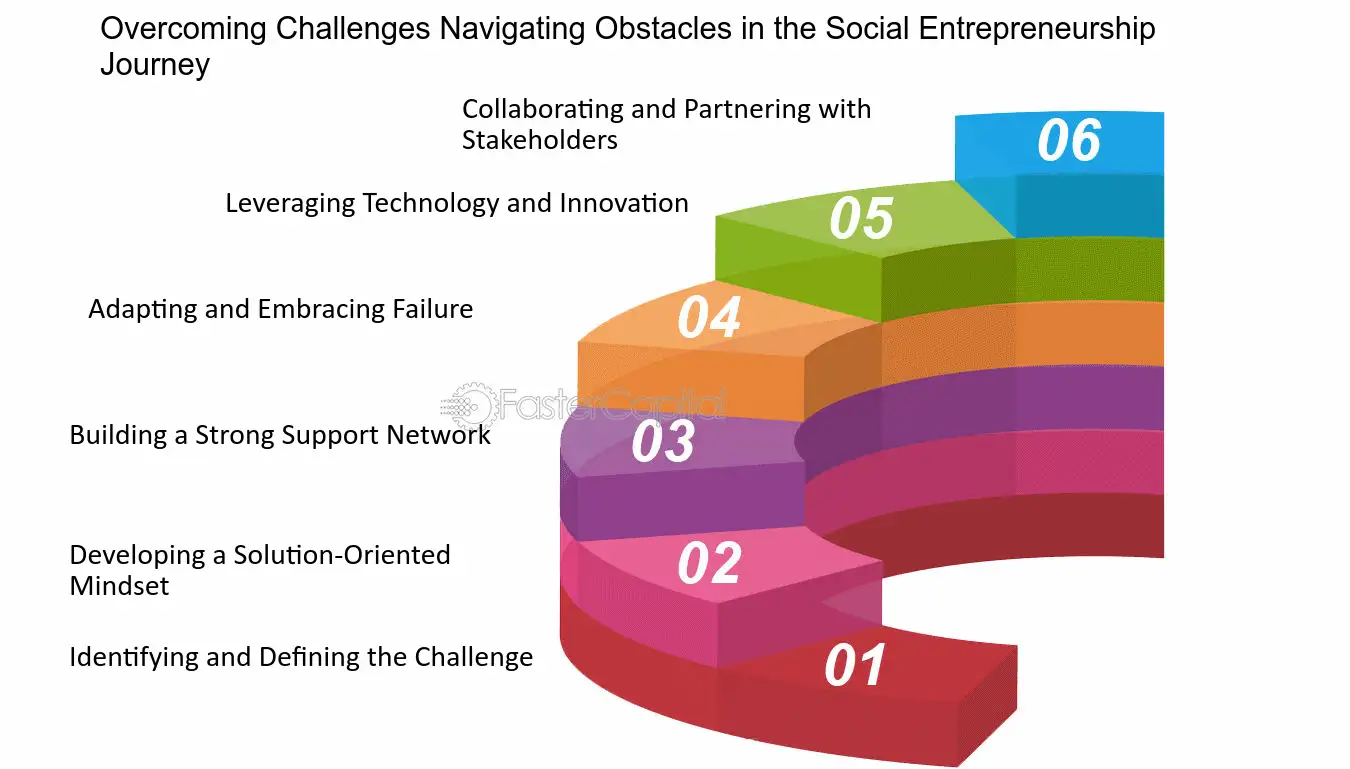
Overcoming Challenges: Navigating Obstacles in the Social Entrepreneurship Journey - How Social Entrepreneurs Can Drive Sustainable Change
38. Navigating Obstacles Along the Way
Navigating obstacles and overcoming challenges is an integral part of any journey towards success. While it may seem daunting to tackle the hurdles that come our way, it is important to remember that these obstacles can be opportunities for growth and learning. However, it is essential to approach these challenges with the right mindset, tools, and strategies to ensure that we emerge stronger and wiser.
1. Embrace a Growth Mindset
The first step towards overcoming challenges is to adopt a growth mindset. This means believing that our abilities and intelligence can be developed through hard work, perseverance, and dedication. When we view obstacles as opportunities for growth, we are more likely to approach them with a positive attitude and a willingness to learn from our mistakes. A growth mindset also helps us to see setbacks as temporary instead of permanent, which can be a powerful motivator to keep going.
2. Identify the Source of the Challenge
When we encounter obstacles, it is important to take a step back and identify the root cause of the challenge. Is it a lack of resources, knowledge, or skills? Is it a communication breakdown or a misalignment of goals? By pinpointing the source of the challenge, we can develop targeted strategies to address it. For example, if the challenge is a lack of resources, we can explore options for acquiring additional funding or reallocating existing resources.
3. Develop a Plan of Action
Once we have identified the source of the challenge, the next step is to develop a plan of action. This plan should include specific, measurable, achievable, relevant, and time-bound (SMART) goals that will help us to overcome the obstacle. It should also include a timeline, a list of resources needed, and a contingency plan in case of unexpected setbacks. By breaking down the challenge into smaller, manageable steps, we can make progress towards our goals and build momentum.
4. Build a Support Network
Building a support network of colleagues, mentors, and friends can be invaluable when navigating obstacles. These individuals can provide advice, feedback, and encouragement when we need it most. They can also offer a different perspective on the challenge and help us to see things in a new light. It is important to cultivate these relationships over time and to reciprocate the support when others need it.
5. Learn from Failure
Finally, it is important to remember that failure is a natural part of the learning process. When we encounter setbacks, it is an opportunity to reflect on what went wrong and to identify areas for improvement. By learning from our failures, we can develop new skills and strategies that will help us to overcome future challenges. It is important to approach failure with a growth mindset and to view it as a temporary setback rather than a permanent defeat.
Navigating obstacles and overcoming challenges is an essential part of any journey towards success. By embracing a growth mindset, identifying the source of the challenge, developing a plan of action, building a support network, and learning from failure, we can emerge stronger and wiser from the challenges we face. Remember, challenges are opportunities for growth and learning, and with the right mindset and strategies, we can achieve lasting results.
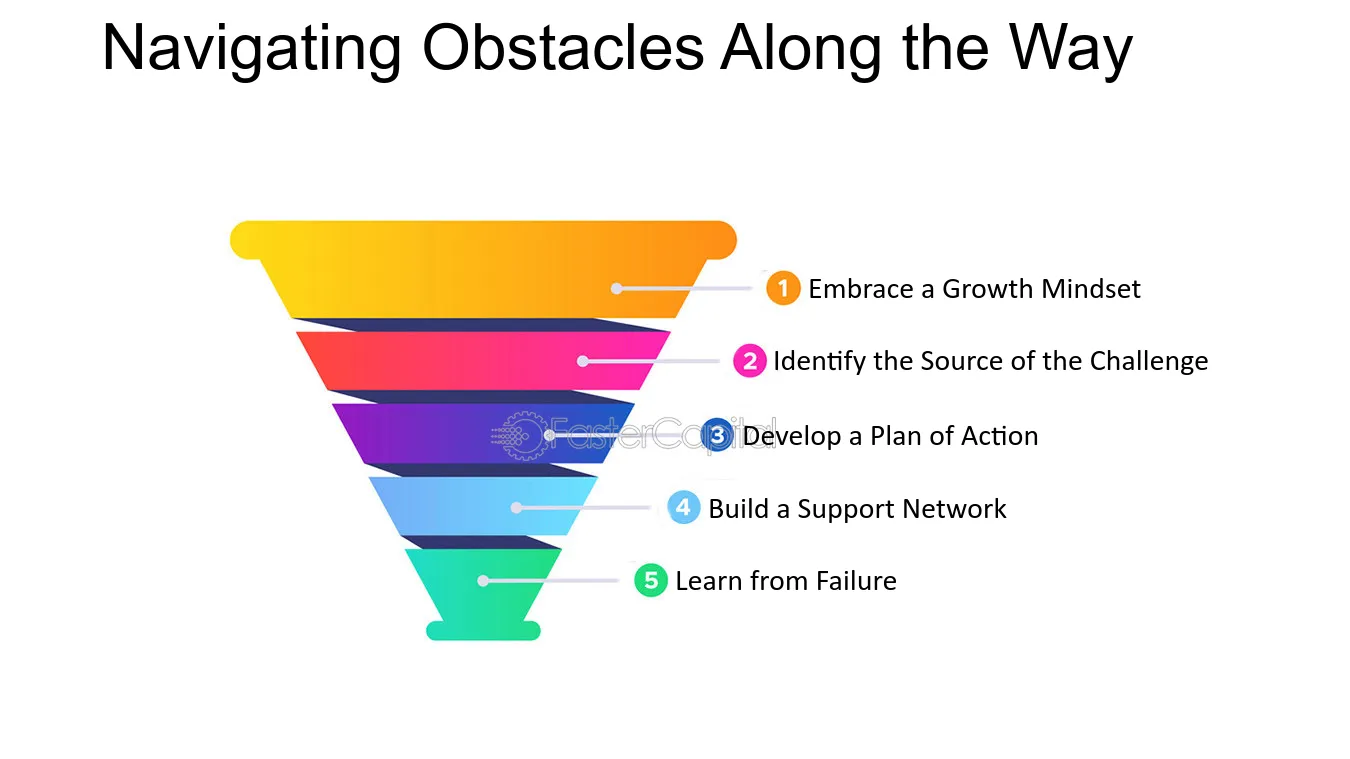
Navigating Obstacles Along the Way - Incremental Advancement: Embracing Conservative Growth for Lasting Results
39. Addressing Resistance and Navigating Obstacles
In any organization, resistance and obstacles are common when it comes to internal mobility during a hiring freeze. However, there are several ways to overcome challenges that arise during this process. The first step is to recognize the resistance and obstacles that are present in the organization. This can be done by conducting surveys, focus groups, or simply talking to employees. By doing this, organizations can pinpoint the areas that need improvement and address them accordingly. It is important to understand that resistance can come from both employees and management.
One way to address resistance is to educate employees and management on the benefits of internal mobility. Many employees may not be aware of the opportunities that are available to them within the organization. By providing them with information and resources, they can better understand how internal mobility can benefit their career growth and development. Additionally, management may be resistant due to concerns about losing valuable employees to other departments or teams. By addressing these concerns and providing support, management can feel more confident in the internal mobility process.
Navigating obstacles is another key component of internal mobility during a hiring freeze. One obstacle that may arise is a lack of available positions. In this case, organizations can consider creating new roles or cross-training employees to fill gaps. Another obstacle is a lack of communication and transparency. Organizations can overcome this by providing clear and concise information about the internal mobility process, including available positions, application requirements, and timelines.
Here are a few more ways to overcome challenges and navigate obstacles during internal mobility:
1. Implement a mentorship program: This program can help employees gain new skills and knowledge, while also providing support and guidance from more experienced colleagues.
2. Offer training and development opportunities: Providing employees with training and development opportunities can help them prepare for new roles within the organization.
3. Utilize technology: Implementing an internal job board or talent management software can help streamline the internal mobility process and provide employees with access to available positions.
Overcoming challenges and navigating obstacles is crucial for successful internal mobility during a hiring freeze. By recognizing resistance and obstacles, educating employees and management, and utilizing various resources, organizations can create a culture of growth and development, even during challenging times.
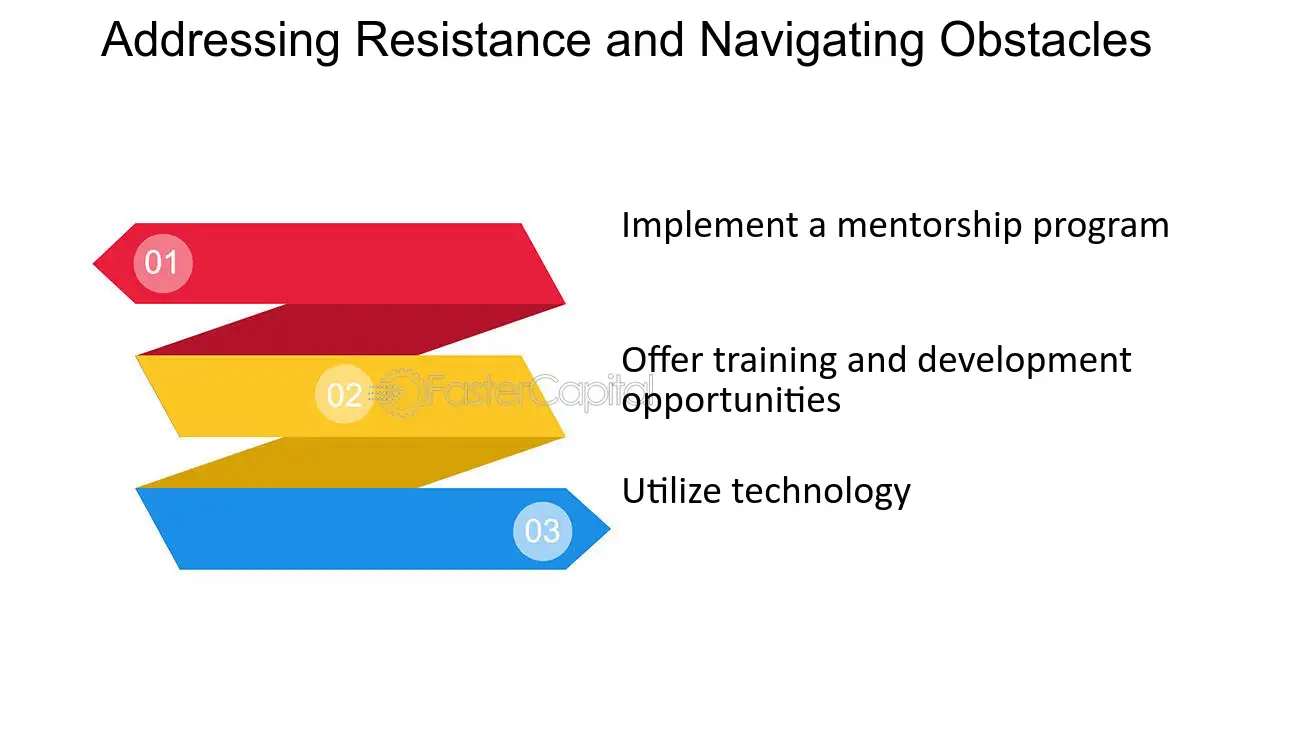
Addressing Resistance and Navigating Obstacles - Internal mobility: Leveraging Internal Mobility during a Hiring Freeze
40. Navigating Obstacles in Team Building
Navigating challenges and conflict is an inevitable part of team building. As a leader, it is crucial to address these obstacles head-on and find effective solutions that promote growth and development within the team. By doing so, you can foster a positive and productive work environment that allows your team to thrive. In this section, we will explore some common challenges and conflicts that arise in team building, along with strategies to overcome them.
1. Lack of Communication: Effective communication is the foundation of any successful team. When team members fail to communicate openly and honestly, misunderstandings and conflicts can arise. To overcome this challenge, encourage regular team meetings where everyone has an opportunity to share their thoughts and concerns. Foster an environment where team members feel comfortable expressing their opinions and actively listen to one another. By promoting open communication, you can prevent conflicts from escalating and ensure that everyone is on the same page.
2. Personality Clashes: Different personalities within a team can lead to clashes and conflicts. It is essential to recognize that diversity in personalities can bring valuable perspectives and ideas to the table. However, when conflicts arise, it is crucial to address them promptly and professionally. Encourage team members to understand and appreciate each other's differences, fostering a culture of respect and inclusivity. Additionally, consider organizing team-building activities that promote collaboration and understanding, such as personality assessments or workshops on effective communication.
3. Goal Misalignment: When team members have different goals or visions for the team, conflicts can arise. As a leader, it is your responsibility to ensure that everyone is aligned towards a common objective. Clearly communicate the team's goals and expectations, allowing each team member to understand their role in achieving them. Regularly check in with individual team members to ensure they are on track and offer support when needed. By fostering a shared sense of purpose, you can minimize conflicts and maximize teamwork.
4. Conflict Resolution: Conflict is inevitable in any team, but the key lies in how it is resolved. Encourage team members to address conflicts directly and constructively, rather than letting them fester and escalate. Provide training or resources on conflict resolution techniques, such as active listening, empathy, and negotiation. Case studies or role-playing exercises can be helpful in demonstrating effective conflict resolution strategies. By equipping your team with the necessary skills, you empower them to resolve conflicts independently and promote a harmonious work environment.
5. Recognizing and Utilizing Strengths: Conflicts can also arise when team members feel undervalued or underutilized. As a leader, it is essential to recognize and appreciate each team member's strengths and assign tasks accordingly. By leveraging individual strengths, you not only enhance productivity but also boost team morale. Regularly provide feedback and recognition for a job well done, reinforcing the value each team member brings to the table. When team members feel valued and acknowledged, conflicts are less likely to occur.
In conclusion, overcoming challenges and conflict is a crucial aspect of team building for leadership development. By addressing issues such as lack of communication, personality clashes, goal misalignment, conflict resolution, and recognizing individual strengths, you can navigate obstacles and foster a cohesive and high-performing team. Remember, effective team building requires continuous effort and commitment from both leaders and team members alike.
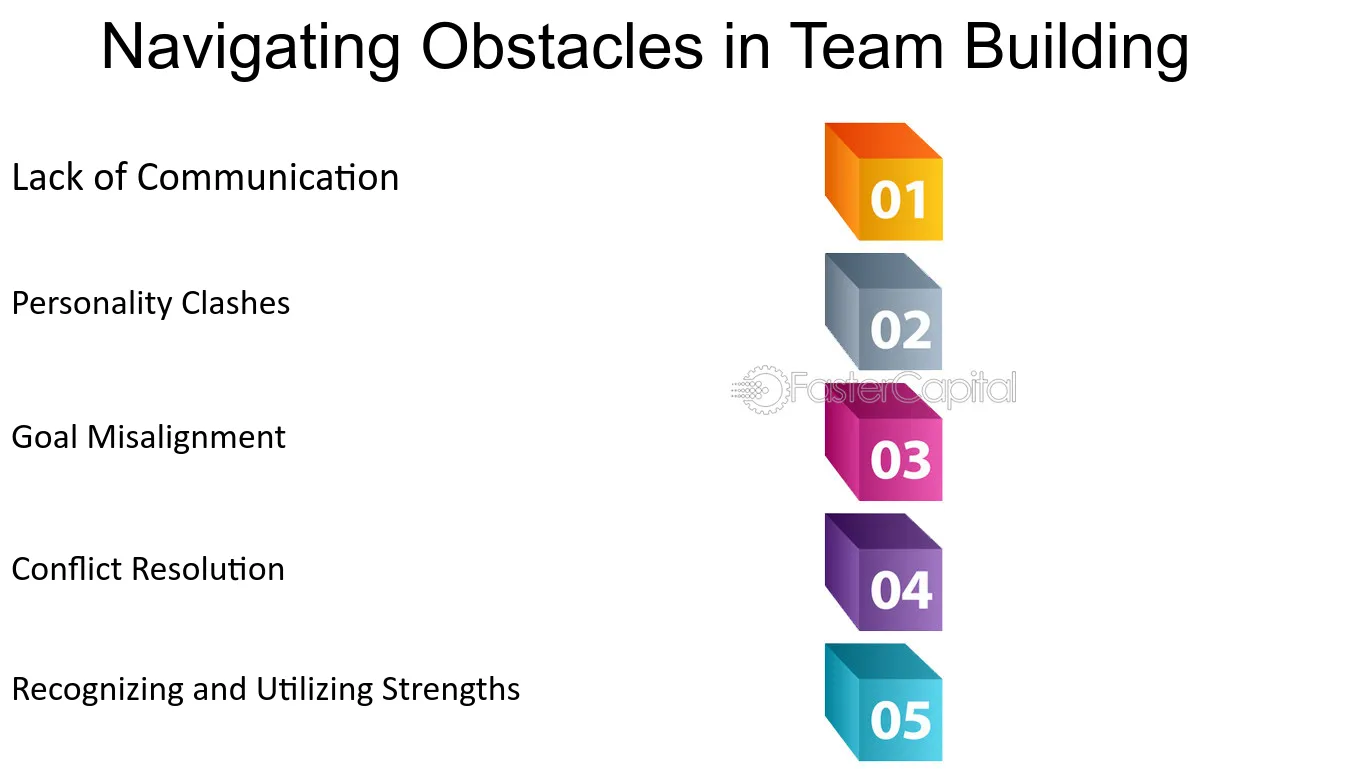
Navigating Obstacles in Team Building - Leadership development: From Good to Great: Team Building for Leadership Development
41. Navigating Obstacles in Carte Blanche Travel
Embarking on a carte blanche travel adventure is an exhilarating experience that allows individuals to embrace the unknown and explore destinations without any preconceived plans or itineraries. However, this form of travel also presents its fair share of challenges and obstacles that require careful navigation. From language barriers to logistical hurdles, travelers must be prepared to adapt and overcome these obstacles in order to fully embrace the limitless adventure that carte blanche travel offers.
1. Language Barriers: One of the most common challenges faced by carte blanche travelers is the language barrier. When exploring unfamiliar destinations, communication can become a significant hurdle. However, with a positive attitude and some basic language skills or translation apps, travelers can bridge this gap. For example, learning a few key phrases in the local language can go a long way in establishing connections with locals and navigating daily interactions.
2. Cultural Differences: Another obstacle that often arises during carte blanche travel is navigating cultural differences. Each destination has its own unique customs, traditions, and social norms that may differ greatly from what travelers are accustomed to. It is essential to approach these differences with an open mind and respect for local customs. By immersing oneself in the local culture and observing how locals behave, travelers can gain a deeper understanding of their surroundings and avoid unintentionally causing offense.
3. Logistical Hurdles: Without a predetermined itinerary, logistical challenges can arise unexpectedly during carte blanche travel. From finding accommodation on short notice to arranging transportation between destinations, flexibility is key when facing these hurdles. Embracing technology can be immensely helpful in such situations – utilizing travel apps or websites that offer last-minute bookings or connecting with fellow travelers through online communities can provide valuable insights and assistance.
4. Safety Concerns: While embracing carte blanche travel allows for spontaneity and freedom, it is crucial to prioritize safety. Travelers should research and familiarize themselves with potential risks and safety precautions specific to their chosen destinations. Staying informed about local laws, customs, and potential dangers can help mitigate risks and ensure a safe journey. Additionally, maintaining regular communication with loved ones back home or registering with the local embassy can provide an added layer of security.
5. Embracing Uncertainty: Perhaps the greatest challenge in carte blanche travel is embracing uncertainty. Letting go of control and surrendering to the unknown can be both thrilling and daunting. However, it is precisely this element of unpredict

Navigating Obstacles in Carte Blanche Travel - Limitless Adventure: Embracing Carte Blanche in Travel Exploration
42. Navigating Obstacles
1. Navigating Traffic Congestion: A Constant Battle
One of the most common challenges faced by logistics companies is navigating through traffic congestion. As urban areas continue to grow, roadways become increasingly crowded, leading to delays and inefficiencies in the delivery process. From the perspective of a delivery driver, this can be incredibly frustrating, as it not only impacts their ability to meet delivery deadlines but also adds stress to their already demanding job. On the other hand, customers eagerly awaiting their packages may grow impatient if their orders are delayed due to traffic.
- Implementing real-Time traffic Monitoring Systems: One solution to combat traffic congestion is the use of real-time traffic monitoring systems. These systems provide up-to-date information on traffic conditions, allowing drivers to make informed decisions about which routes to take. By avoiding congested areas, delivery drivers can minimize delays and ensure that packages are delivered in a timely manner. For example, companies like UPS have implemented advanced routing algorithms that take into account real-time traffic data, resulting in more efficient delivery routes.
- Utilizing Alternative Modes of Transportation: Another solution to overcome traffic challenges is to explore alternative modes of transportation. For instance, bicycles or electric scooters can be used for last-mile deliveries in congested urban areas, where cars may struggle to navigate through heavy traffic. This not only helps reduce delivery times but also promotes eco-friendly logistics practices. Companies like Amazon have experimented with electric delivery vans and even drones to bypass traffic congestion and expedite deliveries.
2. Balancing Speed and Cost: Striking the Right Balance
Finding the right balance between speed and cost is a perpetual challenge in the world of delivery logistics. From a customer's perspective, speedy delivery is often a top priority, especially in today's fast-paced world where instant gratification is the norm. However, from a logistics company's perspective, expedited delivery options can significantly increase costs, which may not always be feasible or sustainable.
- Offering Multiple Delivery Options: To address this challenge, logistics companies can offer multiple delivery options to cater to different customer needs. This can include both standard and expedited delivery services, allowing customers to choose the option that best suits their requirements. For instance, Amazon offers Prime members the choice between free two-day shipping and faster, albeit more expensive, one-day or same-day delivery options. By providing these choices, companies can strike a balance between customer satisfaction and operational efficiency.
- optimizing Warehouse operations: Another approach to balancing speed and cost is by optimizing warehouse operations. By streamlining processes within the warehouse, such as efficient inventory management and order picking systems, logistics companies can reduce the time it takes to process orders and prepare them for delivery. This, in turn, enables faster delivery without the need for costly expedited shipping options. For example, companies like Walmart have implemented automated systems in their warehouses to speed up order fulfillment, leading to quicker delivery times at a lower cost.
3. Addressing Last-Mile Delivery Challenges: Reaching the Final Destination
Last-mile delivery, the final leg of the delivery process from the distribution center to the customer's doorstep, presents its own set of challenges. The last mile is often the most expensive and time-consuming part of the delivery journey, as it involves navigating through complex urban environments and delivering packages to individual addresses.
- Utilizing Crowdshipping and peer-to-Peer networks: One solution to last-mile delivery challenges is the utilization of crowdshipping and peer-to-peer networks. These platforms connect individuals who are willing to deliver packages with those who need items shipped. This innovative approach leverages the existing travel patterns of individuals, allowing for more flexible and cost-effective last-mile delivery. For instance, companies like Roadie and Grabr facilitate peer-to-peer deliveries by matching travelers with delivery requests along their route.
- Implementing Locker Pickup Points: Another option to tackle last-mile delivery challenges is the implementation of locker pickup points. These lockers, strategically located in convenient areas such as shopping centers or residential complexes, provide a secure location for customers to retrieve their packages at their own convenience. This not only eliminates the need for multiple delivery attempts but also reduces the risk of package theft. Companies like Amazon have introduced locker pickup options, offering customers a convenient alternative to traditional home delivery.
Navigating obstacles is an inevitable part of the logistics industry. By implementing innovative solutions and embracing technological advancements, logistics companies can overcome these challenges and provide efficient and satisfactory delivery services to customers.
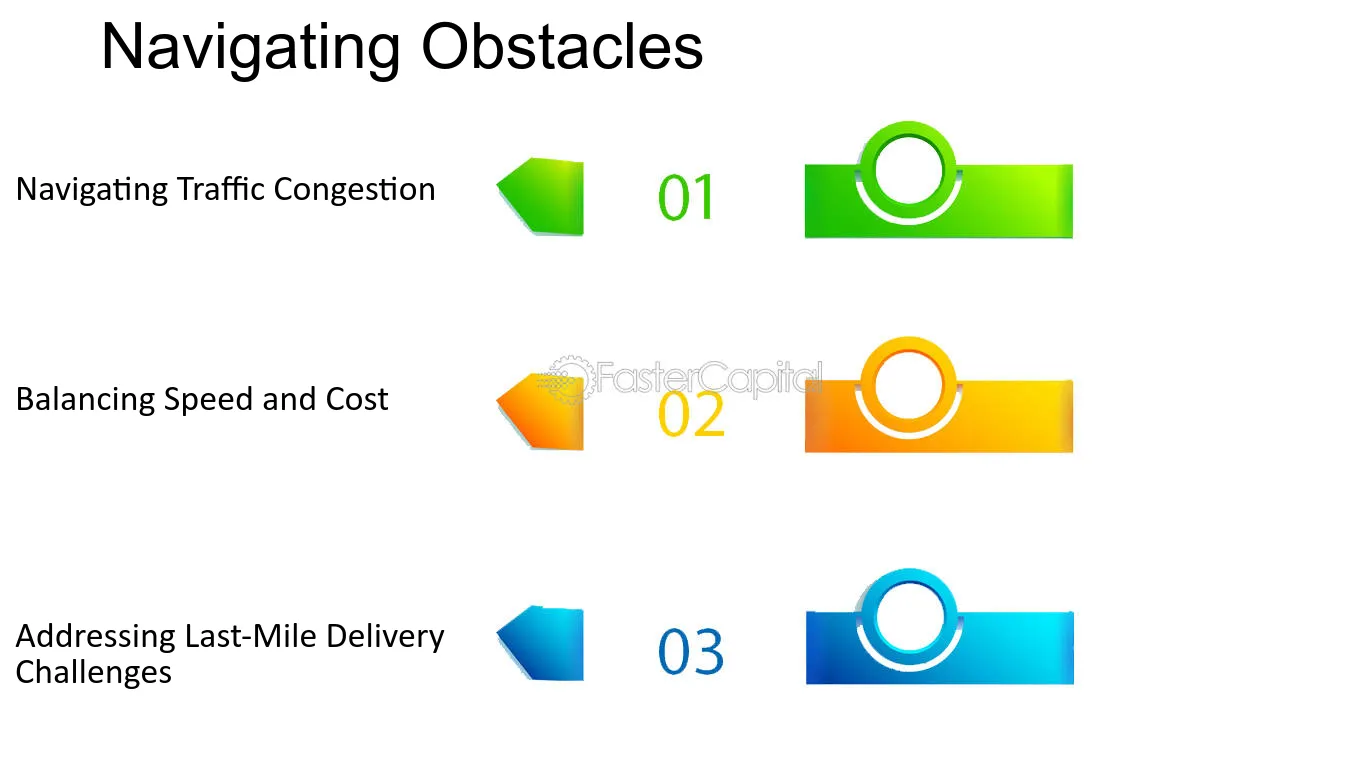
Navigating Obstacles - Logistics: Behind the Scenes: Unraveling the World of Delivery Logistics
43. Grassroots Organizing Startups Joining Forces:Overcoming Challenges: Navigating Obstacles in Grassroots Organizing Partnerships
1. Clearly Define Goals and Objectives
One of the key challenges in grassroots organizing partnerships is aligning the goals and objectives of different organizations. Each organization may have its own mission and priorities, which can sometimes lead to conflicts or misunderstandings. To overcome this obstacle, it is crucial to have open and honest discussions to clearly define the goals and objectives of the partnership. This can be done through regular meetings, brainstorming sessions, and collaborative decision-making processes.
For example, let's say two grassroots organizations are working together to address homelessness in their community. One organization may prioritize providing temporary shelters, while the other may focus on long-term solutions such as job training and affordable housing. By clearly defining their goals and objectives, the organizations can find common ground and develop a comprehensive approach that combines both short-term and long-term solutions.
2. Establish Effective Communication Channels
Communication is another significant challenge when it comes to grassroots organizing partnerships. With different organizations and individuals involved, it is important to establish effective communication channels to ensure everyone is on the same page. This can include regular meetings, email updates, shared documents, and even group messaging platforms.
For instance, a partnership between environmental organizations may face challenges due to varying schedules and geographical locations. By utilizing online collaboration tools and scheduling regular conference calls, the organizations can overcome these obstacles and maintain effective communication. This allows for real-time updates, progress reports, and the ability to address any issues or concerns in a timely manner.
3. Build Strong Relationships and Trust
Building strong relationships and trust is crucial in grassroots organizing partnerships. When multiple organizations come together, it is essential to establish a sense of camaraderie and trust among all parties involved. This can be achieved through team-building activities, shared experiences, and open and transparent communication.
For example, a partnership between youth empowerment organizations may face challenges due to generational gaps and different approaches to community engagement. By organizing joint workshops and events, the organizations can bridge these gaps and build trust among their members. This allows for a stronger partnership where everyone feels valued and supported.
4. Adaptability and Flexibility
Grassroots organizing partnerships often require adaptability and flexibility to navigate unexpected obstacles or changes in circumstances. It is important to be open to new ideas, strategies, and approaches, and be willing to adjust plans as needed.
For instance, a partnership between advocacy organizations may face challenges due to changes in government policies or funding priorities. By staying adaptable and flexible, the organizations can quickly pivot their strategies and find alternative ways to achieve their goals. This may involve collaborating with other organizations, seeking new sources of funding, or shifting their focus to other pressing issues.
5. Celebrate Successes and Learn from Failures
Finally, overcoming challenges in grassroots organizing partnerships requires a culture of celebrating successes and learning from failures. It is important to acknowledge and appreciate the achievements and milestones reached together, as well as reflect on any setbacks or failures as opportunities for growth and improvement.
For example, a partnership between education organizations may face challenges in implementing a new program due to logistical issues or resistance from stakeholders. By celebrating small victories along the way, such as successfully piloting the program in one school, the organizations can motivate their teams and maintain momentum. Additionally, by reflecting on any failures or setbacks, the organizations can identify areas for improvement and adjust their strategies moving forward.
In conclusion, navigating obstacles in grassroots organizing partnerships requires clear goal-setting, effective communication, building trust, adaptability, and a culture of learning and celebrating successes. By addressing these challenges head-on and implementing strategies to overcome them, grassroots organizations can make a significant difference in their communities.
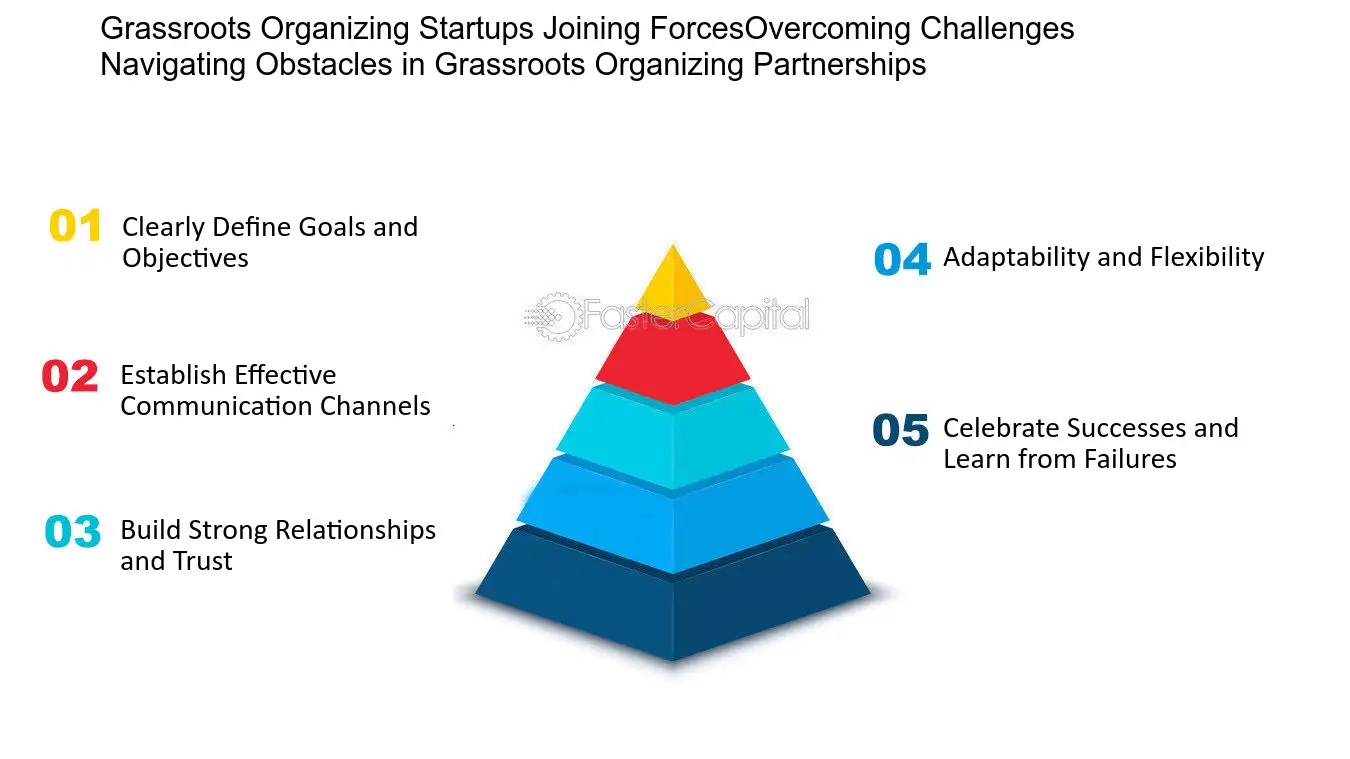
Grassroots Organizing Startups Joining Forces:Overcoming Challenges: Navigating Obstacles in Grassroots Organizing Partnerships - Making a Difference Together: Grassroots Organizing Startups Joining Forces
44. Navigating Obstacles in Sanku Meditation
1. Recognizing and Acknowledging Challenges
In any practice or journey, challenges are bound to arise, and Sanku meditation is no exception. As we delve deeper into the depths of our consciousness, we may encounter various obstacles that can hinder our progress and discourage us from continuing our meditation practice. However, it is essential to remember that these challenges are not insurmountable. By recognizing and acknowledging them, we can develop strategies to navigate through them and ultimately enhance our meditation experience.
2. Restless Thoughts and Monkey Mind
One common challenge that many practitioners face during Sanku meditation is the restlessness of the mind. Our thoughts often wander, jumping from one topic to another, resembling a monkey swinging from tree to tree. This constant stream of thoughts can make it difficult to focus and find stillness within.
To overcome this challenge, it is crucial to cultivate awareness and detachment from our thoughts. When we notice our mind wandering, we can gently bring our attention back to our breath or the object of our meditation. With practice, we can train our minds to become more disciplined and focused, gradually taming the monkey mind.
3. Physical Discomfort and Restlessness
Another obstacle that can arise during Sanku meditation is physical discomfort and restlessness in the body. Sitting for an extended period can lead to stiffness, pain, or discomfort in the back, legs, or other areas. These physical sensations can be distracting and make it challenging to maintain a steady meditation practice.
To address this challenge, it is essential to find a comfortable meditation posture that works for you. Experiment with different sitting positions, such as cross-legged on a cushion, kneeling, or using a meditation bench. You can also incorporate gentle stretching exercises or yoga postures before your meditation session to release any tension in the body.
4. Resistance and Impatience
Resistance and impatience can also emerge as significant challenges in Sanku meditation. Sometimes, we may resist sitting down to meditate, finding excuses or distractions to avoid the practice altogether. Additionally, impatience can arise when we expect immediate results or progress in our meditation journey.
To overcome these challenges, it is crucial to cultivate a sense of commitment and discipline in our practice. Set a regular meditation schedule and create a dedicated space for your practice. Remind yourself of the benefits that meditation brings to your overall well-being and stay patient with the process. Remember that meditation is a lifelong journey, and progress may come gradually over time.
5. Emotional Turmoil and Inner Resistance
Sanku meditation can also bring to the surface deep-rooted emotions and unresolved issues that may cause inner resistance. As we sit in stillness, our minds may wander into past traumas, painful memories, or uncomfortable emotions. This can be overwhelming and discouraging, making it challenging to continue our practice.
When faced with emotional turmoil and resistance, it is essential to approach these experiences with compassion and self-care. Allow yourself to feel and process these emotions without judgment or attachment. Seek support from a meditation teacher or therapist who can guide you through these challenging moments. Remember that these obstacles can be opportunities for healing and growth.
Navigating obstacles in Sanku meditation is an integral part of our journey towards self-discovery and inner peace. By recognizing and acknowledging these challenges, we can develop strategies to overcome them and deepen our meditation practice. Remember to be patient, compassionate, and consistent in your efforts, as overcoming these obstacles will ultimately lead to a more fulfilling and transformative meditation experience.
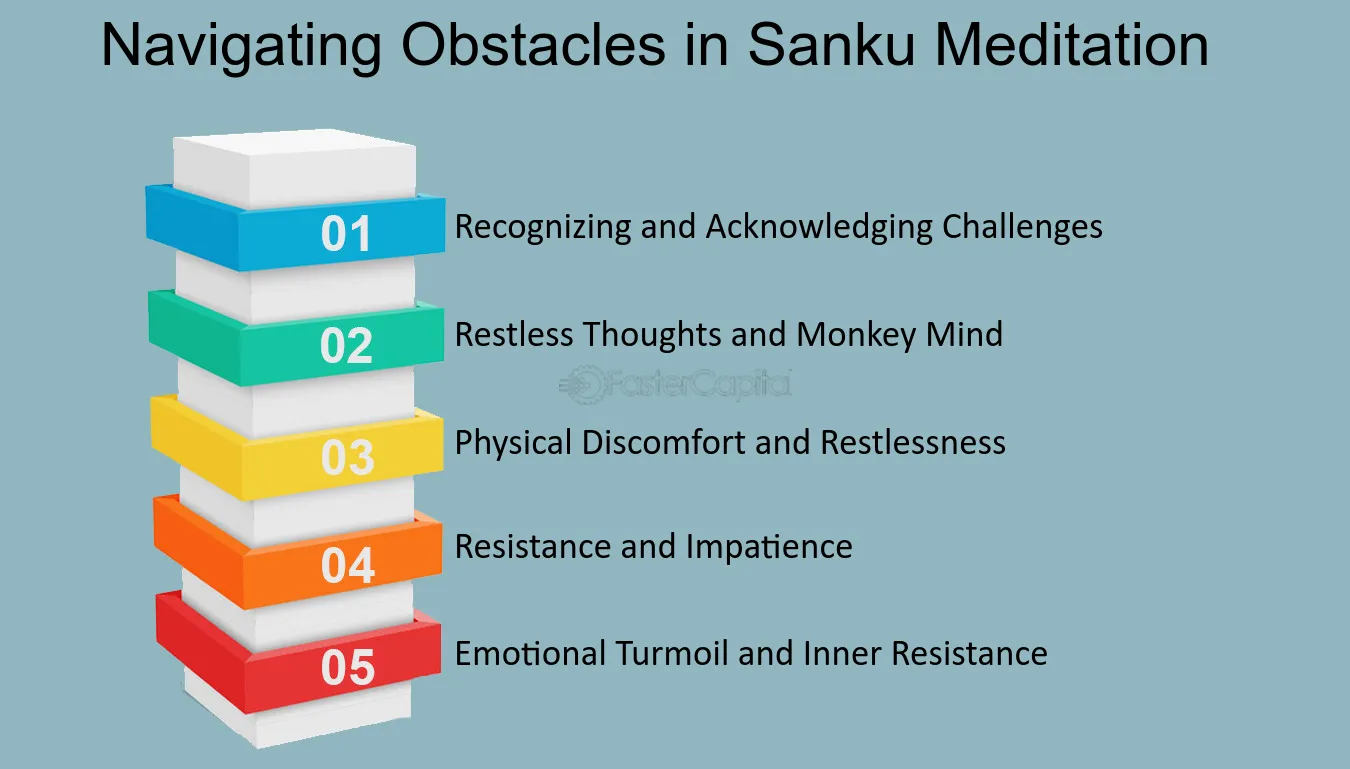
Navigating Obstacles in Sanku Meditation - Meditation: Exploring the Depths of Sanku: A Journey into Meditation
45. Navigating Obstacles with NIF Workflows
Navigating the intricate landscape of Neuroscience Informatics Framework (NIF) workflows can be a rewarding yet daunting endeavor. As researchers and data analysts delve into the realms of neuroscience, they often encounter a myriad of challenges that can impede progress. From data acquisition and preprocessing to analysis and visualization, the journey through NIF workflows is rife with obstacles. However, these challenges are not insurmountable. In this section, we will explore the common hurdles faced by neuroscientists and data analysts when working with NIF workflows, along with practical solutions and insights from various perspectives.
1. Data Integration Woes: The first challenge often faced is integrating data from diverse sources. Neuroscience research relies on data from various experiments, imaging techniques, and genetic studies. The data may come in different formats, making it challenging to merge seamlessly. For instance, fMRI data, electrophysiological recordings, and gene expression data all have their unique structures. To overcome this, standardized data formats such as BIDS (Brain Imaging Data Structure) and common data ontologies like NeuroLEX are invaluable. These standards facilitate data integration, ensuring that data from different sources can be harmoniously merged.
2. Reproducibility and Workflow Documentation: Ensuring the reproducibility of NIF workflows is another roadblock. Often, researchers craft complex workflows with multiple data processing steps, making it challenging for others to replicate their work. The solution lies in comprehensive workflow documentation. Using tools like Jupyter Notebooks, researchers can document each step, including code, data transformations, and dependencies. This not only aids in reproducibility but also enables collaboration within the research community.
3. Scalability and Computational Resources: NIF workflows often involve resource-intensive computations, particularly when dealing with large-scale neuroimaging datasets. Scaling workflows to handle big data can be a significant challenge. To address this, cloud computing platforms like AWS, Azure, and Google Cloud provide scalable computational resources. Researchers can leverage these services to efficiently analyze large datasets, without the need for substantial local infrastructure.
4. Data Quality Control: Ensuring the quality of data is crucial in neuroscience research. Low-quality data can lead to misleading results. The challenge here is implementing robust quality control (QC) measures. Researchers can employ automated QC pipelines that flag and remove low-quality data points. For example, in MRI studies, motion artifacts can be detected and corrected, ensuring that the data used in analysis is of high quality.
5. Interoperability and Tool Integration: Many neuroscientists use a mix of tools and software packages in their workflows. Ensuring the interoperability of these tools can be a significant hurdle. Platforms like Nipype and BIDS Apps facilitate the integration of various neuroimaging tools, enabling seamless interaction between them. This streamlines the workflow and enhances productivity.
6. Data Privacy and Security: With the increasing importance of data privacy and ethical considerations in research, handling sensitive patient data securely is paramount. Implementing strong encryption, access controls, and anonymization techniques is essential. For example, the use of the DICOM standard for medical image data can ensure secure data sharing while maintaining patient confidentiality.
7. Community Collaboration: Navigating NIF workflows often benefits from a collaborative approach. Engaging with the neuroscience research community, participating in forums, and sharing code and solutions can help address unique challenges. Initiatives like the Human Connectome Project exemplify the power of collaborative research in advancing our understanding of the brain.
While NIF workflows in neuroscience research present a spectrum of challenges, they also offer solutions that can lead to groundbreaking discoveries. By integrating data effectively, documenting workflows for reproducibility, harnessing scalable computing resources, ensuring data quality, promoting tool interoperability, maintaining data security, and fostering community collaboration, researchers can traverse the NIF landscape with confidence and innovation.
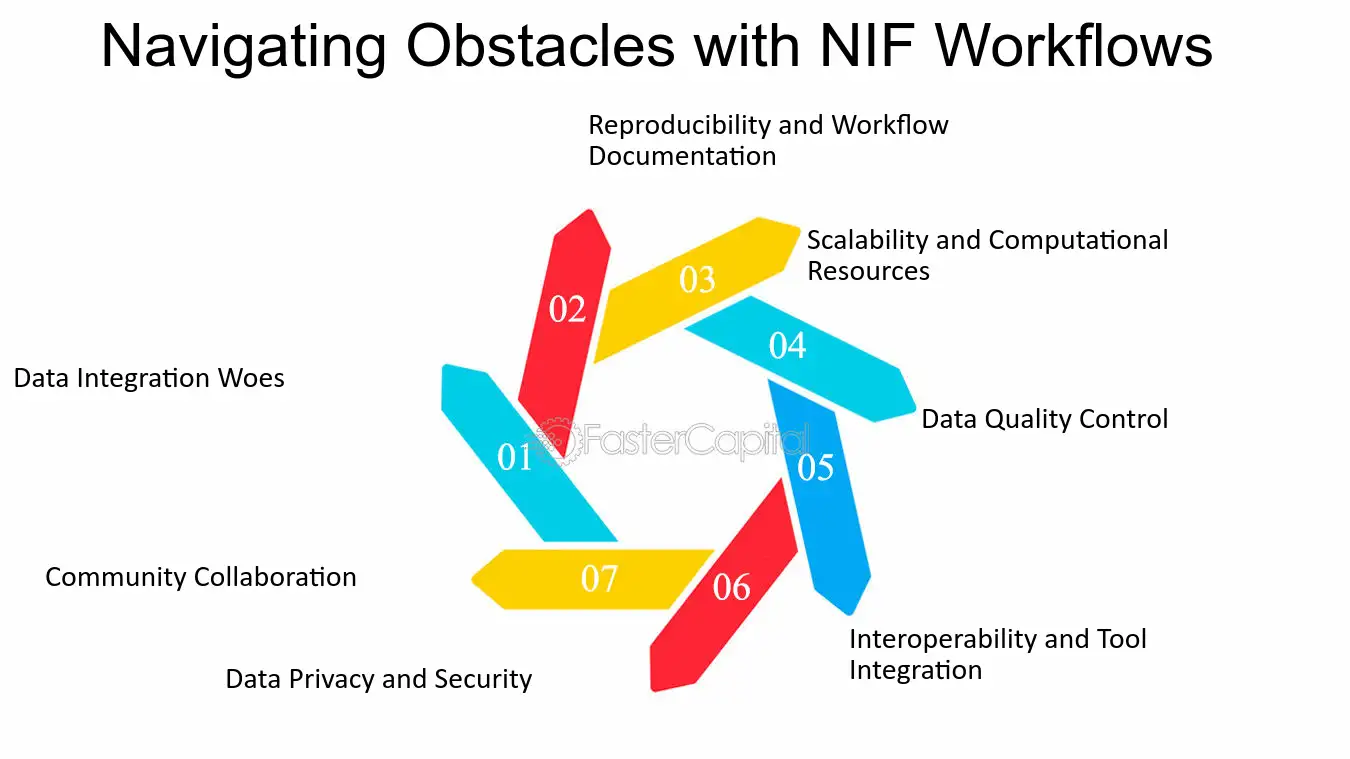
Navigating Obstacles with NIF Workflows - NIF Workflows: Streamlining Data Analysis in Neuroscience Research
46. Navigating Obstacles in Pursuit of Success
In the journey towards entrepreneurial success, challenges and obstacles are inevitable. However, it is how we navigate and overcome these hurdles that truly defines our path to achievement. From financial constraints to limited resources, every entrepreneur faces unique challenges along the way. In this section, we will explore some strategies, tips, and case studies that can help aspiring entrepreneurs overcome obstacles and continue on the path to success.
1. Embrace a Growth Mindset: One of the most crucial aspects of overcoming challenges is cultivating a growth mindset. Instead of viewing setbacks as failures, see them as opportunities for growth and learning. Embrace a positive attitude towards challenges and believe in your ability to find solutions. This mindset shift will help you stay motivated and resilient in the face of adversity.
2. Seek Mentorship and Guidance: Building a network of mentors and advisors can provide valuable insights and support when navigating obstacles. Seek out experienced entrepreneurs who have faced similar challenges and learn from their experiences. Their guidance and advice can help you overcome hurdles more efficiently and avoid common pitfalls.
3. Stay Agile and Adapt: The ability to adapt to changing circumstances is crucial for entrepreneurial success. Be prepared to pivot and adjust your strategies when faced with unexpected obstacles. Stay agile and open-minded, constantly assessing and reassessing your approach to find the most effective solutions.
4. Leverage Technology and Innovation: Technology has revolutionized the way businesses operate, providing opportunities to overcome traditional barriers. Embrace digital tools and platforms that can streamline processes, enhance efficiency, and reach a broader audience. By leveraging technology, you can overcome resource limitations and gain a competitive edge.
Case Study: Airbnb faced numerous challenges when it first started. Initially, the founders struggled to gain traction and convince people to rent out their spare rooms. However, instead of giving up, they adapted their approach and realized the potential of targeting major events and conferences. By leveraging these opportunities, they were able to overcome their initial challenges and grow into the global hospitality giant we know today.
5. Build a Resilient Team: Surround yourself with a team that shares your vision and is resilient in the face of challenges. A strong team can provide support, innovative ideas, and diverse perspectives to help overcome obstacles. Foster a positive and collaborative work environment that encourages creativity and problem-solving.
6. Seek Funding and Partnerships: Financial constraints can often pose significant challenges for entrepreneurs. Explore different avenues for funding, such as venture capital, angel investors, or crowdfunding platforms. Additionally, consider strategic partnerships that can provide access to resources, expertise, and a larger customer base.
7. Learn from Failure: Failure is an inevitable part of the entrepreneurial journey. Instead of being discouraged by setbacks, view them as valuable learning opportunities. Analyze what went wrong, identify areas for improvement, and apply these lessons to future endeavors. Remember, many successful entrepreneurs have experienced multiple failures before achieving their breakthroughs.
By adopting these strategies, seeking guidance, and learning from both successes and failures, entrepreneurs can navigate obstacles and pave their way to success. Remember, challenges are not roadblocks but stepping stones towards growth and achievement. Stay focused, resilient, and open to opportunities, and you will be well on your way to entrepreneurial success.
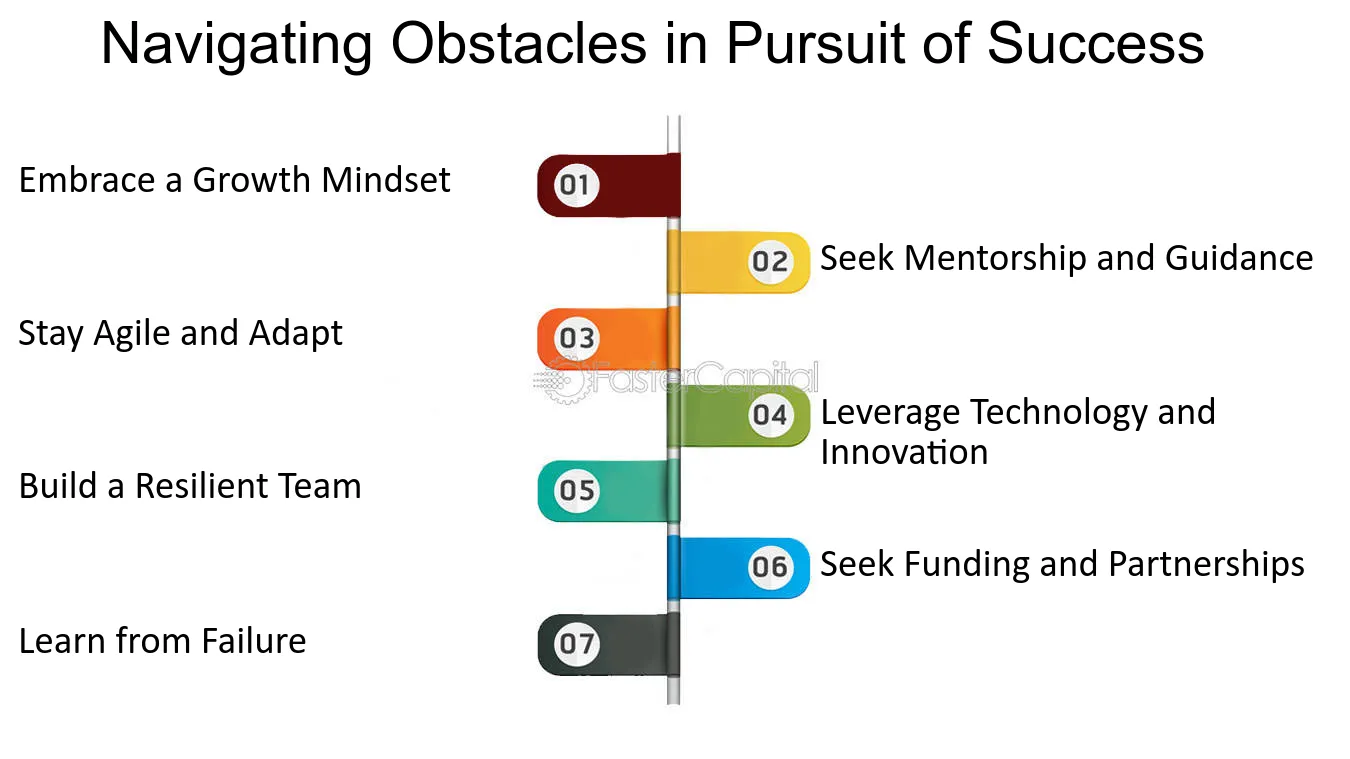
Navigating Obstacles in Pursuit of Success - Opportunity seeking: Seizing Opportunities: The Foundation of Entrepreneurial Leadership
47. Navigating through Obstacles
Navigating through obstacles is the second challenge that the treasure hunters must face in order to get their hands on the Leprechaun Leader's Pot of Gold. This challenge requires them to use their problem-solving skills to overcome the hurdles that come their way. Like any obstacle course, there are different types of obstacles that the treasure hunters must navigate through. Some obstacles require physical prowess, while others require mental agility. In this section of the blog, we will explore the different types of obstacles that the treasure hunters may face and how they can overcome them.
1. Physical Obstacles: Physical obstacles are those that require the treasure hunters to use their physical strength to overcome them. These obstacles can range from climbing walls to crawling through tight spaces. To overcome these obstacles, the treasure hunters must be physically fit and strong. They must also have good coordination and balance. One example of a physical obstacle is a rope bridge. The treasure hunters must cross a chasm using a rope bridge. To do this, they must have good balance and coordination. They must also be able to hold on to the ropes tightly. The best option to overcome this obstacle is to take it slow and steady. They should not rush and should take their time to ensure that they maintain their balance.
2. Mental Obstacles: Mental obstacles are those that require the treasure hunters to use their problem-solving skills to overcome them. These obstacles can range from solving puzzles to decoding clues. To overcome these obstacles, the treasure hunters must be able to think critically and creatively. They must also have good communication skills. One example of a mental obstacle is a riddle. The treasure hunters must solve a riddle in order to find the next clue. To do this, they must think outside the box and consider different options. The best option to overcome this obstacle is to work together as a team. They should share their ideas and work together to come up with a solution.
3. Environmental Obstacles: Environmental obstacles are those that are caused by the environment. These obstacles can range from extreme weather conditions to natural disasters. To overcome these obstacles, the treasure hunters must be prepared for any situation. They must have the necessary gear and equipment to deal with the environment. One example of an environmental obstacle is a thunderstorm. The treasure hunters must find shelter and wait out the storm. To do this, they must have a tent or some other form of shelter. The best option to overcome this obstacle is to be prepared. They should bring the necessary gear and equipment to deal with any situation.
Navigating through obstacles is a challenge that requires the treasure hunters to use their problem-solving skills and physical strength. There are different types of obstacles that they may face, including physical, mental, and environmental. To overcome these obstacles, they must be prepared and work together as a team. The best option to overcome any obstacle is to take it slow and steady, think outside the box, and be prepared for any situation.
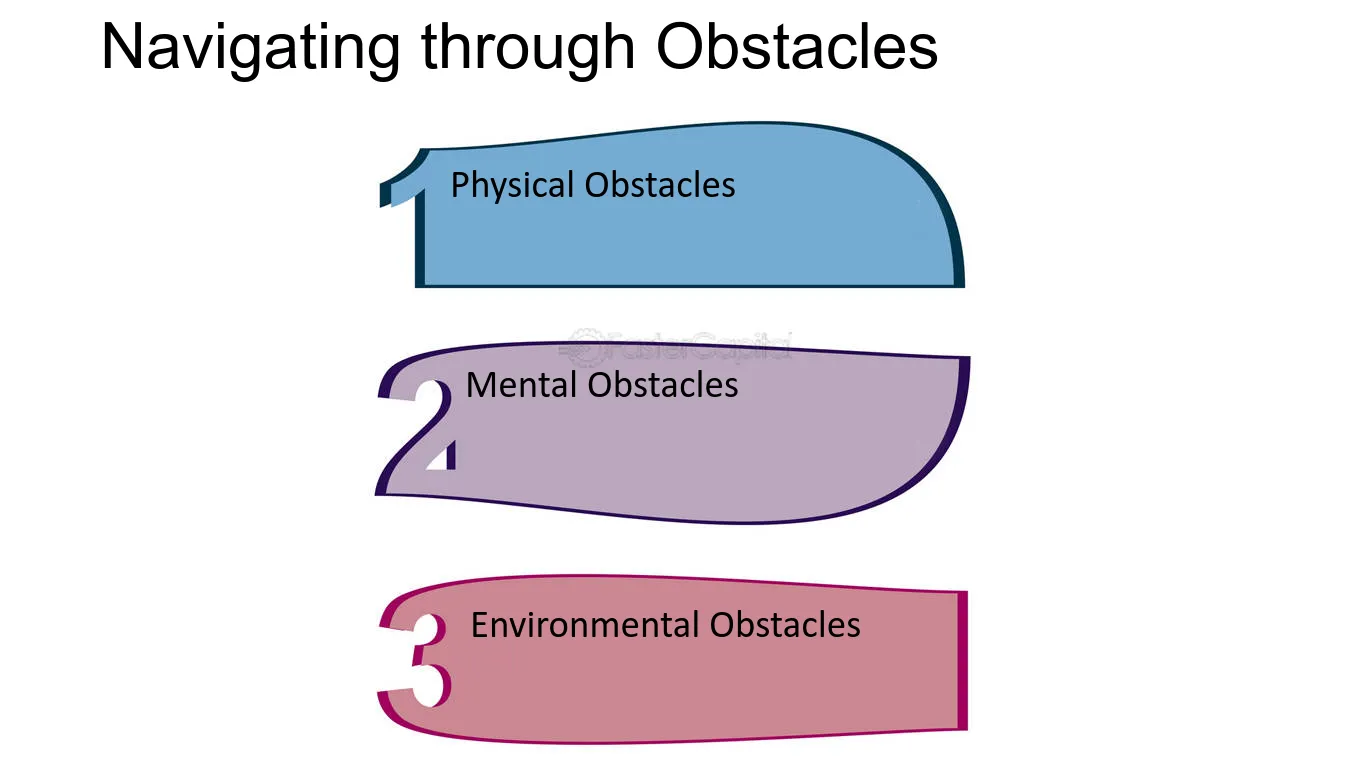
Navigating through Obstacles - Pot of gold: The Leprechaun Leader s Pot of Gold: A Mythical Treasure Hunt
48. Navigating Obstacles and Objections
Resistance can be a significant deterrent when it comes to making changes or introducing new ideas. It’s not uncommon to encounter roadblocks and objections, which can make it difficult to move forward. However, if we learn to navigate these obstacles effectively, we can propel progress towards achieving our goals. In this section, we’ll explore different ways to overcome resistance, including insights from various perspectives.
1. Understand the source of resistance - Resistance can come from different sources, including fear of change, lack of understanding, or a sense of loss. It’s essential to identify the root cause of resistance, as it can help to address the issue effectively. For instance, if people are resisting a new policy, it could be because they don’t understand how it will benefit them. Providing them with more information and training can help to alleviate their concerns.
2. Communicate effectively - Communication is key when it comes to overcoming resistance. You need to ensure that you’re communicating your ideas clearly and effectively, so people understand what you’re trying to achieve. It’s also important to listen to people’s concerns and objections and address them in a way that shows you understand their point of view.
3. Use data and evidence - Data and evidence can be a powerful tool to overcome resistance. If you can provide evidence that your proposal will work, it can help to convince people that your idea is worth pursuing. For instance, if you’re proposing a new marketing strategy, you can use data to show how it has worked for other companies in the past.
4. Highlight the benefits - It’s essential to highlight the benefits of your proposal or idea. If people can see how it will benefit them, they’re more likely to support it. For instance, if you’re proposing a new training program, you can highlight how it will improve people’s skills and make them more marketable.
5. Be persistent - Overcoming resistance can take time, and it’s important to be persistent. Keep communicating your ideas, addressing objections, and highlighting the benefits. If you’re persistent, you’ll eventually break down the resistance and make progress towards achieving your goals.
Overcoming resistance can be challenging, but it’s not impossible. By understanding the source of resistance, communicating effectively, using data and evidence, highlighting the benefits, and being persistent, you can navigate obstacles and objections and propel progress towards achieving your goals.
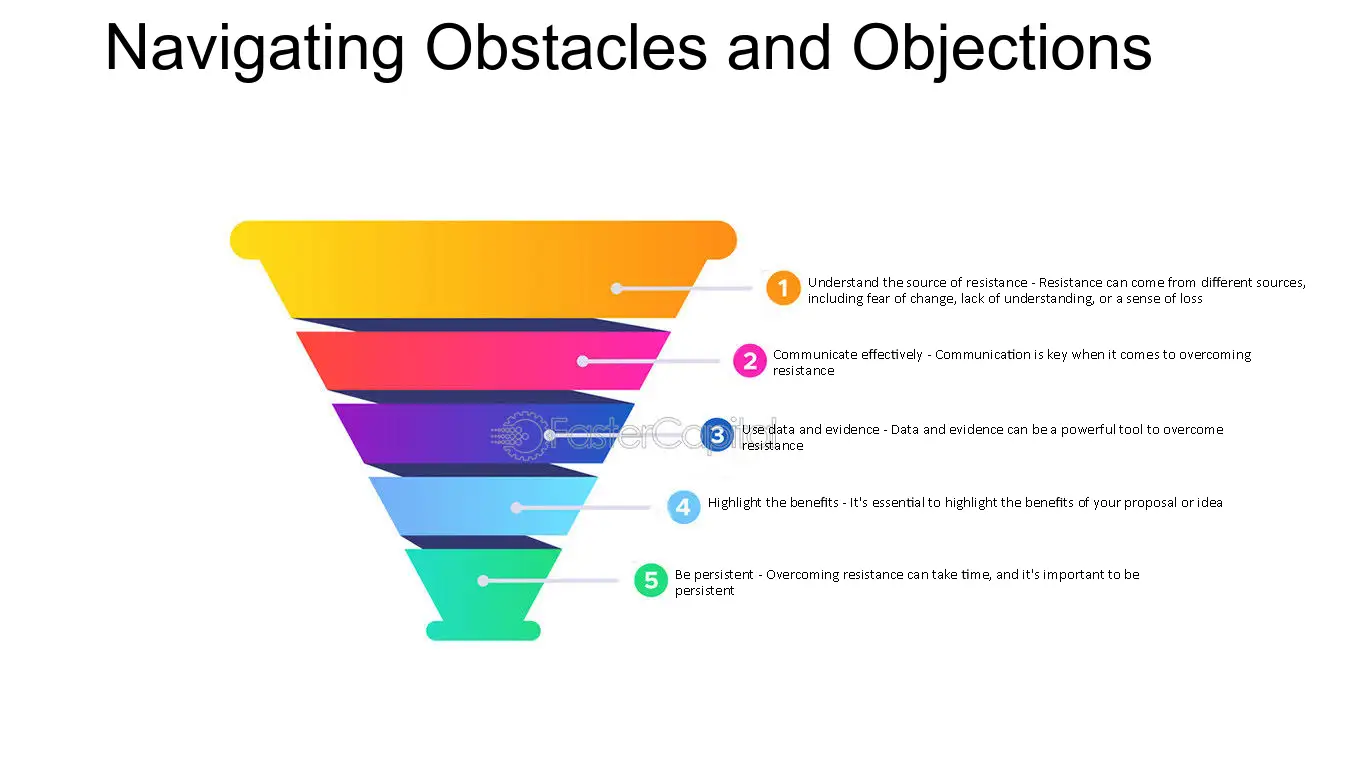
Navigating Obstacles and Objections - Proposal: Propelling Progress: The Writeup as a Catalyst for Change
49. Navigating Obstacles on the Path to Purpose
1. Setbacks and challenges are an inevitable part of life's journey towards finding purpose. Whether it's facing personal obstacles, professional roadblocks, or even societal pressures, navigating these hurdles can often be a daunting task. However, it is through overcoming these challenges that we can truly discover our strengths, develop resilience, and ultimately find our path to a meaningful life. In this section, we will explore some strategies and insights to help us overcome obstacles on our quest for purpose.
2. Embrace a Growth Mindset: One of the first steps in overcoming challenges is adopting a growth mindset. This mindset acknowledges that setbacks are not permanent and that we have the ability to learn, grow, and improve from them. Instead of viewing obstacles as insurmountable barriers, see them as opportunities for personal development and self-discovery. For example, if you encounter a setback in your career, rather than dwelling on the failure, focus on the lessons learned and how you can use them to propel yourself forward.
3. Seek Support and Guidance: It's essential to remember that you don't have to face challenges alone. Reach out to trusted friends, family members, or mentors who can provide support, guidance, and a fresh perspective. Sometimes, simply talking about your obstacles can help you gain clarity and find alternative solutions. Additionally, seeking professional help, such as therapy or coaching, can provide valuable insights and tools to navigate challenges effectively.
4. Learn from Case Studies: Studying the experiences of others who have overcome similar challenges can provide valuable insights and inspiration. Look for case studies, biographies, or even TED Talks of individuals who have faced obstacles on their path to purpose. Understanding their strategies, mindset, and actions can help us gain new perspectives and adapt them to our own situations. Their stories can serve as reminders that challenges are not roadblocks but stepping stones towards personal growth.
5. Break Down Goals into Manageable Steps: When facing a daunting challenge, it can be helpful to break it down into smaller, more manageable steps. By focusing on one step at a time, you can prevent overwhelm and gain a sense of progress along the way. For instance, if your goal is to start business but you're unsure where to begin, break it down into smaller tasks like conducting market research, creating a business plan, or networking with industry professionals.
6. Cultivate Resilience: Resilience is the ability to bounce back from setbacks and adapt to change. It's a crucial skill to develop when navigating obstacles on the path to purpose. Cultivating resilience involves building emotional strength, practicing self-care, and developing coping mechanisms. Engaging in activities like meditation, exercise, journaling, or seeking therapy can help strengthen your resilience and equip you with the tools to face challenges head-on.
7. Embrace Failure as a Learning Opportunity: Failure is an inevitable part of any journey. Instead of fearing failure, embrace it as a valuable learning opportunity. Every setback provides a chance to reflect, reassess, and refine your approach. Thomas Edison famously said, "I have not failed. I've just found 10,000 ways that won't work." By reframing failure as a stepping stone to success, you can overcome obstacles with resilience and determination.
Remember, the path to purpose is rarely a smooth one. Challenges will inevitably arise, but it is how we navigate and overcome them that defines our journey. By adopting a growth mindset, seeking support, learning from others, breaking down goals, cultivating resilience, and embracing failure as a learning opportunity, we can overcome obstacles and continue on our quest for a meaningful life.
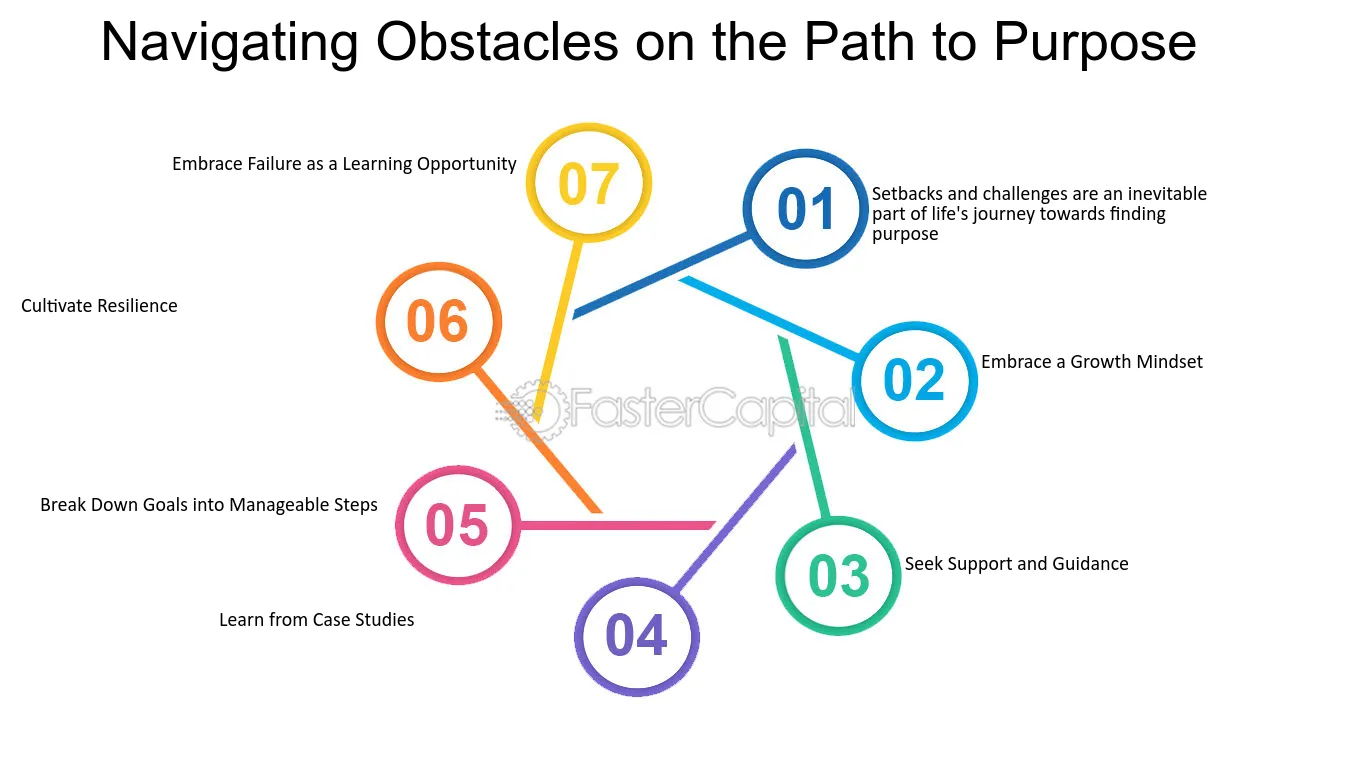
Navigating Obstacles on the Path to Purpose - Purpose: Finding Purpose: Aiming for a Meaningful Life
50. Navigating Obstacles during the Reinvention Process
1. Start by acknowledging the challenges: When embarking on a journey of reinvention, it is important to recognize that obstacles and challenges are bound to arise along the way. Whether it's fear of the unknown, limited resources, or external factors beyond our control, navigating these obstacles is an integral part of the reinvention process. By acknowledging these challenges from the start, we can better prepare ourselves mentally and emotionally for what lies ahead.
2. Embrace a growth mindset: One of the most effective ways to overcome challenges during the reinvention process is by adopting a growth mindset. This mindset allows us to view obstacles as opportunities for growth and learning rather than as roadblocks. Instead of getting discouraged by setbacks, we can choose to see them as valuable lessons that will ultimately contribute to our personal and professional development. By embracing a growth mindset, we open ourselves up to new possibilities and find the motivation to keep pushing forward.
3. Seek support and guidance: Reinventing ourselves can be an overwhelming task, and it's important to remember that we don't have to go through it alone. seeking support and guidance from mentors, coaches, or even friends and family can provide valuable insights and perspectives. They can offer advice, share their experiences, and provide the encouragement we need to stay focused and motivated. Additionally, joining communities or networking groups related to our desired path of reinvention can connect us with like-minded individuals who can offer support and share valuable resources.
4. Break the process into manageable steps: Sometimes, the sheer magnitude of the reinvention process can be daunting. To avoid feeling overwhelmed, it is helpful to break the process down into smaller, manageable steps. By setting achievable goals and focusing on one step at a time, we can maintain a sense of progress and momentum. This approach allows us to celebrate small victories along the way, which can boost our confidence and keep us motivated to overcome future challenges.
5. Learn from case studies and success stories: Case studies and success stories can serve as powerful sources of inspiration and guidance during the reinvention process. By studying the journeys of others who have successfully navigated similar challenges, we can gain insights into their strategies, lessons learned, and best practices. This knowledge can help us anticipate potential obstacles and devise effective solutions. Whether it's through books, podcasts, or online articles, immersing ourselves in the stories of others who have reinvented themselves can provide valuable inspiration and guidance.
6. Adapt and be flexible: Reinvention often requires us to step out of our comfort zones and embrace change. It is essential to be adaptable and flexible in our approach, as unexpected obstacles may arise that require us to pivot or adjust our plans. By staying open-minded and willing to adapt, we can navigate these obstacles more effectively and find innovative solutions. Being flexible allows us to maintain a sense of resilience and resourcefulness, which are crucial attributes in overcoming challenges during the reinvention process.
7. Celebrate progress and practice self-care: Lastly, it is important to acknowledge and celebrate the progress we make along the way. Reinventing ourselves is a courageous endeavor, and each step forward deserves recognition. Taking time to celebrate achievements, however small they may seem, can boost our motivation and morale. Additionally, practicing self-care throughout the reinvention process is vital. Prioritizing our physical and mental well-being ensures that we have the energy and resilience to tackle challenges head-on.
Navigating obstacles during the reinvention process is inevitable, but with the right mindset, support, and strategies, these challenges can be overcome. By acknowledging the challenges, embracing a growth mindset, seeking support and guidance, breaking the process into manageable steps, learning from case studies and success stories, being adaptable, and practicing self-care, we can successfully navigate the obstacles and continue on our path towards reinvention.
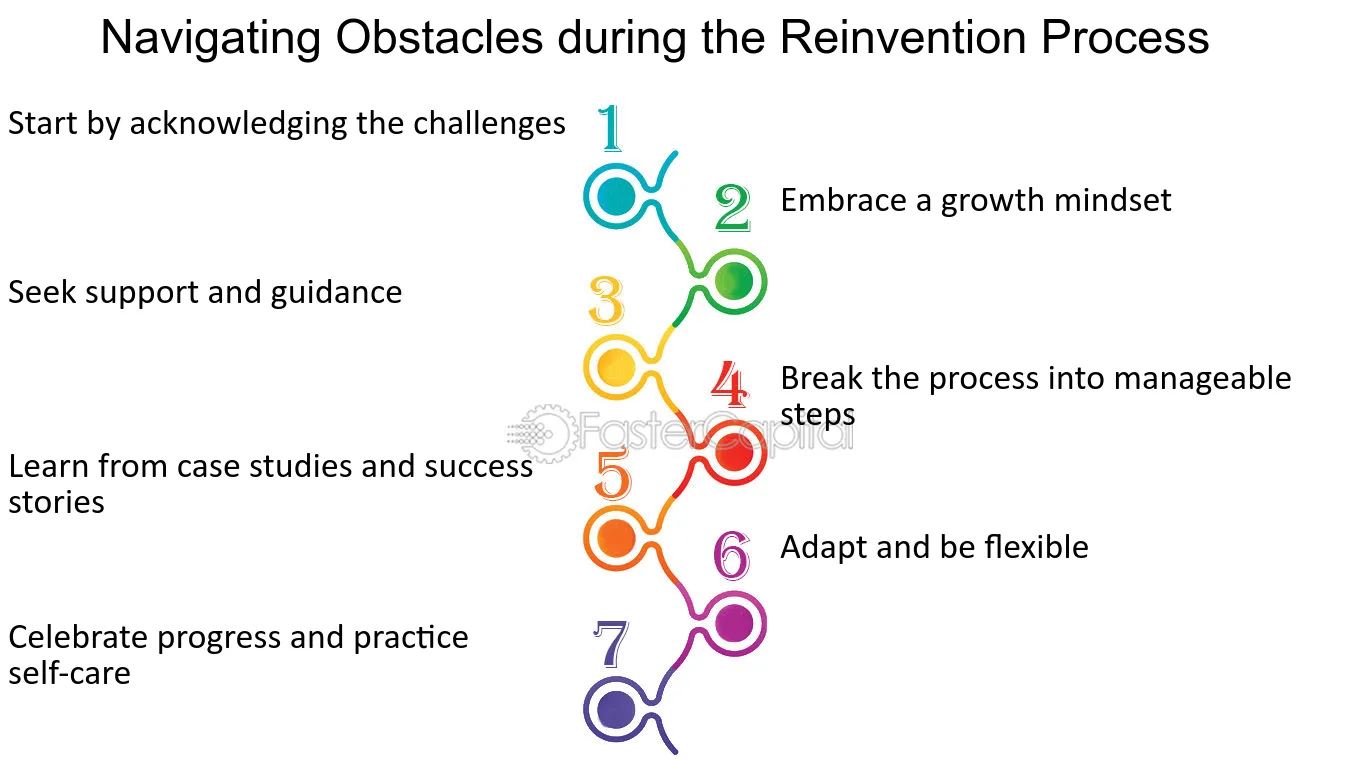
Navigating Obstacles during the Reinvention Process - Reinventing Your Blueprint: The Role of Structural Pivots
51. Navigating Obstacles and Minimizing Losses in High ROI Investments
Investing in high ROI opportunities may seem like an ideal way to maximize cash flow, but it comes with its own set of risks and challenges. Navigating these obstacles and minimizing losses is crucial to ensure a successful investment strategy. In this section, we will explore the various risks and challenges that come with high ROI investments and ways to overcome them.
1. Market Risk:
Market risk refers to the potential for losses due to market fluctuations. High ROI investments often come with a higher level of market risk. Therefore, it is essential to diversify your portfolio to minimize the impact of market fluctuations. Investing in different sectors, asset classes, and geographic regions can help spread the risk and reduce the impact of market volatility.
2. Liquidity Risk:
Liquidity risk is the risk of not being able to sell an asset when needed. High ROI investments, such as private equity or real estate, are often illiquid, meaning they cannot be easily sold. It is crucial to have a plan in place to manage liquidity risk. Investors should have a reserve of liquid assets to meet any unexpected cash flow needs.
3. Operational Risk:
Operational risk refers to the risk of losses due to inadequate or failed internal processes, people, or systems. High ROI investments often require a significant amount of due diligence to ensure that operational risks are minimized. Investors should conduct thorough research and analysis to identify potential operational risks and develop a plan to mitigate them.
4. Regulatory Risk:
Regulatory risk refers to the risk of losses due to changes in regulations or laws. High ROI investments, such as those in emerging markets, may be subject to different regulatory frameworks. It is essential to stay informed about the regulatory environment and any changes that may impact the investment.
5. Reinvestment Risk:
Reinvestment risk refers to the risk of not being able to reinvest cash flows at the same rate of return. High ROI investments may have a finite life, and reinvesting cash flows at the same rate of return may not be possible. Investors should consider reinvestment risk when evaluating high ROI investments and develop a plan to manage it.
When it comes to minimizing losses in high ROI investments, there are several options to consider. One option is to diversify the portfolio to spread the risk. Another option is to invest in assets with a low correlation to the overall market, such as commodities or currencies. Additionally, investors should consider investing in assets with a proven track record of performance and a strong management team.
High ROI investments can be a lucrative way to maximize cash flow, but they come with their own set of risks and challenges. Navigating these obstacles and minimizing losses requires a thorough understanding of the investment and a well-developed plan to manage risk. By diversifying the portfolio, investing in assets with low correlation, and conducting thorough due diligence, investors can minimize losses and maximize returns.
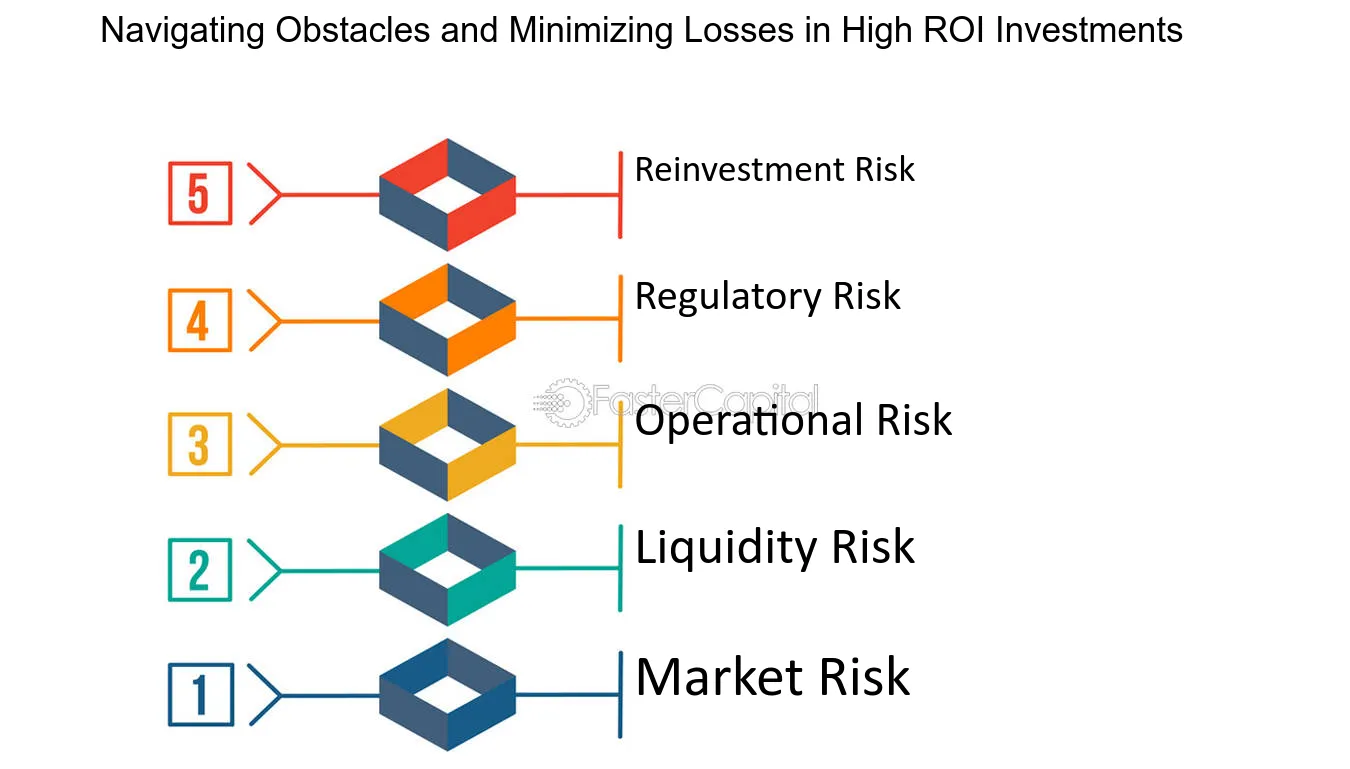
Navigating Obstacles and Minimizing Losses in High ROI Investments - Return on investment: Maximizing Cash Flow through High ROI Investments